Descargar con scribd.com
Descargar con docs.google.com
Sumario.-
En poursuivant votre navigation sur ce site, vous acceptez l'utilisation de cookies. Ces derniers assurent le bon fonctionnement de nos services. En savoir plus.
Une thèse sur Valentin Raspoutine
par Robert Steuckers
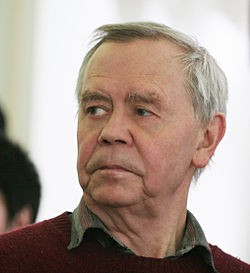 Recension: Günther HASENKAMP, Gedächtnis und Leben in der Prose Valentin Rasputins, Otto Harrassowitz, Wiesbaden, 1990, VII + 302 S., ISBN 3-447-03002-X.
Recension: Günther HASENKAMP, Gedächtnis und Leben in der Prose Valentin Rasputins, Otto Harrassowitz, Wiesbaden, 1990, VII + 302 S., ISBN 3-447-03002-X.
Valentin Grigorevitch Raspoutine, né le 15 mars 1937 en Sibérie, est le petit-fils d’un chasseur de la taïga et de Mariia Guerassimovna qui lui a raconté, pendant son enfance, les contes populaires de sa région. Ce qui lui a donné à jamais le sens de la continuité et de la durée, un goût indélébile pour tout ce qui est “archétype”. Son oeuvre de grand prosateur russe est placée entièrement sous le signe de la “perte de conscience” qui affecte nos contemporains, du passage d’une conscience mythique-intégrative à une attitude totalement démythifiée. Tel est le déficit —la plaie béante— de nos temps modernes. Cette crise doit être dénoncée et combattue. Après la période de stagnation brejnévienne (la “kosnost”), Raspoutine retrouve pleinement son rôle d’“écrivain-prédicateur”, qui va s’engager pour son peuple, afin qu’il retrouve une morale basée sur les acquis de son histoire et de sa tradition. Avec les autres “ruralistes” de la littérature russe contemporaine, il mènera la “guerre civile” des écrivains contre les “libéraux”, c’est-à-dire ceux qui veulent introduire en Russie les idées occidentales et la culture de masse calquée sur le modèle américain. Contre cette vision purement “sociétaire” qui ne reconnaît aucune présence ni récurrence potentielle aux moments forts du passé, qui ignore délibérément toute “saveur diachronique”, Raspoutine et les ruralistes défendent le statut mythique de la nation, révalorisent la pensée archétypique, réhabilitent l’unité substantielle avec les générations passées.
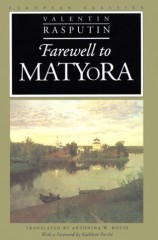 Le slaviste allemand Hasenkamp démontre que cet engagement nationaliste repose sur une “conscience mythique” traditionnelle où il n’y a pas de séparation entre le microcosme et le macrocosme, entre la chose et le signe, la réalité et le symbole. Dans Adieu à Matiora, son plus célèbre roman, l’île qui va être engloutie par le fleuve représente la totalité du monde, sa continuité, qui va être submergée par la pensée calculante, techniciste, administrative. Matiora est la continuité, face au “temps nouveau”, qui déracine les habitants et prépare l’inondation finale. Cette ère nouvelle sera une ère de discontinuité qui claudiquera d’interruption en interruption, de retour furtif à une vague stabilité en nouveau déracinement. Cette fragmentation conduit au malheur et à la dépravation morale. Les axes majeurs de la pensée philosophique de Raspoutine, qui ne s’exprime pas par de sèches théories mais dans des romans poignants, où l’on retrouve des linéaments d’apocalypse ou de Ragnarök, sont: la mméoire et la réalité transcendantale. Derrière la réalité empirique, derrière les misères quotidiennes et la banalité de tous les jours, se profile, pour qui sait l’apercevoir et l’honorer, une réalité supérieure, immortelle. Le monde moderne a voulu faire du passé table rase, a jugé que la mémoire n’était plus une valeur et la faculté de se souvenir n’était plus une vertu. Contre l’idéologie dominante, qui veut nous arracher nos histoires pour nous rendre dociles, l’oeuvre de Raspoutine, sa simplicité poignante et didactique, son universalité et sa russéité indissociables, sont des armes redoutables. A nous de nous en servir, à nous de diffuser son message. Qui est aussi le nôtre.
Le slaviste allemand Hasenkamp démontre que cet engagement nationaliste repose sur une “conscience mythique” traditionnelle où il n’y a pas de séparation entre le microcosme et le macrocosme, entre la chose et le signe, la réalité et le symbole. Dans Adieu à Matiora, son plus célèbre roman, l’île qui va être engloutie par le fleuve représente la totalité du monde, sa continuité, qui va être submergée par la pensée calculante, techniciste, administrative. Matiora est la continuité, face au “temps nouveau”, qui déracine les habitants et prépare l’inondation finale. Cette ère nouvelle sera une ère de discontinuité qui claudiquera d’interruption en interruption, de retour furtif à une vague stabilité en nouveau déracinement. Cette fragmentation conduit au malheur et à la dépravation morale. Les axes majeurs de la pensée philosophique de Raspoutine, qui ne s’exprime pas par de sèches théories mais dans des romans poignants, où l’on retrouve des linéaments d’apocalypse ou de Ragnarök, sont: la mméoire et la réalité transcendantale. Derrière la réalité empirique, derrière les misères quotidiennes et la banalité de tous les jours, se profile, pour qui sait l’apercevoir et l’honorer, une réalité supérieure, immortelle. Le monde moderne a voulu faire du passé table rase, a jugé que la mémoire n’était plus une valeur et la faculté de se souvenir n’était plus une vertu. Contre l’idéologie dominante, qui veut nous arracher nos histoires pour nous rendre dociles, l’oeuvre de Raspoutine, sa simplicité poignante et didactique, son universalité et sa russéité indissociables, sont des armes redoutables. A nous de nous en servir, à nous de diffuser son message. Qui est aussi le nôtre.
(recension parue dans “Vouloir”, n°105-108, juillet-septembre 1993, p. 23).
00:05 Publié dans Littérature | Lien permanent | Commentaires (0) | Tags : russie, littérature, lettres, lettres russes, littérature russe, valentin raspoutine, valentin rasputin |  |
|  del.icio.us |
del.icio.us |  |
|  Digg |
Digg | ![]() Facebook
Facebook
par Luc-Olivier d'Algange
ex: http://aucoeurdunationalisme.blogspot.com
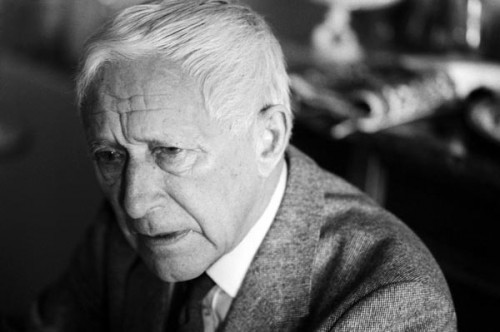
Sur la ligne, nous dit Jünger, « c'est le tout qui est en jeu ». Sur la ligne, nous le sommes au moment où le nihilisme passif et le nihilisme actif ont laissé place au nihilisme accompli. Le site du nihilisme accompli est celui à partir duquel nous pouvons interroger l'essence du nihilisme. Après la destruction des formes, les temps ne sont plus à séparer le bon grain de l'ivraie. Le nihilisme, écrit Nietzsche est « l'hôte le plus étrange », et Heidegger précise, « « le plus étrange parce que ce qu'il veut, en tant que volonté inconditionnée de vouloir, c'est l'étrangeté, l'apatridité comme telle. C'est pourquoi il est vain de vouloir le mettre à la porte, puisqu'il est déjà partout depuis longtemps, invisible et hantant la maison. »
L'illusion du réactionnaire est de croire pouvoir « assainir », alors que l'illusion du progressiste est de croire pouvoir fonder cette étrangeté en une nouvelle et heureuse familiarité planétaire. Or, précise Heidegger: « L'essence du nihilisme n'est ni ce qu'on pourrait assainir, ni ce qu'on pourrait ne pas assainir. Elle est l'in-sane, mais en tant que telle elle est une indication vers l'in-demne. La pensée doit-elle se rapprocher du domaine de l'essence du nihilisme, alors elle se risque nécessairement en précurseur, et donc elle change. »
La destruction, qui est le signe du nihilisme moderne, serait donc à la fois l'instauration généralisée de l'insane et une indication vers l'indemne. Si le poète et le penseur doivent parier sur l'esprit qui vivifie contre la lettre morte, il n'est pas exclu que par l'accomplissement du nihilisme, c'est-à- dire la destruction de la lettre morte, une chance ne nous soit pas offerte de ressaisir dans son resplendissement essentiel l'esprit qui vivifie. Le précurseur sera ainsi celui qui ose et qui change et dont la pensée, à ceux qui se tiennent encore dans le nihilisme passif ou le nihilisme actif, paraîtra réactionnaire ou subversive alors qu'elle est déjà au-delà, ou plus exactement au-dessus.
Comment ne point aveugler l'un des visages de Janus, comment tenir en soi, en une même exigence et une même attention, la crainte, l'espérance, la déréliction et la sérénité ? Il n'est pas vain de recourir à la raison, sous condition que l'on en vienne à s'interroger ensuite sur la raison même de la raison. Que nous dit cette raison agissante et audacieuse ? Elle nous révèle pour commencer qu'il ne suffit pas de reconnaître dans tel ou tel aspect du monde moderne l'essence du nihilisme. La définition et la description du nihilisme, pour satisfaisantes qu’elles paraissent au premier regard, nous entraînent pourtant dans le cercle vicieux du nihilisme lui-même, avec son cortège de remèdes pires que les maux et de solutions fallacieuses. Vouloir localiser le nihilisme serait ainsi lui succomber à notre insu. Cependant l'intelligence humaine répugne à renoncer à définir, à discriminer: elle garde en elle cette arme mais dépourvue de Maître d'arme et d'une légitimité conséquente, elle en use à mauvais escient. Telle est exactement la raison moderne, détachée de sa pertinence onto-théologique. Etre sur la ligne, penser l'essence du nihilisme accompli, c'est ainsi reconnaître le moment de la défaillance de la raison. Cette reconnaissance, pour autant qu'elle pense l'essence du nihilisme accompli ne sera pas davantage une concession l'irrationalité. « Le renoncement à toute définition qui s'exprime ici, écrit Heidegger, semble faire bon marché de la rigueur de la pensée. Mais il pourrait se faire aussi que seule cette renonciation mette la pensée sur le chemin d'une certaine astreinte, qui lui permette d'éprouver de quelle nature est la rigueur requise d'elle par la chose même ».
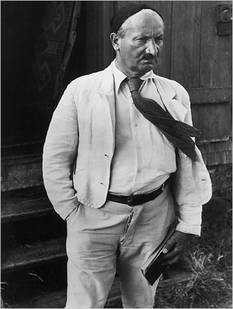 Le Cœur aventureux jüngérien est appelé à se faire précurseur et à suivre « le chemin d'une certaine astreinte ». La raison n'est pas congédiée mais interrogée; elle n'est point récusée, en faveur de son en-deçà mais requise à une astreinte nouvelle qui rend caduque les définitions, les descriptions, les discriminations dont elle se contentait jusqu'alors. « Que l'hégémonie de la raison s'établisse comme la rationalisation de tous les ordres, comme la normalisation, comme le nivellement, et cela dans le sillage du nihilisme européen, c'est là quelque chose qui donne autant à penser que la tentative de fuite vers l'irrationnel qui lui correspond. » A celui qui se tient sur la ligne, en précurseur et soumis à une astreinte nouvelle, il est donné de voir le rationnel et l'irrationnel comme deux formes concomitantes de superstition.
Le Cœur aventureux jüngérien est appelé à se faire précurseur et à suivre « le chemin d'une certaine astreinte ». La raison n'est pas congédiée mais interrogée; elle n'est point récusée, en faveur de son en-deçà mais requise à une astreinte nouvelle qui rend caduque les définitions, les descriptions, les discriminations dont elle se contentait jusqu'alors. « Que l'hégémonie de la raison s'établisse comme la rationalisation de tous les ordres, comme la normalisation, comme le nivellement, et cela dans le sillage du nihilisme européen, c'est là quelque chose qui donne autant à penser que la tentative de fuite vers l'irrationnel qui lui correspond. » A celui qui se tient sur la ligne, en précurseur et soumis à une astreinte nouvelle, il est donné de voir le rationnel et l'irrationnel comme deux formes concomitantes de superstition.
Qu'est-ce qu'une superstition? Rien d'autre qu'un signe qui survit à la disparition du sens. La superstition rationaliste emprisonne la raison dans l'ignorance de sa provenance et de sa destination, et dans sa propre folie planificatrice, de même que la superstition religieuse emprisonne la Théologie dans l'ignorance de la vertu d'intercession de ses propres symboles. L'insane au comble de sa puissance généralise cette idolâtrie de la lettre morte, de la fonction détachée de l'essence qui la manifeste. Aux temps du nihilisme accompli le dire ayant perdu toute vertu d'intercession se réduit à son seul pouvoir de fascination, comme en témoignent les mots d'ordre des idéologies et les slogans de la publicité. Dans sa nouvelle astreinte, le précurseur ne doit pas être davantage enclin à céder à la superstition de l'irrationnel qu'à la superstition de la raison. En effet, souligne Heidegger, « le plus inquiétant c'est encore le processus selon lequel le rationalisme et l'irrationalisme s'empêtrent identiquement dans une convertibilité réciproque, dont non seulement ils ne trouvent pas l'issue, mais dont ils ne veulent plus l'issue. C'est pourquoi l'on dénie à la pensée toute possibilité de parvenir à une vocation qui se tiennent en dehors du ou bien ou bien du rationnel et de l'irrationnel. »
La nouvelle astreinte du précurseur consistera précisément à rassembler en soi les signes et les intersignes infimes qui échappent à la fois au rationalisme planificateur et à l'irrationalisme. La difficulté féconde surgit au moment où l'exigence la plus haute de la pensée, sa requête la plus radicale devient un refus de l'alternative en même temps qu'un refus du compromis. Ne point choisir entre le rationnel et l'irrationnel, et encore moins mélanger ce qu'il y aurait « de mieux » dans l'un et dans l'autre, telle est l'astreinte nouvelle de celui qui consent héroïquement à se tenir sur le méridien zéro du nihilisme accompli. Conscient de l'installation planétaire de l'insane, son attention vers l'indemne doit le porter non vers une logique thérapeutique, qui traiterait les symptômes ou les causes, mais au cœur même de cette attention et de cette attente pour lesquels nous n'avons pas trouvé jusqu'à présent d'autre mots que ceux de méditation et de prière, quand bien même il faudrait désormais charger ces mots d'une signification nouvelle et inattendue.
L'entretien sur la ligne d’Ernst Jünger et de Martin Heidegger ouvre ainsi à la raison qui s'interroge sur ses propres ressources des perspectives qui n'ont rien de passéistes et dont on est même en droit de penser désormais qu'elles seules n'apparaissent pas comme touchées dans leur être même par le passéisme, étant entendu que le passéisme progressiste est peut-être, par son refus de retour critique sur lui-même, et par la méconnaissance de sa propre généalogie, plus réactionnaire encore dans son essence que le passéisme nostalgique ou néoromantique.
L'attention du précurseur, sa théorie, au sens retrouvé de contemplation, sera d'abord un art de ne pas refuser de voir. Quant à l'astreinte nouvelle, elle éveillera la possibilité d'une autre hiérarchie des importances où le vol de l'infime cicindèle n'aura pas moins de sens que les désastres colossaux du monde moderne. " De même, écrit Jünger, les dangers et la sécurité changent de sens". Comment ne pas voir que les modernes doivent précisément à leur goût de la sécurité les pires dangers auxquels ils se trouvent exposés ? Et qu'à l'inverse l'audace, voire la témérité de quelques uns furent toujours les prémisses d'un établissement dans ces grandes et sereines sécurités que sont les civilisations dignes de ce nom ?
L'homme moderne, ne croyant qu'à son individualité et à son corps, désirant d'abord la sécurité de son corps, ne désirant, en vérité, rien d'autre, est l'inventeur du monde où la vie humaine est si dévaluée qu'il n'y a presque plus aucune différence entre les vivants et les morts. C'est bien pourquoi le massacre de millions d'êtres humains dans son siècle "rationnel, démocratique et progressiste" le choque moins que la violence d'un combat antique ou d'une échauffourée médiévale, pour autant que sa sécurité, son individualité ou, dans une plus faible mesure, celles des siens, ont été épargnées. Le nihilisme de sa propre sécurité s'établit dans le refus de voir le nihilisme du péril auquel il n'a cessé de consentir que d'autre que lui fussent livrés, et se livrant ainsi lui-même à leur vindicte. Les Empereurs chinois savaient ce que nous avons oublié, eux qui considéraient leurs armes défensives comme les pires dangers pour eux-mêmes. Les Cœurs aventureux, ou selon la terminologie heideggérienne, les précurseurs, trouveront la plus grande sécurité dans leur consentement même à se reconnaître dans le site du plus grand danger. De même qu'au cœur de l'insane est l'incitation vers l'indemne, au cœur du danger se trouve le site de la plus grande sécurité possible. Comment sortir indemne de l'insane péril (qui prétend par surcroît avoir inventé la sécurité comme Monsieur Jourdain la prose !) où nous a précipité le nihilisme ? Quelle est la ligne de risque ?
Certes, le méridien zéro n'est nullement ce « compteur remis à zéro » dont rêve la sentimentalité révolutionnaire. Ce méridien, s'il faut préciser, n'est point une métaphore de la table rase, ou le site d'un oubli redimant. Le méridien zéro est exactement le lieu où rien ne peut être oublié, où toute sollicitation extérieure répond d'une réminiscence, comme le son répond à la corde que l'on touche, où l'empreinte ne prétend point à sa précellence sur le sceau. Ce qui advient, pas davantage que ce qui fut, ne peut prétendre à un autre titre que celui d'empreinte, le sceau étant l'hors-d'atteinte lui-même: l'indemne qui gît au secret du cœur du plus grand danger. La ligne de risque de la vie et de l'œuvre jüngériennes répond de cette certitude acquise sur la ligne.
Toute interrogation fondamentale concernant la liberté est liée à la Forme. Si le supra-formel, en langage métaphysique, bien l'absolu de la liberté, le propre de ceux que l'hindouisme nomme les libérés vivants, l'informe, quant à lui, est le comble de la soumission. La question de la Forme se tient sur cette ligne critique, sur ce méridien zéro qui ouvre à la fois sur le comble de l'esclavage et sur la souveraineté la plus libre qui se puisse imaginer. Dès Le Travailleur, et ensuite à travers toute son œuvre, Jünger poursuivit, comme nous l'avons vu, une méditation sur la Forme. Or, cette méditation, platonicienne à maints égards, est aussi inaugurale si l'on ose la situer non plus dans l'histoire de la philosophie, comme un moment révolu de celle-ci mais sur la ligne, comme une promesse de franchissement de la ligne. Ce qu'il importe désormais de savoir, c'est en quoi la Forme contient en elle à la fois la possibilité du déclin dans le nihilisme (dont l'étape d'accomplissement serait la confusion de toutes les formes: l'uniformité) et la possibilité d'une recréation de la Forme, voire d'un dépassement de la Forme dans une souveraineté jusqu'ici encore impressentie. Par les figures successivement interrogées du Travailleur, du Rebelle et de l'Anarque, Jünger s'achemine vers cette souveraineté. Pour qu'il y eût une Forme, au sens grec d'Idéa, et non seulement au sens moderne de « représentation », il importe que la réalité du sceau ne soit pas oubliée.
Une lecture extrêmement sommaire des œuvres de Jünger et de Heidegger donnerait à penser que lorsque Heidegger tenterait un dépassement, voire un renversement ou une « déconstruction » du platonisme, Jünger, lui s'en tiendrait à une philosophie strictement néo-platonicienne. Le dépassement heideggérien de la métaphysique, qui tant séduisit ses disciples français « déconstructivistes » (et surtout acharnés, sous l'influence de Marx, à détacher toute philosophie de ses origines théologiques) laissa, et laisse encore, d'immenses carrières à l'erreur. Les modernes qui instrumentalisent l'œuvre de Heidegger en vue d'un renversement du platonisme et de la métaphysique méconnaissent que, pour Heidegger, dépassement de la métaphysique signifie non point destruction de la métaphysique mais bien couronnement de la métaphysique. Il s'agit moins, en l'occurrence, de se libérer de la métaphysique que de libérer la métaphysique.
Il n'est pas question de déconstruire la métaphysique, pour en faire table rase, mais d'en établir la souveraineté en la dépassant par le haut, c'est à dire par la question de l'être. Pour un grand nombre d'exégètes français la différence essentielle entre une antimétaphysique et une métaphysique couronnée demeure obscure. Heidegger ne reproche point à la métaphysique de s'interroger sur l'essence, il lui impose au contraire, comme une astreinte nouvelle, de s'interroger plus essentiellement encore sur l'essence de son propre déploiement dans le Logos. A la métaphysique déclinante des théologies exotériques, des sciences humaines, de la didactique, de la Technique et du matérialisme, Heidegger oppose une interrogation essentielle sur le déclin lui-même.
En établissant clairement son dépassement de la métaphysique comme un couronnement de la métaphysique, Heidegger suggère qu'il y a bien deux façons de dépasser, l'une par le bas (qui serait le matérialisme) l'autre par le haut, et qui est de l'ordre du couronnement. Loin de vouloir « en finir », au sens vulgaire, avec la métaphysique, Heidegger entend en rétablir sa royauté. Par l'interrogation incessante sur les fins et sur la finalité de la métaphysique, Heidegger œuvre à la recouvrance de la métaphysique et non à sa solidification. Qu'est-ce qu'une métaphysique couronnée ? De quelle nature est ce dépassement par le haut ? Que le déclin de la métaphysique eût conduit celle-ci de la didactique à la superstition de la technique, du nihilisme passif jusqu'au nihilisme accompli, en témoignent les théories modernes du langage et l'humanisme qui ne voit en l'homme qu'un animal « amélioré » par le langage. Ce que Heidegger reproche à ces théories du langage et de l'homme est d'ignorer la question de l'essence de l'homme et de l'essence du langage, et d'être en somme, des métaphysiques oublieuses de leurs propres ressources.
Le dialogue entre Jünger et Heidegger, que le bon lecteur ne doit pas circonscrire à l'échange hommagial et épistolaire sur le passage de la ligne mais étendre aussi aux autres œuvres, prend tout son sens à partir des méditations jüngériennes sur le langage et l'herméneutique. En effet, loin de rompre avec la source théologique, Heidegger en fut le revivificateur éminent par l'art herméneutique qu'il ne cessa d'exercer au contact des œuvres anciennes, les présocratiques, Aristote, ou modernes, Hölderlin, Trakl, ou Stephan George. De même Jünger, en amont des gloses, des analyses et des explications poursuivit le dessein de retrouver, dans les signes et les intersignes, la trace des dieux enfuis. Entre les noms des dieux et leurs puissances, entre l'empreinte et le sceau, entre le langage et la langue, entre ce que doit être dit et ce qui est dit, l'Auteur s'établit avec une inquiétude créatrice. Ce serait se méprendre grandement sur la méditation sur la Forme qui est à l'œuvre dans les essais de Jünger que de n'y voir qu'une reproduction d'un néoplatonisme acquis et défini une fois pour toute, et réduit, pour ainsi dire à des schémas purement scolaires ou didactiques. Se tenir sur la ligne, c'est déjà refuser d'être dans la pure représentation. Entre la présence et son miroitement se joue toute véritable et féconde inquiétude spéculative.
Luc-Olivier d’Algange
00:05 Publié dans Philosophie, Révolution conservatrice | Lien permanent | Commentaires (0) | Tags : ernst jünger, martin heidegger, heidegger, philosophie, allemagne, révolution conservatrice, lettres, littérature, littérature allemande, lettres allemandes |  |
|  del.icio.us |
del.icio.us |  |
|  Digg |
Digg | ![]() Facebook
Facebook
Chronique littéraire: Arthur C. Clarke, La Cité et les Astres, 1956.
Ex: http://cerclenonconforme.hautetfort.com

Le Paradis Galactique perdu
Ecrit il y a plus d’un demi siècle, la Cité et les Astres est un roman-clé de la science-fiction dite « classique ». C’est aussi l’un des ouvrages les plus riches d’Arthur C. Clarke, l’auteur britannique de 2001, l’Odyssée de l’Espace.
Dans un futur extrêmement lointain, Diaspar – anagramme de Paradis - est le dernier bastion d’humanité sur terre. Une bonne partie de l’univers a été ravagé par une guerre entre empires galactiques, et les rares hommes survivants ont constitué une sorte de base autonome durable ultime au cœur de la vaste étendue désertique que constitue désormais la Terre, à mi-chemin entre Matrix et la Cité idéale de Brunelleschi. Un jeune adolescent un peu à part, Alvin, choisit de se détourner du petit confort ultime de Diaspar pour diriger son regard vers les Astres, vers les contrées lointaines, qui terrifient ses congénères…
Jusque-là, rien de bien original. Et pourtant, il me semble qu’on aurait tort de passer son chemin.
Ce qui frappe dans cet ouvrage, c’est tout d’abord le foisonnement des sujets abordés. On y trouve en effet la plupart des thèmes chers aux auteurs de SF classiques : l’immortalité, l’eugénisme, la mise en question du divin, mais aussi un certain nombre d’éléments propres au space-opéra : les robots, les extra-terrestres et autres envahisseurs, les pouvoirs télépathiques, télékinésiques, la téléportation, etc., le tout mâtiné d’un certain nombre d’éléments issus des civilisations indo-européenne : l’ aspect cyclique du temps, la philosophie, l’omniprésence de l’art - mosaïques, sculptures intégrées à l’espace publique -, permanence de la vie culturelle, de l’architecture qui défie les âges…
A première vue, Diaspar se présente comme une sorte de société idéale : plutôt qu’à un monde post-apocalyptique, on est confronté à un univers propret, auto-suffisant et quasi-immuable, caractérisé par une sorte d’état de béatitude perpétuel. La guerre, la maladie, et même la mort elle-même ont été éradiqués.
Même si le terme n’est jamais mentionné directement, on ne peut s’empêcher de songer à un retour à l’Âge d’or, après plusieurs millénaires d’une interminable décadence intergalactique, ayant atteint son paroxysme avec la destruction de la majorité de l’humanité par de mystérieux Envahisseurs : ainsi la cité s’organise-t-elle autour d’une colline, réminiscence de la montagne sacrée, de l’axe cosmique, du nombril de la terre[1], au sommet de laquelle se trouve un édicule abritant la statue du Créateur de la cité, un peu à la manière d’un temple ; de plus, la réincarnation et la réminiscence des vies antérieures assure virtuellement sur Diaspar l’immortalité, et donne d’ailleurs à la mort un visage totalement différent de celui qu’on lui trouve habituellement : certains protagonistes, dans le livre de Clarke, se donnent volontairement la mort pour échapper à tout problème qui leur semble de trop grande envergure, presque sans état d’âme, parce qu’ils sont assurés de se réincarner plus tard. L’homme n’ayant plus à craindre la mort, les problèmes existentiels récurrents subissent des inflexions monumentales. On trouve aussi le thème de la prééminence de l’esprit sur la matière, puisque les hommes de Diaspar peuvent créer et détruire à volonté tous les objets de la vie quotidienne, par la seule force de la pensée.
Bien que Clarke ne fournissent que peu de détails quant à ces étranges pouvoirs, il semble que toutes ces mystérieuses facultés psychiques soient fournis par une sorte de processeur hypertrophié, tout à la fois cœur et cerveau de cette cité idéale aux allures de Paradis perdu et pourtant dystopique à maints égards…
Le versant dystopique
Car ce mystérieux Âge d’or n’aurait probablement pas trouvé grâce aux yeux d’un Guénon ou d’un Evola. La première dissonance perceptible dans l’ouvrage de Clarke consiste en une phobie insurmontable pour tous les habitants de Diaspar : celle de l’éventualité même de se confronter à quoi que ce soit ayant un rapport avec le monde extérieur à la cité. Les grands espaces inspirent aux hommes de Diaspar une peur qui semble venue du fond des âges. Ce premier élément discordant est très révélateur de la mentalité d’une société qui pense avoir atteint une sorte d’état de grâce en empruntant la voie de la technologie. Car au-delà des apparences, Diaspar n’est rien d’autre qu’une société régie en totalité par les seuls moyens matériels. Les robots sont quasi-invisibles mais omniprésents, et assurent le bon fonctionnement de la Cité ; un cerveau-machine, appelé Calculatrice Centrale, fait office de divinité locale - et universelle en raison du caractère unique de Diaspar. Les hommes de Diaspar se sont donné les moyens matériels de maîtriser à la perfection leur microcosme et chacun de ses composants, et il semble donc tout naturel que ce soit une machine omnipotente qui leur tienne lieu d’entité divine.
Le confort de tous les instants implique un autre phénomène : la seule notion d’effort physique, et partant, tout ce qui peut constituer une aventure authentique, est devenue étrangère aux habitants de la cité ; le héros du roman en fera d’ailleurs l’expérience au cours de ses pérégrinations. Dès lors un grand nombre de qualités humaines parfois triviales mais absolument essentielles - le courage, la patience, le dévouement… ne trouve plus de champ d’expression. Il en va de même des liens entre les hommes, qui se trouvent totalement dénaturés : immortels, les habitants de Diaspar se connaissent ou se reconnaissent tous, mais ne sont même pas en mesure d’éprouver l’authenticité des liens qui semblent pourtant unir certain d’entre eux : l’amitié comme l’amour sont sur Diaspar des abstractions supplantées par des éléments plus directement sensibles et superficiels, comme la simple attirance physique par exemple.
Les dissemblances avec la société traditionnelle apparaissent à mesure que l’on progresse dans la lecture de La Cité et les Astres. La conception de la cellule familiale, par exemple, est réduite à peau de chagrin : la procréation elle-même n’a plus de finalité génésique ; la maternité n’existe plus, et l’éducation à proprement parler se réduit à une simple formalité, les individus de Diaspar sortent préfabriqués idéalement d’un « temple de la Création », déjà physiquement âgés d’une vingtaine d’années, et les parents de chaque individu sont attribués de manière aléatoire.
Ajoutons qu’au cours du roman, l’auteur nous gratifie d’une confrontation particulièrement éclairante avec un autre type de société régie par un système de valeurs radicalement différent, ce qui a le mérite de procurer plus de profondeur encore au propos, et de donner un second souffle à l’intrigue.
Un bon exemple de roman de science-fiction intelligent
 Le microcosme que Clarke nous fait entrevoir semble donc idéal, et fondé en apparence sur un système traditionnel ; pourtant il ne faut pas longtemps pour découvrir au contraire une société hédoniste, nombriliste et dont la vanité est à peine voilée par les avancées technologiques éblouissantes, qui agissent comme autant de narcotiques sur la conscience de chacun. Bien à l’abri au cœur de leur petit monde contemplatif, esthétisant, intellectualisant, désacralisé au possible, aux antipodes des protagonistes de la République du Mont Blanc de Saint Loup, les habitants de Diaspar sont des « super-hommes » sur le plan physique ou même culturel, mais sont à des années-lumière du surhomme de Nietzsche. Une vie passée à méditer et à créer n’a aucun sens, aucune valeur, si rien ne vient mettre quoi que ce soit en péril, si rien ne vient troubler la quiétude égocentrique de l’homme, car c’est seulement lorsqu’il est confronté aux difficultés que celui-ci est capable de s’élever au-dessus de sa médiocre condition.
Le microcosme que Clarke nous fait entrevoir semble donc idéal, et fondé en apparence sur un système traditionnel ; pourtant il ne faut pas longtemps pour découvrir au contraire une société hédoniste, nombriliste et dont la vanité est à peine voilée par les avancées technologiques éblouissantes, qui agissent comme autant de narcotiques sur la conscience de chacun. Bien à l’abri au cœur de leur petit monde contemplatif, esthétisant, intellectualisant, désacralisé au possible, aux antipodes des protagonistes de la République du Mont Blanc de Saint Loup, les habitants de Diaspar sont des « super-hommes » sur le plan physique ou même culturel, mais sont à des années-lumière du surhomme de Nietzsche. Une vie passée à méditer et à créer n’a aucun sens, aucune valeur, si rien ne vient mettre quoi que ce soit en péril, si rien ne vient troubler la quiétude égocentrique de l’homme, car c’est seulement lorsqu’il est confronté aux difficultés que celui-ci est capable de s’élever au-dessus de sa médiocre condition.
Toute ressemblance avec une société existante ou ayant existé n’est donc plus tout à fait fortuite : l’idéal d’une société capitaliste, fondée sur la soumission de l’essentiel aux seuls impératifs économiques, censés apporter le Salut à l’homme occidental par le confort matériel, sécularisée jusqu’à la corde, ne constitue-t-il pas un prototype de Diaspar ?
Les parallèles que l’on pourrait établir avec le monde actuel ne s’arrêtent pas là : on peut lire aussi La Cité et les Astres comme un prolongement de 1984, puisque la société qu’on y trouve est bâtie sur une série de mensonges complaisamment entretenus par un système donné. Tout comme dans 1984, un seul individu, le personnage principal de l’œuvre, semble avoir les yeux décillés. C’est à partir de son expérience, dissidente, déstabilisante, comme le serait un virus dans un système informatique, que se développe le roman.
Plusieurs éléments du roman de Clarke renvoient au thème de la religion, parfois d’une manière très allusive ; de façon générale on peut remarquer que l’auteur met en cause, si ce n’est la spiritualité dans son ensemble, au moins l’idéal dogmatique des religions révélées. Je ne vous en dis pas davantage afin de ne pas déflorer ce qui est sans doute l’un des passages les plus surprenants et les plus inventifs de tout le roman, mais je ne ferais pas preuve d’une grande honnêteté en présentant ce livre comme un plaidoyer pour un retour à la spiritualité. A mon avis Clarke a plutôt choisi dans cet ouvrage d’insister sur l’importance vitale de l’éducation, de l’épreuve, et d’autres vertus propres à l’homme – ce qui, dans le fond, n’a rien de théologique, mais présente au moins le mérite de faire appel à un ensemble de valeurs supérieures.
L’auteur nous livre, au final, une vision relativement positive de ce que peut devenir l’homme dans une société hypermatérialiste, puisque d’une part la société de Diaspar échappe à la guerre de tous contre tous, et que d’autre part, à l’inverse de ce que l’on peut lire dans certains classiques d’anticipation tels que 1984 ou Farenheit 451, on trouve sur Diaspar des aspects de vie culturelle ou philosophique. Mais les habitants de cette petite utopie sont dépourvus de vitalité, de sève, de force intérieure ; la vie sur Diaspar se développe exclusivement sur le plan horizontal. Ce roman met en scène de façon assez intelligente l’éradication de la troisième dimension de l’homme, qui fait que chaque individu devient non pas un être humain doté de sens critique, mai un logiciel incarné.
Lyderic
00:05 Publié dans Littérature, Livre, Livre | Lien permanent | Commentaires (0) | Tags : littérature, lettres, lettres anglaises, littérature anglaise, arthur c. clarke, science-fiction |  |
|  del.icio.us |
del.icio.us |  |
|  Digg |
Digg | ![]() Facebook
Facebook
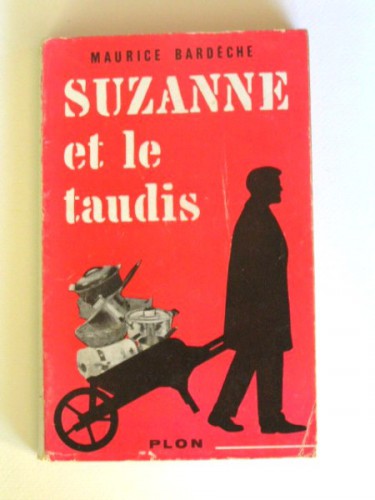
Chronique littéraire: Maurice Bardèche, Suzanne et le Taudis, Plon, 1957
Ex: http://cerclenonconforme.hautetfort.com
« Je rendais grâce au ciel d’avoir fait de moi un cuistre obscur. Et aussi de m’avoir donné un taudis d’une pièce et demie, quand la moitié de l’Europe logeait dans des caves. »
1 – Maurice Bardèche et la politique
2 – Le Taudis, frêle esquif au milieu des flots tumultueux
3 – Un récit sur la condition de l’écrivain dissident
1 – Maurice Bardèche et la politique
 La production littéraire de Maurice Bardèche ayant trait à la politique, radicale dans son fond et souvent très attrayante dans sa forme, n’est pas le fruit de l’assimilation particulièrement réussie de la pensée d’illustres prédécesseurs maurassiens, ni même la somme d’un nombre quelconque de réflexions antérieures, forgées à chaud à cette époque désormais révolue où l’expression « presse d’opinion » avait encore un sens. Au contraire, comme le révèle Jacques Bardèche, son propre fils, dans l’entrevue qu’il a bien voulu accorder à nos camarades de MZ récemment, Maurice Bardèche a commencé à vraiment s’intéresser à la politique à partir d’un moment historique bien précis : l’exécution de son ami et beau-frère Robert Brasillach, le 6 février 1945. De fil en aiguille, la pensée politique de Bardèche a donc émergé en réaction à un certain nombre d’événements, qu’il juge insupportables : l’exécution sommaire et injustifiée de son ami, les horreurs de l’épuration, le climat d’hypocrisie exacerbée d’après-guerre… Pour autant, jamais la plume de Bardèche n’accouche de propos haineux, contrairement à ce que laisse souvent entendre une certaine littérature engagée à gauche. Bien loin des pamphlets outranciers de Céline, des présages sombres et du pessimisme de Drieu, des intransigeances de Rebatet ou de Coston, la prose de Bardèche invite souvent le lecteur à entrevoir des rivages plus sereins : la recherche d’une forme d’équilibre, de justice, ou tout simplement de common decency, pour reprendre la formule d’Orwell. La pensée de Bardèche, c’est peut-être d’abord l’expression du bon sens appliquée à la politique. C’est un véritable antidote à la langue de bois.
La production littéraire de Maurice Bardèche ayant trait à la politique, radicale dans son fond et souvent très attrayante dans sa forme, n’est pas le fruit de l’assimilation particulièrement réussie de la pensée d’illustres prédécesseurs maurassiens, ni même la somme d’un nombre quelconque de réflexions antérieures, forgées à chaud à cette époque désormais révolue où l’expression « presse d’opinion » avait encore un sens. Au contraire, comme le révèle Jacques Bardèche, son propre fils, dans l’entrevue qu’il a bien voulu accorder à nos camarades de MZ récemment, Maurice Bardèche a commencé à vraiment s’intéresser à la politique à partir d’un moment historique bien précis : l’exécution de son ami et beau-frère Robert Brasillach, le 6 février 1945. De fil en aiguille, la pensée politique de Bardèche a donc émergé en réaction à un certain nombre d’événements, qu’il juge insupportables : l’exécution sommaire et injustifiée de son ami, les horreurs de l’épuration, le climat d’hypocrisie exacerbée d’après-guerre… Pour autant, jamais la plume de Bardèche n’accouche de propos haineux, contrairement à ce que laisse souvent entendre une certaine littérature engagée à gauche. Bien loin des pamphlets outranciers de Céline, des présages sombres et du pessimisme de Drieu, des intransigeances de Rebatet ou de Coston, la prose de Bardèche invite souvent le lecteur à entrevoir des rivages plus sereins : la recherche d’une forme d’équilibre, de justice, ou tout simplement de common decency, pour reprendre la formule d’Orwell. La pensée de Bardèche, c’est peut-être d’abord l’expression du bon sens appliquée à la politique. C’est un véritable antidote à la langue de bois.
Suzanne et le Taudis s’inscrit parfaitement bien dans cette forme littéraire très particulière, issue d’une radicalité qui ne sacrifie jamais à l’outrance ou à la provocation. Il en résulte un véritable pamphlet dans un gant de velours
2 - Le Taudis, frêle esquif au milieu des flots tumultueux
D’un point de vue formel, Suzanne et le Taudis se présente comme un récit plein de saveurs axé sur les conditions matérielles de Maurice Bardèche et de sa femme, Suzanne, la sœur de Robert Brasillach, après que le couple, qui habitait jusqu'alors avec celui-ci, se soit vu dépossédé de son appartement, "réputé être indispensable aux nécessités de la Défense nationale" au moment de la Libération.
De logis insalubre en appartement de fortune, en passant, bien sûr, par la case prison, sans jamais d'atermoiements, toujours avec un ton caustique, Bardèche nous livre un florilège de souvenirs où l’on entrevoit pêle-mêle d’indolentes femmes de chambres, de vertueux jeunes garçons animés d’idéaux maudits, d’improbables compagnons de cellules, mais aussi de bien espiègles marmots.
On croise au fil des pages de nombreux intellectuels plus ou moins proches de Bardèche : François Brigneau, Roland Laudenbach, le célèbre dessinateur Jean Effel, Marcelle Tassencourt et Thierry Maulnier, Henri Poulain, ou encore Marcel Aymé, à propos duquel Bardèche écrit : « il a l’air d’un saint de pierre du douzième siècle. Il est long, stylisé, hiératique, il s’assied tout droit, les mains sagement posées sur les genoux comme un pharaon et il fait descendre sur ses yeux une sorte de taie épaisse pour laquelle le nom de paupière m’a toujours paru un peu faible ». Cette icône byzantine incarnée, sans partager nécessairement les idées politiques de Bardèche, engage pourtant une campagne en faveur de celui-ci à l’occasion de son procès, dans un article publié dans Carrefour le 26 mars 1952, intitulé « La Liberté de l’écrivain est menacée ».
On découvre aussi dans ce roman, bien entendu, Suzanne, toute entière dévouée à l'éducation de ses enfants, fière, pragmatique, essayant tant bien que mal d'endiguer le flot continuel de trouvailles plus ou moins bien venues de la part de sa progéniture, au milieu des intellectuels pas toujours fréquentables que Bardèche recevait parfois chez lui. A ce titre, on pourra louer la lucidité de l’auteur quant aux travers récurrents et indéboulonnables des individus, parfois tout à fait valeureux mais bien trop souvent en dehors du réel, qui se réclamaient du fascisme encore après la guerre. Bardèche fustige leurs travers d'alcooliques ou leurs élans despotiques sans pour autant leur tourner le dos, à aucun moment.
A travers ces tranches de vie tour à tour drôles, touchantes, poignantes, Maurice Bardèche, de son style limpide, dresse l’autoportrait d’un écrivain voué à l’exclusion et à la misère, un homme sincère et droit dans ses bottes, volontiers porté sur l’autodérision, terriblement humain, au fond.
3 – Un récit sur la condition de l’écrivain dissident
Maurice Bardèche aurait pu poursuivre la très belle carrière qu’il s’était taillée avant la guerre. Successivement élève de ENS, agrégé de Lettres, docteur ès Lettres, professeur à la Sorbonne puis à l’université de Lille, on lui doit d’admirables ouvrages encore aujourd’hui unanimement reconnus sur Balzac, Flaubert, Stendhal, Bloy et Céline.
En mettant son talent au service d’une cause, Bardèche sait qu’il ne retrouvera jamais le confort matériel, la stabilité, la quiétude de sa vie d’autrefois. A travers Suzanne et le Taudis, Bardèche nous laisse entrevoir ce que la condition des hommes, et plus particulièrement des écrivains, qui osent se compromettre, peut avoir d’instable et de précaire. Le système a bien senti que la plume de Bardèche cherchait à lui chatouiller le menton ; il a donc tout mis en oeuvre, non pas seulement pour ôter cette plume, mais aussi pour rendre l'existence de celui qui la maniait aussi inconfortable que possible.
Il est très intéressant de constater qu’à la fin de son ouvrage, paru en 1957, Bardèche invoque les noms de Bernanos, de Maurras, de Péguy, et aussi de Céline. Il reconnait en effet chez ces écrivains une forme d’engagement absolu, inconditionnel, qui prévaut sur les contingences quotidienne. Or, le même Céline finit par tomber en disgrâce aux yeux de Bardèche, comme on l’apprend dans la biographie remarquable qu’il lui consacre en 1986. Bardèche confirme sa prise de position à l’occasion de son apparition sur le plateau de la mémorable émission d’Apostrophes, le 3 avril 1987, devant un BHL qui manque de s’étrangler d’indignation – mais pas pour prendre la défense de Céline, comme vous pouvez l’imaginer.
Pourquoi cette soudaine volte-face de la part d’un écrivain d’ordinaire si constant dans ses choix ? Il faut dire que le professeur Destouches a bien changé, entre les prises de positions franchement assumées de Voyage au Bout de la Nuit et la surenchère stylistique de Féerie pour une autre fois, dans lequel Céline choisit d’endosser le rôle de la victime qu’on voue aux feux de la Géhenne. On imagine aisément que les persécutions modernes aient été difficiles à supporter pour les écrivains modernes à contre-courant des idées reçues, et bien loin de nous l’idée de jeter la pierre à l’une ou l’autre de ces figures illustres. Bardèche pourtant, dans son dénuement quasi monacal, apparait dans la tourmente avec un éclat bien différent de celui de Céline, exilé au Danemark, tout engoncé, à la fin de sa vie, dans un nombrilisme maladif.
Maurice Bardèche me rappelle toujours Diogène, même si l’auteur de Suzanne et le Taudis est peut-être un peu trop bonne pâte pour être un authentique cynique. Le taudis de l’un valait bien le tonneau de l’autre, en tout cas, et l’image résume fort bien le propos du livre, posé sous forme de morale à la fin de l’ouvrage, mais que les militants d’aujourd’hui devraient sans doute méditer comme une problématique essentielle du combat qu’ils mènent aujourd’hui : celui qui ne pratique pas la langue de bois et qu’anime le désir de lutter contre le système doit s’attendre au retour de flamme. Adopter la position d’un dissident comporte des risques qu’il faut avoir le cran d’assumer, sans chercher à se réfugier derrière de fallacieux prétextes…
Sans aller jusqu’à prendre le radicalisme de Bardèche pour un modèle absolu, on peut lire Suzanne et le Taudis comme une belle leçon d’humilité, et se souvenir que l’engagement le plus total jeté à la face de tous sur Facebook ne vaut strictement rien si c’est une intransigeance de façade qui ne trouve jamais à s’exprimer dans la vie quotidienne.
Lyderic
00:05 Publié dans Littérature, Livre, Livre | Lien permanent | Commentaires (0) | Tags : littérature, lettres, lettres françaises, littérature française, maurice bardèche |  |
|  del.icio.us |
del.icio.us |  |
|  Digg |
Digg | ![]() Facebook
Facebook
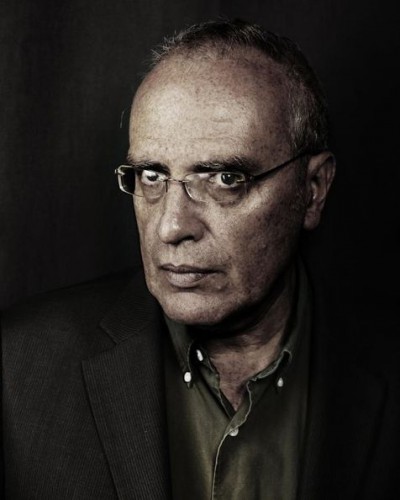
Richard Millet über Terrorismus und Literatur
Martin Lichtmesz
Ex: http://www.sezession.de
(Im Netz-Tagebuch veröffentlicht am 27. November 2012, jetzt wieder aktuell aufgrund einer Diskussion über die eben auf Deutsch erschienen Essays Richard Millets [2])
Unmittelbar nach der Tat bezeichnete der deutsche Komponist Karlheinz Stockhausen den Terroranschlag vom 11. September 2001 als „das größte Kunstwerk, was es je gegeben hat“. Den Zusatz „jetzt müssen Sie alle Ihr Gehirn umstellen“ vorausgeschickt, sagte er im Wortlaut:
Daß also Geister in einem Akt etwas vollbringen, was wir in der Musik nie träumen könnten, daß Leute zehn Jahre üben wie verrückt, total fanatisch, für ein Konzert. Und dann sterben. Und das ist das größte Kunstwerk, das es überhaupt gibt für den ganzen Kosmos. Stellen Sie sich das doch vor, was da passiert ist. Das sind also Leute, die sind so konzentriert auf dieses eine, auf die eine Aufführung, und dann werden fünftausend Leute in die Auferstehung gejagt. In einem Moment. Das könnte ich nicht. Dagegen sind wir gar nichts, also als Komponisten. … Ein Verbrechen ist es deshalb, weil die Menschen nicht einverstanden waren. Die sind nicht in das Konzert gekommen. Das ist klar. Und es hat ihnen niemand angekündigt, ihr könntet dabei draufgehen.
Stockhausen kam damit trotz großer Empörung gerade noch davon – als Abgesandten des Sirius [3] schützte ihn die Narrenfreiheit des Avantgardisten. Kurz darauf erregte auch der postmoderne Philosoph Jean Baudrillard [4] erhebliche Irritation, als er in einem Artikel für die Tageszeitung Le Monde den Terroranschlag als eine Art Hyper-Event, als „Mutter aller Events“ beschrieb. Während noch alle Welt unter Schock stand, und in Deutschland betappert „Wir sind alle Amerikaner!“ gestammelt wurde, versuchte Baudrillard, die Tat mit kaltem Auge als Menetekel und Symbol zu lesen, als Ernte der Drachensaat eines selbstzerstörerischen Westens.
Der Spiegel interviewte [5] Baudrillard zu diesen Thesen:
SPIEGEL: Monsieur Baudrillard, Sie haben die Attentate vom 11. September in New York und Washington als das „absolute Ereignis“ beschrieben. Sie haben die USA beschuldigt, durch ihre unerträgliche hegemoniale Übermacht den unwiderstehlichen Wunsch nach ihrer Zerstörung zu wecken. Jetzt, wo die Herrschaft der Taliban kläglich zusammengebrochen ist, Bin Laden nichts mehr als ein gehetzter Flüchtling ist, müssen Sie nicht alles widerrufen?
Baudrillard: Ich habe nichts verherrlicht, niemanden angeklagt und nichts gerechtfertigt. Man darf den Botschafter nicht mit seiner Kunde verwechseln. Ich bemühe mich, einen Prozess zu analysieren: den der Globalisierung, die durch ihre schrankenlose Ausdehnung die Bedingungen für ihre eigene Zerstörung schafft.
SPIEGEL: Lenken Sie damit nicht einfach ab von der Tatsache, dass identifizierbare Verbrecher und Terroristen für die Anschläge verantwortlich sind?
Baudrillard: Natürlich gibt es handelnde Akteure, aber der Geist des Terrorismus und der Panik reicht weit über sie hinaus. Der Krieg der Amerikaner konzentriert sich auf ein sichtbares Objekt, das sie zerschmettern möchten. Doch das Ereignis vom 11. September in all seiner symbolischen Bedeutung lässt sich so nicht auslöschen. Die Bomben auf Afghanistan sind eine völlig unzulängliche Ersatzhandlung.
SPIEGEL: Warum können Sie nicht einfach akzeptieren, dass die Zerstörung des World Trade Center die willkürliche, irrationale Tat einiger verblendeter Fanatiker war?
Baudrillard: Eine gute Frage, aber selbst wenn es sich um eine bloße Katastrophe gehandelt hätte, bliebe die symbolische Bedeutung des Ereignisses erhalten. Nur so erklärt sich auch seine Faszination. Hier ist etwas geschehen, das bei weitem den Willen der Akteure übersteigt. Es gibt eine universelle Allergie gegen eine endgültige Ordnung, gegen eine endgültige Macht, und die Zwillingstürme des World Trade Center verkörperten diese endgültige Ordnung in vollkommener Weise.
SPIEGEL: Demnach erklären Sie den terroristischen Wahn als unausweichliche Reaktion auf ein System, das selbst größenwahnsinnig geworden ist?
Baudrillard: Das System selbst in seinem totalen Anspruch hat die objektiven Bedingungen dieses furchtbaren Gegenschlags geschaffen. Der immanente Irrsinn der Globalisierung bringt Wahnsinnige hervor, so wie eine unausgeglichene Gesellschaft Delinquenten und Psychopathen erzeugt. In Wahrheit sind diese aber nur die Symptome des Übels. Der Terrorismus ist überall, wie ein Virus. Er braucht Afghanistan nicht als Heimstatt.
Irgendwo in der Mitte zwischen Baudrillard und Stockhausen stossen wir auf den österreichischen Künstler und Medientheoretiker Peter Weibel, [6] der vor einem Jahr in einem Interview mit dem Standard das Auftreten von Amokläufern und Attentätern in Europa als Symptome eines zerfallenden Systems deutete:
Das Problem ist: Je länger es dauert, bis das System implodiert, desto höher sind die Kosten. Die Armut wird steigen, damit steigt in der Gesellschaft das Konfliktpotential. Denken wir doch nur an die Attentate in Norwegen und Lüttich. Man kann es sich einfach machen und sagen: Anders Brevik und Nordine Amrani sind geisteskranke Individuen. Aber diese Attentäter nahmen Tendenzen, Slogans, Gedankengut auf. Brevik hat ein Manifest mit 1500 Seiten geschrieben. Und durch ihre psychische Kondition wurde dieses Gedankengut verzerrt. Amrani und Brevik hätten es aber nicht verzerren können, wenn nicht etwas zum Verzerren da gewesen wäre. Jetzt versucht man, Menschen wie Brevik zu isolieren – und übersieht, dass das Pathologische nicht in ihnen, sondern in der Gesellschaft ist. Sie sind nur das Fieberthermometer. Wenn wir nicht bald eine Lösung finden, werden solche Attentate zunehmen. Und das wäre für mich ein Symptom für die sich abzeichnende Instabilität des Systems.
Weibel ist ein Veteran des „Wiener Aktionismus“ [7]- man begegnet ihm auch als Gesprächspartner Lutz Dammbecks [8] in dessen legendärer Dokumentarstudie „Das Meisterspiel“ (1998), die unter anderem die alte Frage der Avantgarde nach dem Aufbrechen und Sprengen der traditionellen Grenzen der Kunst umkreiste.
Im Zentrum des Films stand ein Akt von ästhetischem „Terrorismus“: Ein unbekannter Täter [9] war im September 1994 in das Atelier des als „Übermaler“ fremder Gemälde bekannt gewordenen Arnulf Rainer eingedrungen, und hatte dessen Bilder seinerseits mit schwarzer Farbe übermalt (wie übrigens auch einmal der „Pornojäger“ Martin Humer ein Bild von Otto Mühl „zugenitscht“ [10] hat), eines davon mit der Persiflage eines Satzes aus der Autobiographie eines bekannten verhinderten Künstlers versehen, der sich später unter anderem in der „Ästhetisierung der Politik“ [11] einen Namen gemacht hat, in großen roten Lettern:
Und da beschloß er, Aktionist zu sein.
Etwa ein Jahr später wurde der Polizei ein „Bekennerschreiben“ [12]zugesandt, in der Tat eine kenntnisreiche, manifestartige Fundamentalkritik bestimmter Tendenzen der modernen Kunst. Ob tatsächlich der Autor des Traktats mit dem Übermaler des Übermalers identisch war, bleibt bis heute ungeklärt (manche vermuten, daß niemand anders als Rainer selbst hinter der Aktion steckte).
Zeitgleich wurde Österreich von einer geheimnisvollen Briefbombenserie [13] mit fremdenfeindlichem Hintergrund heimgesucht, die ebenfalls von Manifesten (und sogar schwarzen Texttafeln) begleitet wurde. Das führte Dammbeck zu der Frage, ob es sich hierbei nicht auch um eine Art von blutiger „Konzeptkunst“ handeln könne.
Der 1953 geborene französische Romancier und Essayist Richard Millet steht also mit seinem im August des Jahres erschienenen Essay mit dem irritierenden Titel „Literarische Lobrede auf Anders Breivik“ durchaus in einer langen intellektuellen Tradition. Im Gegensatz zu Stockhausen und Baudrillard ist er aber nicht bloß mit einem blauen Auge davongekommen.
Alain de Benoist berichtete [15] über die massive mediale Diffamierungs- und Ausgrenzungskampagne, die wider Millet einsetzte, und ihn schließlich seine Position als Lektor von Gallimard kostete (unter anderem hatte er die Herausgabe des Schlagers Die Wohlgesinnten von Jonathan Littell maßgeblich mitverantwortet).
Über den Inhalt des Essays gelogen [16] wurde auch in der deutschen Presse, die Millet übrigens bisher recht wohlgesonnen (no pun intended) war. Seinen Roman Die drei Schwestern Piale [17] (1998) pries die Süddeutsche Zeitung als „Kunstwerk von seltener Geschliffenheit und Eleganz“, und die Zeit lobte Der Stolz der Familie Pythre (2001) für seine „klare und leuchtende Sprache“. Die Sprache und ihr Verfall zur Schablone der „Allgemeinheiten“ ist ein wesentliches Thema Millets: so seines Großessays „Langue Fantôme“ (Phantomsprache), zu dem die „Éloge littéraire“ nur eine kurze Bonusbeigabe ist (beide Texte sind neben weiteren Essays nun erschienen im Verlag Antaios: Verlorene Posten. Schriftsteller, Waldgänger, Partisan [18])
In der Tat wird bei der Lektüre des inkriminierten Textes schnell klar, daß der Titel nicht nur ironisch, sondern geradewegs sarkastisch gemeint ist: in einer Zeit, in der die Sprache, die Kultur und die Literatur [19] massiv verfallen und zerstört werden, kann man auch einen destruktiven Akt wie den Breiviks als „literarisch“ bezeichnen. Den Begriff der „Literatur“ faßt Millet dabei recht weit, gebraucht ihn geradezu synonym mit „Kultur“ selbst. In seinem Essay schreibt er:
Die Herrschaft der Zahl, der Multikulturalismus, die Horizontalität, der Taumel der Erschöpfung und der Verlust des Sinns, sowie das, was Renaud Camus die „Entzivilisierung“ nennt, zusammen mit seinem Korollarium, dem „großen Bevölkerungausstausch“: all dies bedeutet die Niederlage der Literatur.
In der aktuellen Jungen Freiheit (48/12) findet sich ein lesenwertes Interview mit Millet, in dem er den Hintergrund seines Aufsatzes erläutert:
Man muß sich dem Abscheulichen stellen, dem Unentschuldbaren. Dostojewski lieferte in den „Dämonen“ sehr gute Porträts von Monstern, Truman Capote in „Kaltblütig“. Von Breivik zu sprechen bedeutet also eine Methode, um vom Bösen [20] zu sprechen. Ist das nicht die Aufgabe des Schriftstellers? (…)
Breivik ist ein verfehlter Schriftsteller – er selbst definierte sich im Laufe seines Prozesses als Schriftsteller. Meine „Eloge“ ist offensichtlich ironisch. Breivik symbolisiert den Tod der europäischen Kultur. Ich wollte zeigen, daß Literatur und noch viel mehr Kultur im Abendland keinen Wert mehr besitzen und daß es der Tod derselben ist, der das Vordringen des Multikulturalismus ermöglicht. Breivik und der Multikulturalismus verkörpern den Tod der Literatur insoweit, als daß letztere eine der gehobensten Ausdrucksformen dieser Kultur ist.
Breivik und sein algerisch-islamisches Pendant Mohammed Merah, der im März 2012 in Frankreich sieben Menschen erschoß, darunter drei jüdische Kinder, nennt er
…. Kriminelle, die die Schuld verbrecherischen Denkens zu Fragen der Nation und der Zivilisation tragen. Während Merah zum Dunstkreis
des internationalen islamischen Terrorismus gehört und Breivik zur Dekadenz, die er anprangert, so sind doch beide das Symbol eines Bürgerkriegs. Eines Bürgerkrieges, der noch nicht benannt wurde, weil das die Propaganda untersagt.Dennoch ist er real: Die französischen Vorstädte befinden sich in der Gewalt von Jugoslawen oder Libanesen, da hier das Gesetz der Republik von Immigranten und einheimischen Taugenichtsen, die keinerlei Wunsch zur Integration haben, zum Versagen gebracht wird. Wenn Sie bewaffnete Soldatenpatrouillen in der U-Bahn, auf Bahnhöfen, im Hof des Louvre sehen, glauben Sie das sei Disneyland? Nein, sie sind die Konsequenz des islamistischen Terrors und der passiven Anwesenheit der Moslems, die den Islamismus auf hiesigem Boden mehr oder weniger begünstigen.
Nicht anders also als der oben zitierte Peter Weibel hebt Millet in seinem umstrittenen Essay hervor, daß es sich bei dem Attentäter um einen gescheiterten Autor handelt, als Verfasser eines „naiven“ 1,500-seitigen „Paste & Copy“-Kompendiums, dessen Machart ein durch und durch „wikipedisiertes“ Gehirn erkennen läßt. Seine Tat habe eine gewisse „formale Perfektion“ gezeigt, lange vorbereitet und wohl durchdacht in Bezug auf das, was sie mit Blut und Massenmord „kommunizieren“ wollte – durchaus vergleichbar mit der präzise gewählten Symbolik der Ziele des „9/11″-Attentats.
Und wie Weibel sieht auch Millet Breivik als Ausgeburt und Spiegel einer pathologischen Gesellschaft, als „Symptom für die sich abzeichnende Instabilität des Systems“:
Breivik ist in erster Linie ein exemplarisches Produkt der abendländischen Dekadenz im Habitus eines amerikanisierten Kleinbürgers… Er ist nicht nur das Kind der Zerrüttung der Familie, sondern auch des ideologisch-ethnischen Bruchs, den die außereuropäische Einwanderung nach Europa über fünfzig Jahre hinweg verursacht hat, und der lange vorbereitet wurde durch die Einwirkung der amerikanischen Massenunkultur, der ultimativen Konsequenz des Marshallplanes: des Planes einer absoluten Herrschaft des globalisierten Marktes, der Europa enthistorisiert, auf der wirtschaftlichen, kulturellen und ohne Zweifel auch ethnischen Ebene. (…)
Gleich Baudrillard sieht er in dem Terrorakt das grausame Wirken der Nemesis, die sich das System durch seinen eigenen Wahnsinn und seine Maßlosigkeit selbst heraufbeschworen hat:
Breivik ist zweifellos das, was Norwegen verdiente und was unsere Gesellschaften erwartet, die sich unablässig blind stellen, um sich besser selbst verleugnen zu können. (…)
Der Sommer (2011) brachte uns die Nuklearkatastrophe von Fukushima, das Abgleiten der internationalen Politik in die Lächerlichkeit durch die Affäre Strauss-Kahn, dem sozio-priapischen Terroristen und bisher ungewürdigten Gegenstück zu dem christdemokratischen Erotomanen Berlusconi, und, am Morgen nach dem Massaker von Utoya, den Tod von Amy Winehouse, der Breivik beinahe die Schau stahl, vor allem aber den vulkanartigen Ausbruch einer Finanzkrise, die seit dem Jahr 2008 vor sich hinschwelte, und die momentan dabei ist, Europa endgültig in die Knie zu zwingen.
Daß eine Finanzkrise dieses Ausmaßes auch den Bankrott der Zivilisation selbst offenbart, wollen nur die Schwachköpfe nicht sehen. Breivik ist, soviel steht fest, ein verzweifeltes und entmutigendes Symbol für die europäische Unterschätzung der Verheerungen des Multikulturalismus; auch das Symbol einer Niederlage des Geistes vor dem Profit des Geldes. Die finanzielle Krise ist eine Krise des Sinns, der Werte, also auch der Literatur.
Millet verzeichnet in diesem Zusammenhang die seit etwa zwei Jahrzehnten ansteigende Ausbreitung von Massenmorden „amerikanischen“ Stils (sozusagen „à la Columbine“) gerade in jenen (nord-)europäischen Ländern, die lange Zeit als sozial und politisch stabil galten: England, Schweiz, Frankreich, Deutschland und Finnland.
Dabei sieht Millet in Breivik nun durchaus keinen „Warhol des Anti-Multikulturalismus“, der nur auf seine 15 Minuten Ruhm aus gewesen sei und „l‘art pour l‘art“ betrieben hätte:
Weit entfernt, ein Konzeptkünstler zu sein, glaubte Breivik nicht an das, was Baudrillard die „Duplizität“ der zeitgenössischen Kunst nannte, mit ihrem Bekenntnis zur „Nichtigkeit, zur Bedeutungslosigkeit, zum Non-sens, da man ja bereits nichtig ist“ – die in der Tat jeglichen künstlerischen und existenziellen Ansatz zunichte macht. (…)
Er hat auch nicht bloß jene nach Breton einfachste surreale Geste nachvollzogen, die darin bestehe, „wahllos mit dem Revolver in die Menge zu feuern“; er hat auch nicht Cioran [21] beim Wort genommen, der einmal schrieb, daß jeder Mensch, der noch bei Sinnen ist, schon aufgrund der Tatsache, sich auf einer Straße zu befinden, Ausrottungsgelüste bekommen müsse. Beide Sentenzen, sowohl Ciorans und als auch Bretons, wurden bisher viel zu wenig vor dem Untergrund der Kriege und Genozide des 20. Jahrhunderts gelesen, mit Adornos Diktum vom Ende der Kultur „nach Auschwitz“ im Hinterkopf.
Die Ausrottung als literarisches Motiv: das ist das Unrechtfertigbare schlechthin, und dieses beinhaltet die von Breivik indirekt (und gewiß unbeabsichtigt) aufgerollte Frage [22] nach dem Problem der globalen Überbevölkerung und der ökologischen Katastrophe, die sich verkoppelt mit jener nach der demographischen Entvölkerung Europas und der Zerstörung der Homogenität der europäischen Gesellschaften, wie in Norwegen, Finnland, Schweden, Dänemark, Holland, allesamt Länder, in denen jene, die man schamhaft als Populisten bezeichnet, in die Regierungen gewählt wurden. (…)
Millet sieht einen engen Zusammenhang zwischen dem biologischen Tod Europas und dem vorangehenden Tod seiner Seele durch den Materialismus und die Verleugnung und Demontage seiner Identität. Auch im JF-Interview findet er hierfür drastische, harte Worte:
Die Europäer beklagen permanent ihr Schicksal. Spricht man zu ihnen von Zivilisation [23], antworten sie mit Ökonomie, sozial und ethisch, das heißt mit alltäglichstem Materialismus. Sie sind verfehlte Amerikaner so wie Breivik ein verfehlter Autor ist. Von dem Moment an, wo man sich selbst verleugnet, egal ob Franzose, Deutscher oder Europäer, begibt man sich in eine freiwillige Sklaverei, vollzieht die Unterwerfung der Gegenwart unter die Irrealität. Man selbst zu sein wird eine Art Schändlichkeit.
Würde ist das Empfinden für das, was man denen schuldet, die uns vorausgegangen sind, deren Erbe, die europäische Zivilisation, wir übernommen haben und deren Wurzeln christlich sind. Hat nicht Georges Bernanos gesagt, daß die moderne Zivilisation eine Verschwörung gegen jedwede Art von geistigem Leben ist?
Und er betont den bitteren Preis, den in Frankreich jeder zahlen muß, der es wagt, sich diesem Themenkomplex abseits der vorgeschriebenen Sprachregelungen zu nähern:
Die Gegenwartsliteratur kann sich damit nur unter der Maßgabe der politischen Korrektheit beschäftigen. Zu viele Journalisten fürchten die Justiz, falls sie sich solcher Themen annehmen. Die Darstellung des Ausländers, des Migranten, des illegalen Einwanderers muß explizit stark positiv erfolgen. Sagen Sie etwas anderes, laufen Sie Gefahr, als Faschist, ein anderes Wort für Rassist, beschimpft zu werden, was grotesk ist. Die Zensur hat ihre Form geändert: ständige Selbstzensur und Unterwerfung unter die Welt-Ideologie, post-rassistisch, postmenschlich. Die wenigen Intellektuellen, die es wagen, das Gegenteil zu denken – Alain Finkielkraut, Renaud Camus, Robert Redeker, ich selbst – werden vom größten Teil der Medien gehaßt.
Buchempfehlungen: Frank Lisson: Die Verachtung des Eigenen [24], Fjordman: Europa verteidigen [25] und natürlich Richard Millets Essay-Sammlung selbst: Verlorene Posten. Schriftsteller, Waldgänger, Partisan [18].
Bild: „Das Meisterspiel“ (1998), Regie: Lutz Dammbeck.
Article printed from Sezession im Netz: http://www.sezession.de
URL to article: http://www.sezession.de/34913/richard-millet-uber-terrorismus-und-literatur.html
URLs in this post:
[1] Image: http://www.sezession.de/34913/richard-millet-uber-terrorismus-und-literatur.html/richard-millet
[2] Essays Richard Millets: http://antaios.de/detail/index/sArticle/1430/sCategory/6
[3] Abgesandten des Sirius: http://de.wikipedia.org/wiki/Karlheinz_Stockhausen#Stockhausens_Weltsicht
[4] Jean Baudrillard: http://www.egs.edu/faculty/jean-baudrillard/articles/der-geist-des-terrorismus-teil-1/
[5] interviewte: http://www.spiegel.de/kultur/gesellschaft/jean-baudrillard-das-ist-der-vierte-weltkrieg-a-177013.html
[6] Peter Weibel,: http://www.sezession.de/29640/peter-weibel-uber-die-instabilitat-des-systems.html
[7] „Wiener Aktionismus“ : http://de.wikipedia.org/wiki/Wiener_Aktionismus
[8] Lutz Dammbecks: http://absolutmedien.com/main.php?view=film&id=1433&list=thema&list_item=23
[9] unbekannter Täter: http://www.sezession.de/2693/fanal-und-irrlicht.html
[10] „zugenitscht“: http://www.ifs.tuwien.ac.at/~andi/somlib/data/standard_1999/files/19990324.202.HTM
[11] „Ästhetisierung der Politik“ : http://de.wikipedia.org/wiki/Das_Kunstwerk_im_Zeitalter_seiner_technischen_Reproduzierbarkeit
[12] „Bekennerschreiben“ : http://www.herakleskonzept.de/material/index.php/bekennerschreiben-fall-rainer.html
[13] Briefbombenserie: http://de.wikipedia.org/wiki/Franz_Fuchs_%28Attent%C3%A4ter%29
[14] Image: http://www.sezession.de/34913/richard-millet-uber-terrorismus-und-literatur.html/bummsti
[15] berichtete: http://www.jf-archiv.de/archiv12/201240092848.htm
[16] gelogen: http://www.welt.de/kultur/article108888385/Pariser-Schriftsteller-lobt-Breivik-als-Kuenstler.html
[17] Die drei Schwestern Piale: http://antaios.de/buecherschraenke/schoene-literatur/1444/die-drei-schwestern-piale
[18] Verlorene Posten. Schriftsteller, Waldgänger, Partisan: http://antaios.de/gesamtverzeichnis-antaios/antaios-essay/1430/verlorene-posten.-schriftsteller-waldgaenger-partisan?c=24
[19] Sprache, die Kultur und die Literatur: http://www.faz.net/aktuell/feuilleton/gespraech-mit-richard-millet-was-breivik-uns-sagen-wollte-11896090.html
[20] Bösen: http://www.faz.net/aktuell/feuilleton/buecher/rezensionen/belletristik/peter-andre-alt-aesthetik-des-boesen-die-weltliteratur-ist-boese-dran-11080879.html
[21] Cioran: http://www.sezession.de/5050/autorenportrait-emil-cioran.html
[22] Frage: http://www.arktos.com/pentti-linkola-can-life-prevail.html
[23] Zivilisation: http://www.youtube.com/results?search_query=civilisation+kenneth+clark&oq=civilisation+kennet&gs_l=youtube-reduced.1.0.0i19l4.737.7216.0.8953.21.10.1.10.11.1.220.1423.3j5j2.10.0...0.0...1ac.1.a3ocNkS4PV0
[24] Die Verachtung des Eigenen: http://antaios.de/gesamtverzeichnis-antaios/einzeltitel/1130/die-verachtung-des-eigenen?c=21
[25] Europa verteidigen: http://antaios.de/gesamtverzeichnis-antaios/antaios-thema/1128/europa-verteidigen.-zehn-texte?c=13
00:05 Publié dans Littérature | Lien permanent | Commentaires (0) | Tags : richard millet, terrorisme, littérature, lettres, lettres françaises, littérature française, controverses, polémique |  |
|  del.icio.us |
del.icio.us |  |
|  Digg |
Digg | ![]() Facebook
Facebook

A Heroic Vision for Our Time:
The Life & Ideas of Colin Wilson
By John Morgan
Ex: http://www.counter-currents.com
Colin Wilson, the English author of well over a hundred books on subjects as diverse as philosophy, literary criticism, criminology, and the occult, as well as many novels, essays and short stories, passed away last Thursday (December 5, 2013) at 11:45 PM local time, in the presence of his wife, Joy, and his daughter, Sally. He was 82.
It was unfortunate that Colin’s death came within hours of Nelson Mandela’s, as it ended what little chance it had of being reported in the television news media, as would have been fitting for an author who I believe to have been among the most important authors of the latter half of the twentieth century. A number of obituaries have appeared in the British press this week, most of them full of mockery and some venturing shamelessly into insult. This was not unexpected, for reasons that I will discuss further on.
Colin’s name is probably not familiar to many younger readers in the United States, unless they have unusual reading tastes. Even in his native England, Colin isn’t very well-known among the younger generations, apart from his popular true crime and occult-themed books, which is a pity, since Colin’s work encompassed much more than that. Indeed, his first book, The Outsider [2], which has been variously classified as a work of existentialism, sociology and literary criticism, was published in 1956, when Colin was only 24 years old, and became an instant bestseller throughout the English-speaking world, and was, briefly, the talk of the literary world. Few would have imagined at that time, I suspect, that he would end up passing into obscurity. It is certainly unjust that his exit from this world should have been upstaged by Mandela’s, since Colin was undoubtedly the more important of the two men.
I am probably biased in making this judgment, since Colin was a personal acquaintance of mine. I remember first coming across his book, Beyond the Outsider [3], on the remainder table outside of the downtown Ann Arbor Borders during a period when I had dropped out of my classes at the University of Michigan out of despair and frustration. Colin’s writing opened up a whole new intellectual vista for me. Unlike much of what went on in my university classes, Colin’s ideas really struck a chord with me. This was no dry intellectualism or critique of the guilt of the modern West, and still less a “deconstruction” – this was a philosophy of and call to unabashed and unapologetic heroism, based upon the best (and now discredited by the mainstream) aspects of the Western tradition. It was, in part, my enthusiasm for Colin’s work that led me to finally return to and finish school. I was also inspired to set up the first Website dedicated to Colin in 1996, which soon led to me getting in touch with the man himself. We corresponded for many years, and I was fortunate enough to meet him at a conference of the International Fortean Organization in November 2000, where he was a speaker. I can’t claim that Colin was a close friend of mine, but he was certainly an acquaintance, and served as a great inspiration to me during a crucial time of my life. Therefore, the news of Colin’s death came as a blow for me, although not an unexpected one, considering his age.
Life
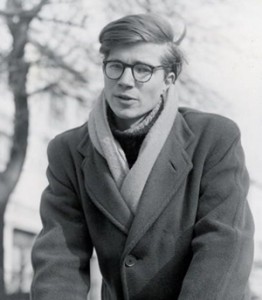 Colin wrote two autobiographies: the first, Voyage to a Beginning [4]
Colin wrote two autobiographies: the first, Voyage to a Beginning [4], was published in 1969; and Dreaming to Some Purpose [5]
, in 2004. These are the best sources for learning about Colin’s life, but I will offer a few essentials.
Colin was born on June 26, 1931 in Leicester, England to a working-class family. He developed an early passion for reading and ideas, although his first love was science. He left school, as was normal for teenagers who were expected to go to work, at age 16, and got a job as an assistant in a chemistry lab. He has described how his early enthusiasm for science quickly waned, as he discovered that it alone failed to answer many of the essential questions, such as the meaning of life and his place in it. Gradually sinking into despair, he describes how he went to work one day with the intention of killing himself. Upon arriving, he took down a bottle of hydrochloric acid that he knew would kill him immediately. But once he opened it and was about to drink, he suddenly saw himself as two people. One was a depressed and confused teenager; the other was the person he realized he could become. He realized that it didn’t matter at all if the first killed himself, he said; but if the first Colin Wilson died, he would be taking the other one with him, and that would be a tragedy. So he put the bottle back and went about his work.
Colin discovered his new passion in literature, philosophy and writing, which he threw himself into with feverish enthusiasm. Supporting himself through a series of low-paying jobs for the next several years, he began gestating the ideas that would eventually become his first book, The Outsider [2].
It should be of interest to Counter-Currents readers that, at this time, Wilson befriended Sir Oswald Mosley, whom he met at a café. (Wilson later claimed that he knew nothing of Mosley’s political activities at the time.) Wilson and Mosley shared an interest in many of the same writers and philosophers, and apparently their friendship continued until Mosley’s death, over 20 years later. Mosley even penned a very laudatory review of The Outsider [2] under a pseudonym in his journal, The European, shortly after the former’s publication. Wilson, for his part, never disavowed his friendship with Mosley, although he did disavow fascism and wrote, in a review of two books about Mosley that he published in 1961, that he considered Mosley to be a great man in spite of his error, in Wilson’s view, of embracing fascism. Nonetheless, this relationship was one that was to dog Wilson for the remainder of his career, and more than one journalist attempted to brand him with the “fascist” label.
It was in 1955 that Colin, frustrated at the amount of time and energy that he was spending just to make ends meet instead of reading and writing, gave up his flat and took up residence in a sleeping bag on Hampstead Heath, a park in London. He would spend his days in the Reading Room at the British Museum, studying and working on The Outsider [2]. (He later confessed that, when it was particularly cold, he would spend the night at his then-girlfriend Joy’s place.) It just so happened that the supervisor of the Reading Room at that time was the novelist Angus Wilson, and he and Colin struck up a friendship. When Angus learned that Colin was working on a book, Angus asked to see it, and was so impressed by it that he decided to show it to his publisher, Gollancz, which soon agreed to publish it. And when the book was published in both the United Kingdom and the United States in 1956, it became an instant bestseller, earning widespread praise even from established literary figures like Cyril Connolly, Philip Toynbee and Edith Sitwell, all of whom assured their readers that Colin’s career was greatness in the making. For a 24-year-old author publishing his first book, it was unheard-of. It was every young writer’s fantasy brought to life, and might seem to have been almost too good to be true.
And it was.
Upon the publication of the second book in what came to be called Colin’s “Outsider cycle,” Religion and the Rebel [6], in 1957, the critics who had previously been so full of praise had now turned vicious. It was obvious, many of them claimed, that they had been fooled – Wilson was nothing but a pretentious, egotistical hack who was attempting to grapple with issues that were beyond his knowledge and maturity. This established a pattern in the British press that has continued up to the obituaries being published about him at present. Either Colin Wilson was to be ridiculed, or else ignored altogether.
There are many reasons for this. Jealousy was no doubt a factor. Another was that the press made Colin into a celebrity, and he, at age 24, was too naive to realize how he was being used by them, as he himself later conceded. People became sick of seeing Wilson’s name and picture in the newspapers and magazines (he even made the cover of Life magazine). Another factor was an incident in early 1957 in which Joy’s father came across some notes that Colin had been making for a novel he was working on (which later became Ritual in the Dark [7]), in which a character is a sexual deviant. Thinking that these notes were Colin’s own beliefs, Joy’s father immediately went over to his apartment, bursting in on them while they were having dinner and famously crying, “The game is up, Wilson!” As he refused to listen to Colin’s explanations, the police were called, and although the incident quickly came to an end, the reporters were already on their way, and soon the story about the young literary celebrity getting his comeuppance was in every newspaper in Britain. The fate of Colin’s reputation was sealed.
It just so happened that the publication of The Outsider [2] coincided with the premiere of 26-year-old John Osborne’s play Look Back in Anger [8]
, which, although it failed to garner the critical acclaim of Colin’s book, became very popular with audiences, and was seen as a sign of the British Zeitgeist. As a result, the press decided to lump Wilson and Osborne together with several other writers, including Kingsley Amis, Alan Sillitoe, Harold Pinter and others, and dubbed them the “angry young men.” Although their specific styles and ideas had little in common, these writers were young and discontented with British society of the 1950s, and came from lower-class backgrounds. So, Colin was now part of a literary movement. Another of the angry young men was Bill Hopkins, a lifelong friend of Colin’s, who in later years befriended Jonathan Bowden. Although Hopkins was soon to abandon his writing career in favor of becoming an art dealer, he did publish a single novel, The Divine and the Decay (later republished as The Leap!), which explores fascistic ideas. (See Jonathan Bowden’s excellent lecture [9] on Hopkins.)
The Outsider
So what is The Outsider? The book is still in print – and, as far as I know, has been continuously since 1956 – so readers still have ample opportunity to find out for themselves. But I will provide a brief overview. It is a survey of writers, artists, and mystics who Colin believed defined the outsider identity. This included H. G. Wells, George Bernard Shaw, Hermann Hesse, Albert Camus, Jean-Paul Sartre, T. S. Eliot, Ernest Hemingway, T. E. Lawrence, Vincent van Gogh, Nijinsky, Friedrich Nietzsche, Fyodor Dostoevsky, William Blake, Ramakrishna, and G. I. Gurdjieff, among others.
Colin defined “outsiders” as those individuals who feel alienated from the society they live in, and who feel compelled to defy the conventions of their time and attempt to forge something new that transcends it, either in their work or in their own lives (sometimes both). He once said that outsiders are the warts that appear on the face of a civilization that has lost its health and sense of meaning. Colin believed that the existentialists, who were at the peak of their popularity in Continental Europe at the time he was writing, held the key to understanding this predicament. The existentialists recognized that life has no meaning apart from what we ourselves give it, which Colin agreed with. But he took the French existentialists to task for coming to what he saw as negative conclusions. Sartre and Camus, he held, saw it as a tragedy that man has no essential meaning and that he was “condemned” to be free. Such a view led Sartre to come to the rather ridiculous conclusion that, all meanings being equal, he should embrace Communism. For Colin, existentialism should not be about making false commitments, but rather of affirming the boundless potential freedom of the individual to realize himself.
The mystical experience was a vital proof of this. (“Any system of values must ultimately be mystical,” he wrote.) Rather than interpreting mysticism in a religious way (Colin was always uninterested in any form of institutionalized religion), he saw such experiences as a crucial factor in human evolution. An analogy he frequently used was the “Christmas morning” experience that a child has, when everything seems alive, fresh and infinitely complex, or the “absurd good news” referenced by G. K. Chesterton. In Colin’s view, psychologically healthy people have such experiences all the time. He believed that those who were among the elite of human society (which he estimated as being 5% of the whole) would actively seek such states through various means such as adventure, danger, sex, drugs, battle, art, and/or asceticism. For Colin, this was more than just a psychological phenomenon – it was a presaging of an entirely new form of consciousness that humans are only just beginning to explore, but which will eventually bring about an entirely new phase in our development. “The outsider stands for truth,” he wrote.
Career and Ideas
In spite of the savagery his second book sustained at the hands of the critics, the success of The Outsider had at least provided Colin with enough money to purchase a home in Cornwall, where he and Joy were to remain permanently, and they began raising a family – Colin eventually had three sons and one daughter. He also now had a reputation as a writer, and this enabled him to begin supporting himself entirely from his writing, although this proved to be a challenging task for a man with a family, and no doubt explains his prodigious output. His intensive need to make his living by his pen even led to a nervous breakdown in 1973, from the strain of overwork.
In typical Wilsonian fashion, Colin was inspired to take one of his ideas from the experience, which he termed “the ladder of selves,” by which he meant the various levels of consciousness that one can attain. Most, he felt, never venture beyond the lower rungs, which are accessible by anyone with merely biological impulses. But those with a drive to realize their will, he believed, could access the higher rungs, and discover previously unknown layers of their own personalities. Colin believed that multiple personality disorder was a corruption of this facet of human nature.
Nevertheless, Colin persevered, and always earned his living as a writer (with occasional teaching gigs, lecturing, and television appearances to go along with it). Wilson also had a reputation for being a voracious book and record (LPs, for the young) collector. He is reputed to have acquired many tens of thousands of volumes over the course of his life, and eventually had to construct a series of sheds on his property in Cornwall in order to house them.

Colin’s writing career had two distinct phases to it. The phase that commenced with The Outsider, and which comprises his work of the 1950s and ’60s, I would term his “New Existentialism” phase, and is undoubtedly the era of his most important books. This is when Colin laid down the premises for his work, primarily through philosophy and literature, although he also began to engage with psychology. He befriended Dr. Abraham Maslow, and adopted from him the term “peak experience” to describe the mystical states of intensity which outsiders experience. Maslow believed that peak experiences come and go, but that one couldn’t control them. Colin contested this idea, believing that they could be induced at will, and he actually worked at developing techniques by which they could be attained.
At the same time, he was also laying the foundations for a new school of existentialism that was free of the pessimism that defined the French incarnation of it. Colin was very adamant that pessimism was detrimental to human development, and believed that pessimism could even affect perception and thus alter one’s ability to accurately perceive and know the world. This was an overriding concern of his throughout his career. An illustration he frequently used to make this point was the existence in the course of Van Gogh’s lifetime both of the painting, “Starry Night,” and Van Gogh’s suicide note. When one looks at the painting, one is awestruck by the wonderment of the scene. It gives the impression of an overflowing of the senses, of gifted perception made permanent. And yet the man who was capable of seeing the world in this way was also capable of despising life to the extent that he could destroy himself, leaving a note that said, “Misery will never end.” “‘Starry Night’ was true, the suicide note was false,” Colin was fond of saying. I still believe that the basis for a new existentialism upon the premises that he outlined remains an as yet unexplored potential worthy of further consideration, and may even offer a worthy alternative to postmodernism.
In 1971, this interest in the mystical led to one of Colin’s most important works, The Occult [10]. This was the book that launched what came to define the second part of his career: the mystical and the supernatural, which Colin believed provided further evidence for the coming change in human consciousness. Colin’s interest in such matters wasn’t motivated by any interest in demonic powers or such things, but rather his view that such phenomena are manifestations of unsuspected powers of the human mind, which he thought we would eventually learn to control and exploit. The Occult became the first of many books that Colin would write on the subject. Beginning in the 1990s, he also wrote a series of books which I personally found fascinating on the evidence for an advanced, worldwide civilization on the Earth in prehistoric times (along the lines of Graham Hancock’s Fingerprints of the Gods [11]
). Even these books tie into his interest in consciousness, since he believed, along with Julian Jaynes, that the ancients possessed a different form of it than we have today.
The other genre that defines the second part of Colin’s career is true crime, which actually began in 1961 when he co-wrote Encyclopedia of Murder [12], although he began writing much more on the subject beginning in the 1970s. Murder is also something that occurs frequently in Colin’s novels. Colin was always fascinated by it, and by serial killers in particular. He viewed serial killers as a sort of flawed type of outsider – he believed they were artists whose creative powers had become misdirected into violence, and that the thrill they got from transgressing the moral order (which he thought induced a type of peak experience in the killers) became addictive. Colin thought that some criminals could be successfully rehabilitated by offering them an artistic outlet while they were in prison, and he helped to design experimental programs that were used in prisons in the United States.
Some people who had been admirers of his early books were disappointed by the turn that Colin’s work took from the 1970s onward. Apart from occasional essays, Colin largely abandoned philosophy and literary criticism – he wrote no major works on those subjects after the early 1970s. Part of this was no doubt because he discovered that it was easier to sell occult and true crime books than books on philosophy. However, I do believe that he said everything that he wanted to say about philosophy in those early books, and his later books – the best of them, at any rate – can be seen as a continuation of his earlier concerns in other mediums. Colin’s perpetual subject was always consciousness and its possibilities, and while some may disagree with the direction he took, there is no doubt in my mind that he genuinely believed that the study of the occult and of the criminal mentality could offer vital clues as to how consciousness is evolving, and thus help to resolve the “search for meaning” of the existential outsider.
There are also some books of his that defy easy categorization. There is A Book of Booze [13], his book on one of his greatest loves: wine (and I can report that we polished off several bottles at his insistence on the evening that I was fortunate enough to join him for dinner). There is Brandy of the Damned [14]
, his survey of one of his other greatest loves: classical music. There is L’Amour: The Ways of Love [15]
, a book he wrote on sex to accompany a series of erotic photographs. And there are also his many novels, including several written in the world of the Cthulhu Mythos of Lovecraft; but trying to do a survey of them goes beyond the scope of this essay.
Politics
As this is appearing at Counter-Currents, I feel I should also write something about Colin’s relationship to politics. Colin himself always eschewed politics, and rarely mentioned it in his work; he said at times that he didn’t think writers should engage with contemporary politics, and suggested on more than one occasion that writers who did so were wasting their time. He also claimed that he really didn’t understand politics himself. Nevertheless, there are a few interesting things to be said. I have already discussed Colin’s relationship with both Sir Oswald Mosley and Bill Hopkins. In his autobiography, he says that he considered himself to be an anarchist in his youth; in the 1950s and ’60s, he expressed sympathy for socialism in some of his public statements. In the 1970s, he aroused some controversy for writing a review of Richard Verrall’s Did Six Million Really Die?, a work of Holocaust revisionism. The controversy arose not because Colin defended Verrall’s thesis, since he remained noncommittal about it, but simply because he said that the evidence presented was compelling and was worthy of being taken seriously. Given the problems he had encountered earlier because of his connection to Mosley, this has also been presented by some as proof of his fascist sympathies.
I also recall reading an uncollected essay by Colin that was published in the 1970s on the subject of Hitler. The essay as a whole was rather unremarkable, but something Colin wrote at the end of it struck me and stuck in my memory. I don’t have a copy at hand, but I remember he pointed out that Hitler’s power derived from his ability to create a myth that inspired and motivated the German people to incredible feats. At the end, he wrote something to the effect of, “If the civilization which defeated Hitler is actually to demonstrate that it is better than his was, then it needs to create heroic myths of its own, rather than embrace nihilism.” I think this aptly sums up the primary difference between the traditional worldview and that of liberalism.
By the 1980s, Colin had taken a more decisive turn toward Toryism. This was underscored by what I believe to be his sole venture into the world of contemporary politics: a volume he co-edited in 1987 entitled Marx Refuted: The Verdict of History [16]. It is an anthology of essays opposing Marxism which includes one by no less a person than Margaret Thatcher, as well as contributions from Arthur Koestler, Alexander Solzhenitsyn, A. L. Rowse, and Milton Friedman, as well as from Colin himself. How this book came about or why Colin chose to do it, I don’t know, but it is an interesting footnote to his otherwise total disinterest in politics.
Something that is not very well-known about Colin, however, is that his books are extremely popular in the Middle East, and many of them have been translated into Arabic and Farsi (although he once mentioned to me that he profited little from this popularity, as most of the books were pirated editions). In 1973, he was invited to Beirut, where he was met at the airport by the mayor of the city on a red carpet. On the same trip he was invited by some Palestinian guerrillas to visit one of their camps. The experience made him very sympathetic to the Palestinian cause, and he wrote an essay in favor of them at the time. He also related to me that on this same trip, he went to Damascus, where he was met by the then War Minister, General Tlas, who regaled him with a story from when he and his comrades had been imprisoned by the previous regime. They had read Colin’s novel Ritual in the Dark by tearing the pages out of a copy and passing them from one to the other as they read. As a token of thanks, he presented Colin and Joy with Arab robes and a bronze plaque. Colin was also invited to Iran at the behest of the government in the 1970s, but he said the plan fell through after the Shah was overthrown.
The most interesting connection, however, is between Colin and Colonel Gaddafi. Gaddafi made frequent complimentary references both to Colin and to The Outsider throughout his reign. (I remember seeing a transcript of a speech he had given in the 1990s in which he chided the Clinton White House for inviting Salman Rushdie there, but not Colin Wilson.) Colin told me that he had been asked by the Libyan embassy to make a visit to the country at the government’s behest, but that he had declined out of fear that such a visit would have made it seem as though he were endorsing Gaddafi’s politics.
I would not call Colin a Rightist or a traditionalist. To do such a thing would be to read something into his work that simply isn’t there. At the same time, however, Colin always remained an unabashed elitist, from start to finish. He often reiterated his view that it is only 5% of humanity that comprise a potential elite, and that the majority of men, as he once put it, ought not to have bothered to be born at all. As such, his work is entirely consistent with a hierarchical view of life and civilization.
Reflections
I no longer view Colin Wilson as the demigod that I saw him as when I was in my mid-’20s, when I took his word as gospel and believed that he had the answer to life, the universe, and everything. (Julius Evola and René Guénon, whom I discovered shortly thereafter, soon knocked him off of that pedestal.) His critics are at least partially correct when they say that Colin sometimes overstretched himself, and was perhaps guilty of too much generalization and unfounded speculation on occasion. And I certainly would not suggest to anyone that they attempt to read through his entire corpus – anyone who has read many of Colin’s books will attest that only a third of them, perhaps, are truly great. The rest of them contain a lot of repetition, and some of them were obviously only written for money (such as many of his occult and true crime books, entertaining as they can be). But that third is genuine gold, and I believe is worthy of being read by anyone who is looking for worthy alternatives to the prevailing way of thinking about the nature and destiny of humanity in modern times.
Colin Wilson occupies a unique place in late twentieth-century thought. In an era of extreme specialization, he dared to range across the entire gamut of human endeavor in pursuit of understanding humanity’s untapped potential. In an era when the culture and figures of the West are frequently derided, Colin based his work unapologetically on the best minds of our civilization, and never worried about political correctness. In an era when equality, conformity and consumerism is valued over genuine achievement and self-development, Colin offered a vision of heroism, which affirmed that not only can an individual rise above the monotonous, bourgeois reality of our times, but that, for the outsider, it is an absolute must.
His vision will remain a compelling one long after his death.
His Chief Works
For those interested in delving into Colin’s work, I can offer a few suggestions. Many of Colin’s older works are long out-of-print, but it’s usually not difficult to find used copies.
His most important works, few would argue, are those in his “Outsider cycle.” The sequence is comprised of The Outsider, Religion and the Rebel [6], The Age of Defeat [17]
(an abridged edition was published in the United States as The Stature of Man), The Strength to Dream [18]
, Origins of the Sexual Impulse [19]
, and Beyond the Outsider [20]
. A seventh volume, variously published as The New Existentialism [21]
and An Introduction to the New Existentialism [22]
, presents the ideas from these books in brief, and can serve as a good summary for those uninterested in reading the entire series.
The Craft of the Novel [23] is probably Colin’s most important work of literary criticism. In it he discusses his conception of “Existential Criticism,” in which he held that a work of literature should be evaluated first and foremost on the basis of the ideas and worldview it presents.
In terms of his occult work, The Occult [10] and Mysteries [24]
are his two primary works, of many he wrote on the subject. Beyond the Occult [25]
seems to have been an attempt by Colin to reconcile his later interest in the occult with his earlier, existential ideas.
A Criminal History of Mankind [26] is undoubtedly Colin’s most important work in the area of criminology. New Pathways in Psychology: Maslow and the Post-Freudian Revolution [27]
was the product of his interaction with Maslow, and it examines the idea of the “peak experience” at length.
And lastly, there are his novels. He wrote many, including “novels of ideas,” mysteries, and science fiction. My personal favorites would include Ritual in the Dark [7], which is about a struggling young writer named Gerard Sorme who is obsessed with the meaninglessness of life, until he begins to worry that a friend of his could be a serial killer who is on the loose in London. Another I enjoyed was The World of Violence [28]
, which is about a young mathematical prodigy, Hugh Greene, who becomes dissatisfied with the intellectual world and becomes attracted to violence, becoming embroiled in a criminal gang, guns and the hunt for a serial killer. And then there is The Philosopher’s Stone [29]
, which is set in the world of the Cthulhu Mythos. Colin was enticed into the Lovecraftian world by August Derleth, who had challenged Colin to write the earlier novel The Mind Parasites [30]
, also a Cthluhu Mythos story. Derleth praised Colin for his efforts. The Philosopher’s Stone [29]
is about a scientist, Howard Lester, who is conducting experiments in an effort to extend the human lifespan, but accidentally discovers an operation on the brain which results in greatly enhanced mental powers. As he begins to explore the new powers of his mind, Lester comes to realize that there are ancient and powerful hidden forces which are seeking to prevent humanity from evolving beyond its current state. Bits of Colin’s philosophy always find their way into his novels.
There is also a good anthology of selections from several of Colin’s works intended to introduce his chief ideas entitled The Essential Colin Wilson [31]. Colin also regarded a survey of his work written by Howard F. Dossor, Colin Wilson: The Man and His Mind [32]
to have been the best and most comprehensive to date.
Article printed from Counter-Currents Publishing: http://www.counter-currents.com
URL to article: http://www.counter-currents.com/2013/12/a-heroic-vision-for-our-time/
URLs in this post:
[1] Image: http://www.counter-currents.com/wp-content/uploads/2013/12/wilson.jpg
[2] The Outsider: http://www.amazon.com/gp/product/0874772060/ref=as_li_ss_tl?ie=UTF8&camp=1789&creative=390957&creativeASIN=0874772060&linkCode=as2&tag=countercurren-20
[3] Beyond the Outsider: http://www.amazon.com/gp/product/B0000CMF88/ref=as_li_ss_tl?ie=UTF8&camp=1789&creative=390957&creativeASIN=B0000CMF88&linkCode=as2&tag=countercurren-20
[4] Voyage to a Beginning: http://www.amazon.com/gp/product/B0006CZ5MU/ref=as_li_ss_tl?ie=UTF8&camp=1789&creative=390957&creativeASIN=B0006CZ5MU&linkCode=as2&tag=countercurren-20
[5] Dreaming to Some Purpose: http://www.amazon.com/gp/product/0099471477/ref=as_li_ss_tl?ie=UTF8&camp=1789&creative=390957&creativeASIN=0099471477&linkCode=as2&tag=countercurren-20
[6] Religion and the Rebel: http://www.amazon.com/gp/product/0575012587/ref=as_li_ss_tl?ie=UTF8&camp=1789&creative=390957&creativeASIN=0575012587&linkCode=as2&tag=countercurren-20
[7] Ritual in the Dark: http://www.amazon.com/gp/product/0914171631/ref=as_li_ss_tl?ie=UTF8&camp=1789&creative=390957&creativeASIN=0914171631&linkCode=as2&tag=countercurren-20
[8] Look Back in Anger: http://www.amazon.com/gp/product/0140481753/ref=as_li_ss_tl?ie=UTF8&camp=1789&creative=390957&creativeASIN=0140481753&linkCode=as2&tag=countercurren-20
[9] lecture: http://www.counter-currents.com/2013/07/bill-hopkins-and-he-angry-young-men/
[10] The Occult: http://www.amazon.com/gp/product/0394465555/ref=as_li_ss_tl?ie=UTF8&camp=1789&creative=390957&creativeASIN=0394465555&linkCode=as2&tag=countercurren-20
[11] Fingerprints of the Gods: http://www.amazon.com/gp/product/0517887290/ref=as_li_ss_tl?ie=UTF8&camp=1789&creative=390957&creativeASIN=0517887290&linkCode=as2&tag=countercurren-20
[12] Encyclopedia of Murder: http://www.amazon.com/gp/product/B0006AX7B8/ref=as_li_ss_tl?ie=UTF8&camp=1789&creative=390957&creativeASIN=B0006AX7B8&linkCode=as2&tag=countercurren-20
[13] A Book of Booze: http://www.amazon.com/gp/product/0575018313/ref=as_li_ss_tl?ie=UTF8&camp=1789&creative=390957&creativeASIN=0575018313&linkCode=as2&tag=countercurren-20
[14] Brandy of the Damned: http://www.amazon.com/gp/product/B0000CMCCT/ref=as_li_ss_tl?ie=UTF8&camp=1789&creative=390957&creativeASIN=B0000CMCCT&linkCode=as2&tag=countercurren-20
[15] L’Amour: The Ways of Love: http://www.amazon.com/gp/product/B0006C2USC/ref=as_li_ss_tl?ie=UTF8&camp=1789&creative=390957&creativeASIN=B0006C2USC&linkCode=as2&tag=countercurren-20
[16] Marx Refuted: The Verdict of History: http://www.amazon.com/gp/product/0906798728/ref=as_li_ss_tl?ie=UTF8&camp=1789&creative=390957&creativeASIN=0906798728&linkCode=as2&tag=countercurren-20
[17] The Age of Defeat: http://www.amazon.com/gp/product/B0000CKD1W/ref=as_li_ss_tl?ie=UTF8&camp=1789&creative=390957&creativeASIN=B0000CKD1W&linkCode=as2&tag=countercurren-20
[18] The Strength to Dream: http://www.amazon.com/gp/product/0349137366/ref=as_li_ss_tl?ie=UTF8&camp=1789&creative=390957&creativeASIN=0349137366&linkCode=as2&tag=countercurren-20
[19] Origins of the Sexual Impulse: http://www.amazon.com/gp/product/B0000CLQME/ref=as_li_ss_tl?ie=UTF8&camp=1789&creative=390957&creativeASIN=B0000CLQME&linkCode=as2&tag=countercurren-20
[20] Beyond the Outsider: http://www.amazon.com/gp/product/0881847046/ref=as_li_ss_tl?ie=UTF8&camp=1789&creative=390957&creativeASIN=0881847046&linkCode=as2&tag=countercurren-20
[21] The New Existentialism: http://www.amazon.com/gp/product/0704504154/ref=as_li_ss_tl?ie=UTF8&camp=1789&creative=390957&creativeASIN=0704504154&linkCode=as2&tag=countercurren-20
[22] An Introduction to the New Existentialism: http://www.amazon.com/gp/product/B000NUOT0O/ref=as_li_ss_tl?ie=UTF8&camp=1789&creative=390957&creativeASIN=B000NUOT0O&linkCode=as2&tag=countercurren-20
[23] The Craft of the Novel: http://www.amazon.com/gp/product/0575019972/ref=as_li_ss_tl?ie=UTF8&camp=1789&creative=390957&creativeASIN=0575019972&linkCode=as2&tag=countercurren-20
[24] Mysteries: http://www.amazon.com/gp/product/1842931857/ref=as_li_ss_tl?ie=UTF8&camp=1789&creative=390957&creativeASIN=1842931857&linkCode=as2&tag=countercurren-20
[25] Beyond the Occult: http://www.amazon.com/gp/product/B00FIMWELS/ref=as_li_ss_tl?ie=UTF8&camp=1789&creative=390957&creativeASIN=B00FIMWELS&linkCode=as2&tag=countercurren-20
[26] A Criminal History of Mankind: http://www.amazon.com/gp/product/0881846465/ref=as_li_ss_tl?ie=UTF8&camp=1789&creative=390957&creativeASIN=0881846465&linkCode=as2&tag=countercurren-20
[27] New Pathways in Psychology: Maslow and the Post-Freudian Revolution: http://www.amazon.com/gp/product/0575027967/ref=as_li_ss_tl?ie=UTF8&camp=1789&creative=390957&creativeASIN=0575027967&linkCode=as2&tag=countercurren-20
[28] The World of Violence: http://www.amazon.com/gp/product/1939140269/ref=as_li_ss_tl?ie=UTF8&camp=1789&creative=390957&creativeASIN=1939140269&linkCode=as2&tag=countercurren-20
[29] The Philosopher’s Stone: http://www.amazon.com/gp/product/0874775094/ref=as_li_ss_tl?ie=UTF8&camp=1789&creative=390957&creativeASIN=0874775094&linkCode=as2&tag=countercurren-20
[30] The Mind Parasites: http://www.amazon.com/gp/product/0974935999/ref=as_li_ss_tl?ie=UTF8&camp=1789&creative=390957&creativeASIN=0974935999&linkCode=as2&tag=countercurren-20
[31] The Essential Colin Wilson: http://www.amazon.com/gp/product/0890874727/ref=as_li_ss_tl?ie=UTF8&camp=1789&creative=390957&creativeASIN=0890874727&linkCode=as2&tag=countercurren-20
[32] Colin Wilson: The Man and His Mind: http://www.amazon.com/gp/product/1852301767/ref=as_li_ss_tl?ie=UTF8&camp=1789&creative=390957&creativeASIN=1852301767&linkCode=as2&tag=countercurren-20
00:09 Publié dans Littérature | Lien permanent | Commentaires (0) | Tags : lettres, lettres anglaises, littérature, littérature anglaise, colin wilson |  |
|  del.icio.us |
del.icio.us |  |
|  Digg |
Digg | ![]() Facebook
Facebook
Le Bulletin célinien n°358 - décembre 2013
Vient de paraître : Le Bulletin célinien n°358.
Au sommaire :
- Marc Laudelout : Céline et Henri Mondor
- M. L. : Nadeau, Céline et Hindus dans « Combat »
- Éric Mazet : Céline’s Jazz Band
- M. L. : Le bel idéal de Jean Guenot
- M. L. : Gabriel Chevallier à redécouvrir
- Pierre de Bonneville : Match Cendrars – Céline
- Actualité célinienne
Le Bulletin célinien, Bureau Saint-Lambert, B. P. 77 BE 1200 Bruxelles.
Courriel : celinebc@skynet.be. Abonnement annuel (11 numéros) : 55 €.
Numéro-specimen : 6 €.
00:05 Publié dans Littérature, Revue | Lien permanent | Commentaires (0) | Tags : littérature, lettres, littérature française, lettres françaises, céline |  |
|  del.icio.us |
del.icio.us |  |
|  Digg |
Digg | ![]() Facebook
Facebook
00:05 Publié dans Entretiens, Littérature | Lien permanent | Commentaires (0) | Tags : littérature, lettres, lettres françaises, littérature française, céline, marc hanrez, entretien |  |
|  del.icio.us |
del.icio.us |  |
|  Digg |
Digg | ![]() Facebook
Facebook
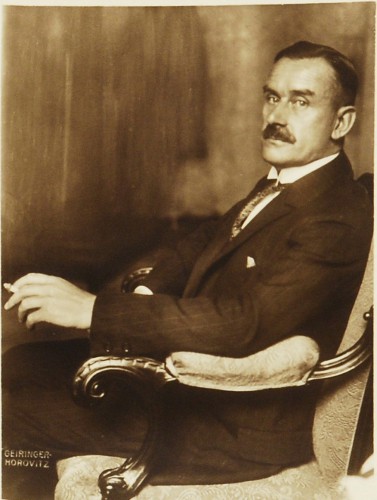
Als Thomas Mann seine „Betrachtungen eines Unpolitischen“ schrieb, war er noch streng deutschnational und kriegsbejahend gesinnt. Das sollte sich bald ändern: Schon kurze Zeit später distanzierte sich Mann von seinem schriftstellerischen Beitrag zum Ersten Weltkrieg und avancierte zum Vernunftrepublikaner, der die Weimarer Republik publizistisch gegen ihre Feinde von rechts und links verteidigte. Manns frühe Betrachtungen sind allerdings nicht einfach als dumpfe Kriegspropaganda abzustempeln, sondern stellen große Literatur dar, die darüber hinaus immer noch wichtige Einsichten politischer und kultureller Art zu vermitteln in der Lage ist. Mit Blick auf seinen Bruder Heinrich –damals pazifistisch eingestellt und ein eifernder Gegner des heraufziehenden Krieges – entwarf Mann die Figur des Zivilisationsliteraten, der gegen sein eigenes Land als intellektueller Agent der Westmächte publizistisch zu agitieren begann. Natürlich ist diese Figur stereotypisch überzeichnet; wir dürfen aber davon ausgehen, dass dieser Typus damals zuhauf Repräsentanten fand – und bis heute findet. Thomas Mann verketzert das Zivilisationsliteratentum jedoch nicht als „Verräterei“ und schiebt sie auf die Feindseite ab, sondern fragt nach den tieferen Ursachen dieses Phänomens.
Dabei stellt er fest, dass die innere geistige Einheitlichkeit und Geschlossenheit, wie sie bei allen europäischen Nationen gerade in Kriegszeiten besonders entwickelt ist, für Deutschland nicht so einfach in Anschlag zu bringen ist: Deutschland sei keine Nation in diesem Sinne, denn es habe eine andere Bildungsgeschichte und einen anderen Menschlichkeitsbegriff. Die geistigen Gegensätze seien so stark ausgeprägt, dass sie ein nationales Band nur schwerlich umfassen und vereinigen könne. Das liege vor allem daran, dass diese Gegensätze weniger nationaler als europäischer Art sind, die ihre Spannungen auf deutschem Boden und in deutscher Seele entladen: „In Deutschlands Seele werden die geistigen Gegensätze Europas ausgetragen, — im mütterlichen und im kämpferischen Sinne ›ausgetragen‹. Dies ist seine eigentliche nationale Bestimmung. Nicht physisch mehr — dies weiß es neuerdings zu verhindern —, aber geistig ist Deutschland immer noch das Schlachtfeld Europas.“ Infolge von Deutschlands Mittellage in Europa gerät es nicht nur in eine geopolitische Bedrohungssituation, sondern wird zum seelischen Kampfplatz für europäische Gegensätze. Das bedeutet nicht nur, als eine permanente Arena eines Kulturkampfes zu dienen, sondern auch eine geistig-kulturelle Gemengelage, die künstlerischer Schaffenskraft eine produktive Anarchie von singulärer Qualität ermöglicht. Der Preis dafür fällt hoch aus: es ist die Zersplitterung der deutschen Seele, die wie der ehemalige Flickenteppich deutscher Lande zerrissen und unversöhnlich fragmentiert daliegt. Es entsteht eine Geistesspaltung, die nicht nur die Seele der Nation durchfährt, sondern auch die Seele jedes einzelnen Deutschen, sein Kopf und sein Herz. Deutschtum – das ist nach Mann also keineswegs ein festgefügtes Wesen, eine fertige Festung, die lediglich nach außen verteidigt werden müsste, nein: Deutschtum ist durch und durch problematisch, es ist selbst ein Problem, eine unbeantwortete Frage. Welche Gefahr bestünde nun für Deutschland, falls es den Weltkrieg verlöre und dem Westen einverleibt würde? Wäre das nicht ein nachhaltiger Beitrag für den Frieden in Europa? Nicht zufällig berufen sich die gegenwärtigen EU-Propagandisten, wenn sie ihre Vision in Frage gestellt sehen oder weitere Forderungen und Maßnahmen durchsetzen wollen, auf diese ideologische Legitimationsformel. „Westintegration“, „westliche Wertgemeinschaft“, „der Frieden in Europa“ – ob mit Krieg oder ohne, es sind bis heute die unhinterfragbaren Grundaxiome, die das Fundament bundesrepublikanischen Selbstverständnisses abgeben sollen. Die deutsche Eigenart kommt hingegen überhaupt nicht mehr vor, nicht mal mehr an zweiter Stelle. Was sagt nun Thomas Mann zu Deutschlands nationaler Neutralisation? „Wessen Bestreben es wäre, aus Deutschland einfach eine bürgerliche Demokratie im römisch-westlichen Sinn und Geiste zu machen, der würde ihm sein Bestes und Schwerstes, seine Problematik nehmen wollen, in der seine Nationalität ganz eigentlich besteht; der würde es langweilig, klar, dumm und undeutsch machen wollen und also ein Anti-Nationalist sein, der darauf bestünde, daß Deutschland eine Nation in fremdem Sinne und Geiste würde . . .“ Bei „bürgerlicher Demokratie im römisch-westlichen Sinne“ dürfen wir nicht primär an eine Staatsform denken, sondern es ist eine ganz andere politische Kultur gemeint, die heute nicht wesentlich anders aussieht als damals; man könnte sie „Weltbürgertum“ oder „Weltzivilisation“ nennen, eine imperialistische Bestrebung, die darauf abzielt, das globale Dorf zu begründen, das multikulturelle Traumparadies oder den ewigen herrschaftsfreien Diskurs im Maßstab der Weltkommunikation. Totale Menschheit, totale Toleranz, totaler Fortschritt. Wenn Deutschland darin aufgehen würde, würde es aufhören, Problem zu sein bzw. überhaupt zu sein. Um zu verstehen, warum Mann diese Option, die heute wahrscheinlicher als je erscheint, so perhorresziert, müssen wir die Rolle klarer herausstellen, die unser Land laut ihm in seiner Geschichte gegen den Westen einnahm. Helmut Plessner sprach abfällig von der „verspäteten Nation“ und bescheinigte Deutschland einen zivilisatorischen Rückstand gegenüber Frankreich und England. Mann perspektiviert denselben Sachverhalt andersherum und dreht ihn ins Positive: Deutschland sei immer das protestierende Reich gegen den „römischen Westen“ gewesen. Es machte bei dessen universalistischen Heilsphantasien nicht mit und scherte ostentativ aus. Es erwies sich dadurch als das protestantische Land im wahrsten Sinne des Wortes.
Was tut der Zivilisationsliterat? Nun, er protestiert gegen den Protest und „fordert den innigen Anschluß Deutschlands an das Zivilisationsimperium“. Er bekennt sich nicht nur dazu, er kämpft tatsächlich auf der Gegenseite. Er ist inneres Ausland. Und trotzdem: Mann hütet sich, ihn als Vaterlandsverräter oder „undeutsch“ zu denunzieren: „Der Begriff ›deutsch‹ ist ein Abgrund, bodenlos, und mit seiner Negation, der Entscheidung ›undeutsch‹, muß man äußerst vorsichtig umgehen, um nicht zu Fall und Schaden dabei zu kommen.“ Da der Begriff „deutsch“ ohnehin abgründig ist und eigentlich bereits eine Negation darstellt, ist die Negation dieser Negation eine schwierige Angelegenheit. Anders gesagt: Wenn Deutschtum wesentlich Negativität bedeutet, schließt es auch seine eigenen Negationen in sein positives Wesen mit ein, so dass den Zivilisationsliteraten auch ein gewisser Patriotismus nicht abzusprechen ist. Nur: „Ihr Patriotismus bekundet sich dergestalt, daß sie die Vorbedingung der Größe, oder, wenn nicht der Größe, so doch des Glückes und der Schönheit ihres Landes nicht in seiner störenden und Haß erregenden »Besonderheit«, sondern, um es zu wiederholen, in seiner bedingungslosen Vereinigung mit der Welt der Zivilisation, der Literatur, der herzerhebend und menschenwürdig rhetorischen Demokratie erblicken, — welche Welt durch die Unterwerfung Deutschlands in der Tat komplett würde: ihr Reich wäre vollendet und umfassend, es gäbe keine Opposition mehr gegen sie.“ Der Triumph des Westens wäre das globale Universalreich der Kommunikation, die offene Gesellschaft ohne ihre Feinde, oder negativer gesprochen: der totale Konformismus einer gleichförmigen ‚One World’ ohne Opposition und Protest, zu denen gerade Deutschland nach Thomas Mann die geistig-kulturelle Potenz besessen hätte. Vielleicht steht dessen Ausfall nicht zuletzt mit der sukzessiven Annäherung an diesen scheinbar alternativlosen Weltzustand in kausalem Zusammenhang.
Doch lassen wir Mann diese schwammige Ideologie noch weiter konkretisieren, damit hinter ihrer zuckrigen Fassade zugleich auch ihre Peitsche sichtbar wird. Er nennt den Zivilisationsliteraten einen Pleonasmus. Was bedeutet das? Letztendlich, dass die Zivilisation, die der Zivilisationsliterat propagiert, eben nichts anderes als Literatur ist! Das heißt keine realpolitisch mögliche Wirklichkeit, sondern eine utopische Fiktion, die bestenfalls in Träumen oder Romanen ihren angemessenen Platz hat. Ihre Demokratie ist pure Rhetorik. Mann entlarvt sie als Kopfgeburt der französischen Revolution, als deren zeitgenössische Vollstecker sich die Zivilisationsliteraten verstehen: „Frankreich ist sein Land, die Revolution seine große Zeit, es ging ihm gut damals, als er noch ›Philosoph‹ hieß und in der Tat die neue Philosophie, nämlich die der Humanität, Freiheit, Vernunft vermittelte, verbreitete, politisch zubereitete…“ Der Zivilisationsliterat –ein „Element des nationalen Schicksals“ – erweist sich deshalb als so gefährlich, weil er den Monopolanspruch und die Definitionshoheit über solche Begriffe wie Menschheit und Brüderlichkeit errungen hat, obwohl wer Menschheit sagt, auch betrügen könnte oder Brüderlichkeit und Blutgerüste nahe beieinanderliegen könnten. Das sieht man diesen abstrakten Begriffen allerdings nicht an, sondern höchstens ihren historischen Verwirklichungsversuchen und zwar erst dann, wenn es schon zu spät ist. Um historische Durststrecken zu überbrücken und Aktivierungsenergie für die vernünftige Menschheitsrepublik zu sammeln, identifiziert sich der Zivilisationsliterat gerne mit dem Lauf der Geschichte selbst, die er als Fortschritt im Bewusstsein der Freiheit denkt: „Das Bewußtsein, den ›Fortschritt‹ für sich zu haben, zeitigt offenbar eine sittliche Sicherheit und Selbstgewißheit, die der Verhärtung nahekommt und schließlich das Gemeine zu adeln glaubt, einfach dadurch, daß sie sich seiner bedient.“ Wer für den Fortschritt ist, dem ist alles erlaubt und darf jedes Mittel recht und billig sein. Wer diesen hingegen in Frage stellt, den trifft das Gemeine mit voller Breitseite.
Mann weigert sich jedoch hartnäckig, den Zivilisationsliteraten dasjenige Schicksal zuzumuten, das er seinen Feinden aufbürden will, sie nämlich zur persona non grata außerhalb von Recht und Menschheit zu deklarieren und für verbale und physische Barbarenschelte freizugeben: „Undeutsch? Aus allen meinen Kräften wehre ich mich dagegen, ihn undeutsch zu nennen, und werde nicht aufhören, mich dagegen zu wehren, solange die Kräfte mir nicht versagen. Man kann höchst deutsch sein und dabei höchst antideutsch. Das Deutsche ist ein Abgrund, halten wir fest daran.“ Im Zivilisationsliteraten schaut „Der Deutsche“ in seinen eigenen Abgrund: „Selbstekel und Einfremdung, kosmopolitische Hingebung und Selbstentäußerung“, die auch Teil deutschen Wesens sind, seines tief gespaltenen Wesens. Aber nicht nur das. Wenn er genauer hinsieht, würde er ebenso das Antlitz eines fremden Nationalismus erkennen, und zwar nationalfranzösischer Art: „Er ist einer der besten französischen Patrioten. Der Glaube trägt ihn und verleiht seinem Stile zuweilen ein herrliches Tremolo, einen bewunderungswürdigen Schwung: der Glaube an die Ruhmes- und Missionsidee seines — des französischen — Volkes und daß es ein für allemal zum Lehrer der Menschheit berufen sei, berufen, ihr ›die Gerechtigkeit‹ zu bringen, nachdem es ihr ›die Freiheit‹ gebracht hat (welche aber aus England stammt). Er denkt nicht nur in französischer Syntax und Grammatik, er denkt in französischen Begriffen, französischen Antithesen, französischen Konflikten, französischen Affären und Skandalen. Der Krieg, in dem wir stehen, erscheint ihm, völlig entente-korrekt, als ein Kampf zwischen ›Macht und Geist‹ — das ist seine oberste Antithese! —, zwischen dem ›Säbel‹ und dem Gedanken, der Lüge und der Wahrheit, der Roheit und dem Recht. (Ich brauche nicht hinzuzufügen, auf welcher Seite nach seiner Ansicht sich Säbel, Roheit und Lüge, auf welcher sich die antithetisch entsprechenden Ideale befinden.)“ Diese manichäische Logik, obwohl sie bei weitem nicht mehr so martialisch daherkommt, dauert bis heute fort, nur mit dauernd veränderter Rollenbesetzung: Zivilisation gegen Barbarei, die Guten gegen das Reich des Bösen, der Aufstand der Anständigen usw. Wer so redet, führt eine Feindbestimmung durch und meldet politische Hegemonieansprüche unter einem moralischen Denkmäntelchen an. Wer will schließlich nicht gerne mit den Heeren des Geistes und der Zivilisation marschieren? Widersprechende müssen verrückt, dumm oder krank sein. Aber wieso überhaupt noch marschieren? Ist der Zivilisationsliterat nicht notwendig Pazifist, weil er den Geist verkörpert? Ganz im Gegenteil, urteilt Mann: „Es verhält sich so, daß der Zivilisationsliterat den Krieg nicht mißbilligt, wenn dieser im Dienste der Zivilisation unternommen wird. […] Wie könnte denn auch der Schüler der Revolution — um nicht zu sagen: ihr Epigone — das Vergießen von Blut um der guten Sache, um der Wahrheit, des Geistes willen grundsätzlich verurteilen? »Entschlossene Menschenliebe« — das Wort gehört dem Zivilisationsliteraten - entschlossene Menschenliebe ist nicht blutscheu;“ Entschlossene Menschenliebe heiligt also das Mittel des Krieges, der zunehmend Kreuzzugscharakter gewinnt, insofern er ja im Zeichen von Menschheit, Zivilisation und Gerechtigkeit steht. Die Gegner sind damit per definitionem die Menschenhasser und Barbaren, deren Anliegen jede Legitimität abgesprochen wird. Wir haben es hier mit der pervertierten Renaissance des gerechten Krieges zu tun, der in dem Maße, wie er mit Sendungsbewusstsein und Missionseifer aufgeladen ist, seine Feinde entmenschlicht. Das Ziel des Zivilisationsliteraten lässt sich mit keinen geringeren Vokabeln umschreiben als mit „Erlösung“ oder „Befreiung“, die der römische Westen in pädagogischer Oberlehrermanier seinem frechen Ziehsohn Deutschland beibringen will: „»Deutschland wird sich schicken müssen«, sagte er damals, und seine Augen glommen. Deutschland wird endlich artig sein müssen, sagte er, und es wird dann glücklich sein wie ein Kind, das nach Schlägen schrie und, wenn es welche bekommen hat, dankbar ist, daß man seinen Trotz gebrochen, ihm über seine Hemmungen hinweggeholfen, es erlöst, es befreit hat. Wir erlösen und befreien Deutschland, indem wir es schlagen, es auf die Knie werfen, seine böse Renitenz, ihm selbst zur Wohltat, brechen und es zwingen, Vernunft anzunehmen und ein ehrenwertes Mitglied der demokratischen Staatengesellschaft zu werden.“ Wie würde die Welt wohl aussehen, wenn sich das westliche Zivilisationsimperium global durchgesetzt und die Renitenz seiner Feinde nachhaltig eliminiert hätte – eine Weltsituation, die heute nicht mehr als allzu weit hergeholt erscheint, nachdem Deutschland als Bastion des Protestes nach zwei Weltkriegen endgültig unter die Fittiche der westlichen Wertegemeinschaft genommen und in eine der Vorzeigekolonien der Weltzivilisation verwandelt wurde? Thomas Mann formulierte diese Option noch vorsichtig im Konjunktiv, weil die letzten Entscheidungen noch nicht gefallen waren: „Gesetzt, das wäre geschehen, die Entente ihrerseits hätte rasch und glänzend gesiegt, die Welt wäre vom deutschen ›Alpdruck‹, dem deutschen ›Protest‹ befreit worden, das Imperium der Zivilisation hätte sich vollendet, oppositionslos übermütig geworden: das Ergebnis wäre ein Europa gewesen, — nun, ein wenig drollig, ein wenig platt-human, trivial-verderbt, feminin-elegant, ein Europa, schon etwas allzu ›menschlich‹, etwas preßbanditenhaft und großmäulig-demokratisch, ein Europa der Tango- und Two-Step-Gesittung, ein Geschäfts- und Lusteuropa à la Edward the Seventh, ein Monte-Carlo-Europa, literarisch wie eine Pariser Kokotte.“ Die Neutralisierung Deutschlands beträfe das kulturelle Gepräge Gesamteuropas: Der ganze Kontinent durchliefe eine Entwicklung, in deren Zuge er zu einem „Geschäfts- und Lusteuropa“ degenerierte, das – obwohl im Zeichen von „human freedom und peace“ – tatsächlich die eigene geistg-kulturelle Prostitution zelebrierte. Sind wir heute noch so weit davon entfernt? Auch Mann gab schon zu, dass es eine Entwicklung sei, „die ich für notwendig, da heißt: für unvermeidlich halte“, ein „Fortschritt, – der mir, nicht selten wenigstens, als unaufhaltsam und schicksalsergeben erscheint und den an meinem bescheidenen Teile zu fördern mein eigenes Schicksal ist“. Der ‚Protest’ gegen den ‚Fortschritt’ sieht aussichtslos aus: „Der Fortschritt hat alles für sich. Nur scheinbar ist er die Opposition. Der erhaltene Gegenwille ist es, der in Wahrheit immer und überall die Opposition bildet, der sich in der Verteidigung befindet, und zwar in einer, wie er genau weiß, aussichtslosen Verteidigung.“
Trotzdem sollte die Verteidigung versucht, wenigstens der Nonkonformismus mit dem Zivilisationsliteratentum praktiziert werden. Es ist wichtig an dieser Stelle nochmals zu betonen, dass die Zivilisationsliteraten keine bestimmte politische Gruppierung darstellen, auf die man despektierlich mit dem Finger zeigen könnte – davor hatte Mann ja schon 1918 scharf gewarnt. Der Zivilisationsliterat steht weder rechts noch links, weder oben noch unten in der Gesellschaft, sondern er ist ein Symbol, das damals wie heute nicht nur die süße Versuchung der nationalen Selbstentkernung Deutschlands anzeigt – moderner: „Deutschland schafft sich ab“- sondern zugleich auch immer für eine Grundmöglichkeit deutschen Daseins steht, die seinem abgründigen Wesen entspringt. Die andere Grundmöglichkeit deutschen Daseins ist als Gegengewicht ebenso notwendig und kann mit Mann „konservative Opposition“ oder „ästhetische Revolte“ genannt werden. Die Proponenten dieses Flügels haben sich immer wieder die Frage zu stellen, die Thomas Mann am Ende des Kapitels zu seinem Zivilisationsliteraten rhetorisch gestellt hat: „Es handelt sich um die Politisierung, Literarisierung, Intellektualisierung, Radikalisierung Deutschlands, es gilt seine ›Vermenschlichung‹ im lateinisch-politischen Sinne und seine Enthumanisierung im deutschen . . . es gilt, um das Lieblingswort, den Kriegs- und Jubelruf des Zivilisationsliteraten zu brauchen, die Demokratisierung Deutschlands, oder, um alles zusammenzufassen und auf den Generalnenner zu bringen: es gilt seine Entdeutschung . . . Und an all diesem Unfug sollte ich teilhaben?“ Um die wirklich eigene Form von Demokratie und politischer Kultur wieder zu gewinnen, um in das eigene Wesen wieder einzukehren, bedarf es vor allem eines: Mut zum Protest.
Literatur:
Thomas Mann: Betrachtungen eines Unpolitischen.
00:05 Publié dans Littérature, Révolution conservatrice | Lien permanent | Commentaires (0) | Tags : thomas mann, allemagne, littérature, littérature allemande, lettres, lettres allemandes, révolution conservatrice, première guerre mondiale |  |
|  del.icio.us |
del.icio.us |  |
|  Digg |
Digg | ![]() Facebook
Facebook

00:05 Publié dans Evénement | Lien permanent | Commentaires (0) | Tags : anne brassié, lectures, lettres, littérature, paris, événement |  |
|  del.icio.us |
del.icio.us |  |
|  Digg |
Digg | ![]() Facebook
Facebook
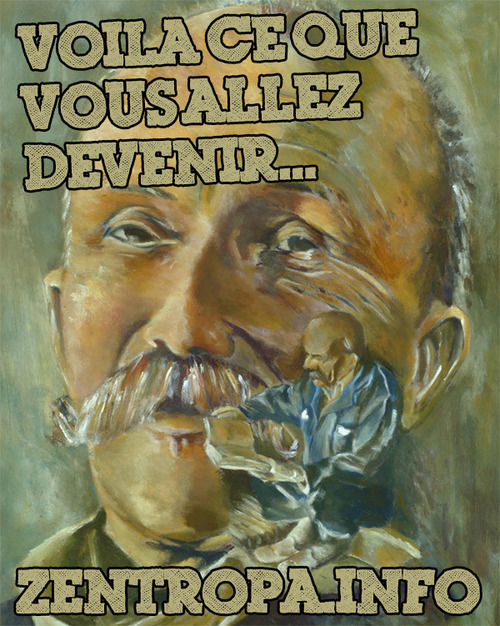
Henri Vincenot
Source: http://zentropaville.tumblr.com
00:05 Publié dans Citation, Littérature | Lien permanent | Commentaires (0) | Tags : henri vincenot, lettres, littérature, lettres françaises, littérature française, citation |  |
|  del.icio.us |
del.icio.us |  |
|  Digg |
Digg | ![]() Facebook
Facebook
00:05 Publié dans Evénement, Littérature | Lien permanent | Commentaires (0) | Tags : événement, italie, ezra pound, lettres, littérature, littérature américaine, lettres américaines, poésie |  |
|  del.icio.us |
del.icio.us |  |
|  Digg |
Digg | ![]() Facebook
Facebook
Vient de paraître : Le Bulletin célinien n°357. Au sommaire :
- Marc Laudelout : Bloc-notes
- Éric Mazet : Nicole Debrie
- Jacques Aboucaya : Céline sur un fil d’or
- Jean-Gilles Malliarakis : Nicole et « son » Dr Destouches
- Pierre de Place : « Quand la mort est en colère »
- Henri Godard : Céline, Chautard et l’argot
- André Rousseaux : L’argot est à la mode en littérature [1932]
- Marc Laudelout : Proust et les maudits
Le Bulletin célinien, Bureau Saint-Lambert, B. P. 77 BE 1200 Bruxelles.
Courriel : celinebc@skynet.be. Abonnement (11 numéros) : 55 €
10:34 Publié dans Littérature, Revue | Lien permanent | Commentaires (0) | Tags : revue, céline, littérature, lettres, lettres françaises, littérature française |  |
|  del.icio.us |
del.icio.us |  |
|  Digg |
Digg | ![]() Facebook
Facebook
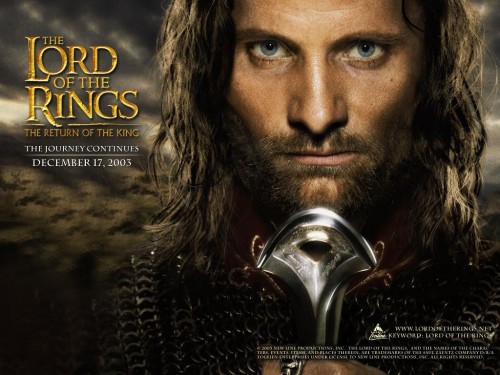
 Un articolo uscito non troppo tempo fa sul Corriere della Sera, a firma di Dario Fertilio (1), ripercorreva le più sensazionali, e in molti casi inspiegabili, bocciature per il Premio Nobel per la letteratura; a conferma del fatto che forse è più illustre la lista degli esclusi che quella di coloro a cui è stato conferito il celeberrimo riconoscimento (2). Tra coloro giudicati “non all’altezza” compare anche il nome di J. R. R. Tolkien. Il motivo della bocciatura ha del sorprendente, ovvero sembra che l’inglese utilizzato dallo scrittore e linguista nei suoi romanzi non fosse degno di un tale premio. In questa analisi intendiamo fornire, per ovvi motivi di spazio, solo delle prime indicazioni e chiavi di lettura su un argomento decisamente complesso e quasi per nulla studiato dalla letteratura di settore in lingua italiana. Tornando al succitato articolo di Fertilio, leggiamo come i giurati scelti dalla Accademia Reale Svedese delle Scienze abbiano a suo tempo etichettato l’opera tolkieniana quale “prosa di seconda categoria”, e poco importa se si ha a che fare con uno degli autori più letti e apprezzati nella intera storia della letteratura mondiale. L’assurdo lo si raggiunge quando si pensa che non solo Tolkien è stato professore di Letteratura Inglese Medievale a Oxford, ma persino esperto traduttore di testi antichi (3). Su questo tema, potrebbe essere utile citare un interessante saggio dell’accademico anglosassone Ross Smith, nel quale si evidenzia la passione di Tolkien per l’inglese antico, dunque per le radici stesse di questa lingua: “Una relazione del professor Tom Shippey intitolata Tolkien and the Beowulf-Poet comincia con la seguente domanda retorica: ‘Tolkien si è mai chiesto se lui potesse essere il poeta del Beowulf reincarnato?’” (4). Ciononostante, l’inglese di Tolkien è stato considerato da molti e per lungo tempo non abbastanza buono.
Un articolo uscito non troppo tempo fa sul Corriere della Sera, a firma di Dario Fertilio (1), ripercorreva le più sensazionali, e in molti casi inspiegabili, bocciature per il Premio Nobel per la letteratura; a conferma del fatto che forse è più illustre la lista degli esclusi che quella di coloro a cui è stato conferito il celeberrimo riconoscimento (2). Tra coloro giudicati “non all’altezza” compare anche il nome di J. R. R. Tolkien. Il motivo della bocciatura ha del sorprendente, ovvero sembra che l’inglese utilizzato dallo scrittore e linguista nei suoi romanzi non fosse degno di un tale premio. In questa analisi intendiamo fornire, per ovvi motivi di spazio, solo delle prime indicazioni e chiavi di lettura su un argomento decisamente complesso e quasi per nulla studiato dalla letteratura di settore in lingua italiana. Tornando al succitato articolo di Fertilio, leggiamo come i giurati scelti dalla Accademia Reale Svedese delle Scienze abbiano a suo tempo etichettato l’opera tolkieniana quale “prosa di seconda categoria”, e poco importa se si ha a che fare con uno degli autori più letti e apprezzati nella intera storia della letteratura mondiale. L’assurdo lo si raggiunge quando si pensa che non solo Tolkien è stato professore di Letteratura Inglese Medievale a Oxford, ma persino esperto traduttore di testi antichi (3). Su questo tema, potrebbe essere utile citare un interessante saggio dell’accademico anglosassone Ross Smith, nel quale si evidenzia la passione di Tolkien per l’inglese antico, dunque per le radici stesse di questa lingua: “Una relazione del professor Tom Shippey intitolata Tolkien and the Beowulf-Poet comincia con la seguente domanda retorica: ‘Tolkien si è mai chiesto se lui potesse essere il poeta del Beowulf reincarnato?’” (4). Ciononostante, l’inglese di Tolkien è stato considerato da molti e per lungo tempo non abbastanza buono.
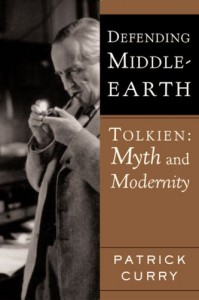 Giudizio avventato? Svista clamorosa o semplice miopia intellettuale? In fondo, non si diceva la stessa cosa di Joseph Conrad, altro mostro sacro della letteratura anglosassone? Se per quest’ultimo la ragione della sua presunta inadeguatezza letteraria era da imputare al fatto di essere di origine straniera (5), l’inglese non essendo in effetti la sua prima lingua, per quanto riguarda Tolkien, crediamo di non azzardare un giudizio privo di fondamento se affermiamo che la sua “colpa” risiedeva proprio nella forma di letteratura in cui si esprimeva: il (6) Fantasy. Tuttavia, Tolkien non fu l’unico a essere “maltrattato”, in quella occasione, dai giurati del Nobel (7). Non è un mistero per nessuno del resto che la distribuzione geografica fra i paesi e un equilibrio fra destra e sinistra (con una prevalenza per quest’ultima) presiedano da sempre ai criteri di scelta. Il preconcetto storico nei confronti di Tolkien è principalmente legato alla accusa di fuggire dalla realtà, di non essere un autore impegnato ma solo un buon mestierante che si cimenta a scrivere complesse favole per bambini troppo cresciuti. Lo scrittore Howard Jacobson, tanto per citare uno dei numerosi casi di ostilità intellettuale susseguitesi negli anni, reagì con rabbioso disprezzo all’incredibile successo delle opere del nostro autore: “Tolkien… quello per bambini, no? O per adulti ritardati…”. Raramente un romanzo ha causato tante controversie e il vetriolo della critica ha messo in evidenza lo scisma culturale tra i letterati “illuminati” e il pubblico dei lettori. A difesa di Tolkien, qualche anno addietro, si è levato con vigore Patrick Curry, il quale in un suo studio (8) afferma senza mezze parole che Il signore degli anelli è tutto tranne che una “fuga dalla realtà”. Per Curry, Tolkien non ci fa solo la predica, come avviene in John Ruskin o G. K. Chesterton, sui pericoli del mondo moderno. Egli ha infatti tessuto con la sua opposizione alla modernità una narrazione ricca e intricata che offre una alternativa, con la creazione di un mondo completamente diverso, ma che è a sua volta una proposta per una riscoperta della nostra Tradizione.
Giudizio avventato? Svista clamorosa o semplice miopia intellettuale? In fondo, non si diceva la stessa cosa di Joseph Conrad, altro mostro sacro della letteratura anglosassone? Se per quest’ultimo la ragione della sua presunta inadeguatezza letteraria era da imputare al fatto di essere di origine straniera (5), l’inglese non essendo in effetti la sua prima lingua, per quanto riguarda Tolkien, crediamo di non azzardare un giudizio privo di fondamento se affermiamo che la sua “colpa” risiedeva proprio nella forma di letteratura in cui si esprimeva: il (6) Fantasy. Tuttavia, Tolkien non fu l’unico a essere “maltrattato”, in quella occasione, dai giurati del Nobel (7). Non è un mistero per nessuno del resto che la distribuzione geografica fra i paesi e un equilibrio fra destra e sinistra (con una prevalenza per quest’ultima) presiedano da sempre ai criteri di scelta. Il preconcetto storico nei confronti di Tolkien è principalmente legato alla accusa di fuggire dalla realtà, di non essere un autore impegnato ma solo un buon mestierante che si cimenta a scrivere complesse favole per bambini troppo cresciuti. Lo scrittore Howard Jacobson, tanto per citare uno dei numerosi casi di ostilità intellettuale susseguitesi negli anni, reagì con rabbioso disprezzo all’incredibile successo delle opere del nostro autore: “Tolkien… quello per bambini, no? O per adulti ritardati…”. Raramente un romanzo ha causato tante controversie e il vetriolo della critica ha messo in evidenza lo scisma culturale tra i letterati “illuminati” e il pubblico dei lettori. A difesa di Tolkien, qualche anno addietro, si è levato con vigore Patrick Curry, il quale in un suo studio (8) afferma senza mezze parole che Il signore degli anelli è tutto tranne che una “fuga dalla realtà”. Per Curry, Tolkien non ci fa solo la predica, come avviene in John Ruskin o G. K. Chesterton, sui pericoli del mondo moderno. Egli ha infatti tessuto con la sua opposizione alla modernità una narrazione ricca e intricata che offre una alternativa, con la creazione di un mondo completamente diverso, ma che è a sua volta una proposta per una riscoperta della nostra Tradizione.
Gli ostracismi nel mondo anglosassone verso Tolkien si ritrovano anche nelle parole di Chris Woodhead, dal 1994 al 2000 a capo del Servizio Ispezioni Scolastiche in Inghilterra, il quale stigmatizzava le basse aspettative culturali della opera tolkieniana, affermando in più occasioni come Il signore degli anelli è un libro che si legge benissimo, ma non è il prodotto migliore della letteratura inglese di questo secolo”. Woodhead dava voce alle preoccupazioni di molti pedagogisti presi alla sprovvista dal successo di Tolkien. Dunque, da un lato il malcelato snobismo intellettuale di molta critica, dall’altro il timore degli educatori che romanzi quali Il signore degli anelli potessero deviare i giovani dall’apprendimento di un perfetto inglese e dal costruirsi una solida cultura, grazie alla frequentazione di autori canonici.
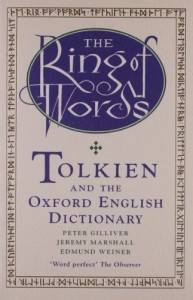 La ostilità verso Tolkien ha avuto anche la sua “scena” italiana (9). Difatti, sin dalla sua prima edizione, quella del 1970, nella quale compare anche quel dotto e suggestivo riassunto introduttivo a firma di Elémire Zolla, intorno al nostro autore nacquero vari pregiudizi. Non potendo ovviamente svalutare il linguaggio di una opera in traduzione, a Il signore degli anelli venne imputato di essere una storia reazionaria, vicina alle simpatie di una destra neofascista. Tuttavia, sulle qualità di quello che lo stesso Zolla definì “il maggior studioso di letteratura anglosassone e medievale” (10) si volle tacere, poiché Tolkien era tabù e lo restò per molto tempo. Se si intende analizzare le capacità linguistiche di Tolkien, è fondamentale tenere a mente come il suo primo lavoro al ritorno dal fronte della Prima Guerra Mondiale fu quello di assistente presso il prestigiosissimo Oxford English Dictionary (OED) (11). Lo stesso Tolkien ha affermato di aver imparato di più in questi due anni che in nessun altro uguale lasso di tempo nella sua vita. Pochi sono gli autori che hanno tratto così tanta della loro vena creativa dalla storia e dai mutamenti dei singoli vocaboli. Dal suo amore per le parole e il modo di utilizzarle possiamo trarre una ulteriore prova di come egli ricercasse con assiduità un linguaggio ricco, quanto vario, come si afferma nell’attento studio The Ring of Words (12), nel quale si parla di Tolkien anche come un creatore di parole (13).
La ostilità verso Tolkien ha avuto anche la sua “scena” italiana (9). Difatti, sin dalla sua prima edizione, quella del 1970, nella quale compare anche quel dotto e suggestivo riassunto introduttivo a firma di Elémire Zolla, intorno al nostro autore nacquero vari pregiudizi. Non potendo ovviamente svalutare il linguaggio di una opera in traduzione, a Il signore degli anelli venne imputato di essere una storia reazionaria, vicina alle simpatie di una destra neofascista. Tuttavia, sulle qualità di quello che lo stesso Zolla definì “il maggior studioso di letteratura anglosassone e medievale” (10) si volle tacere, poiché Tolkien era tabù e lo restò per molto tempo. Se si intende analizzare le capacità linguistiche di Tolkien, è fondamentale tenere a mente come il suo primo lavoro al ritorno dal fronte della Prima Guerra Mondiale fu quello di assistente presso il prestigiosissimo Oxford English Dictionary (OED) (11). Lo stesso Tolkien ha affermato di aver imparato di più in questi due anni che in nessun altro uguale lasso di tempo nella sua vita. Pochi sono gli autori che hanno tratto così tanta della loro vena creativa dalla storia e dai mutamenti dei singoli vocaboli. Dal suo amore per le parole e il modo di utilizzarle possiamo trarre una ulteriore prova di come egli ricercasse con assiduità un linguaggio ricco, quanto vario, come si afferma nell’attento studio The Ring of Words (12), nel quale si parla di Tolkien anche come un creatore di parole (13).
Tolkien è stato inoltre un traduttore puntiglioso (14). Sempre Ross Smith evidenzia quanto la traduzione come concetto fosse onnipresente nel nostro scrittore, persino nei suoi lavori creativi: “Parlando ora della prosa di Tolkien, è interessante notare come nella Appendice F de Il signore degli anelli ci dica che tutta la sua storia epica è per l’appunto una traduzione” (15). Chiaramente i personaggi della Terra di Mezzo non parlano inglese, difatti il loro linguaggio o lingua-franca è il Westron. Il “trucco” escogitato da Tolkien è quello di affermare di aver solo tradotto in inglese Il signore degli anelli, così da rendere comprensibile anche all’uomo moderno questa storia. Ovviamente, l’autore si diverte solo ad ammiccare alla possibile veridicità del proprio romanzo, creandone però un piacevole divertissement letterario.
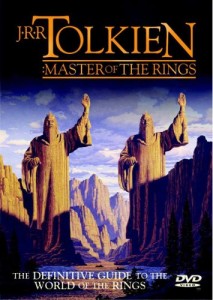 Tornando all’argomento chiave di questo nostro breve ragionamento, è un fatto decisamente curioso che una persona tanto attenta al significato delle parole – questa è infatti la qualità principale di un traduttore – non fosse tuttavia capace di utilizzare un inglese di qualità. Questo crediamo sia un altro punto abbastanza solido a favore di chi sostiene, e chi scrive è tra questi, che per lungo tempo i romanzi di Tolkien sono stati vittima di più di un mero fraintendimento e che il suo linguaggio sia degno di uno studio attento e imparziale. Parlando ora più da vicino proprio del linguaggio di Tolkien, riteniamo che esso sia ricco, grazie alla presenza di un vocabolario vario e ricercato. In più occasioni lo scrittore ci offre descrizioni meravigliose, con un tono evocativo che fa talvolta della lingua virtù. Soprattutto, egli crea un universo di mito, magia e archetipi che risuona nei più remoti recessi della memoria e dell’immaginazione del mondo occidentale. Tolkien era uno studioso di prim’ordine che attingeva dalla vitale eredità anglosassone.
Tornando all’argomento chiave di questo nostro breve ragionamento, è un fatto decisamente curioso che una persona tanto attenta al significato delle parole – questa è infatti la qualità principale di un traduttore – non fosse tuttavia capace di utilizzare un inglese di qualità. Questo crediamo sia un altro punto abbastanza solido a favore di chi sostiene, e chi scrive è tra questi, che per lungo tempo i romanzi di Tolkien sono stati vittima di più di un mero fraintendimento e che il suo linguaggio sia degno di uno studio attento e imparziale. Parlando ora più da vicino proprio del linguaggio di Tolkien, riteniamo che esso sia ricco, grazie alla presenza di un vocabolario vario e ricercato. In più occasioni lo scrittore ci offre descrizioni meravigliose, con un tono evocativo che fa talvolta della lingua virtù. Soprattutto, egli crea un universo di mito, magia e archetipi che risuona nei più remoti recessi della memoria e dell’immaginazione del mondo occidentale. Tolkien era uno studioso di prim’ordine che attingeva dalla vitale eredità anglosassone.
Giunti a questo punto, analizzeremo ora alcuni brevi estratti dal tomo I della Trilogia, presenti nel capitolo intitolato Il ponte di Khazad-Dûm (16). Si è scelta questa particolare sezione della opera tolkieniana per due motivi. Il primo è che essa è tra le parti più conosciute della saga de Il signore degli anelli. Il secondo, come vedremo, perché in questo capitolo si trovano molti degli elementi distintivi dello stile narrativo dell’autore. I brani sono tre, a dimostrazione di altrettanti aspetti del linguaggio del Tolkien scrittore.
Il primo è un significativo esempio di quanto la presenza di una idea della cultura antica (in inglese lore) aiutasse l’autore a pensare al suo lavoro come a un libro dentro un libro, creando in tal modo un significativo esempio di metaletteratura e ipertestualità. Così avviene durante la lettura da parte di Gandalf del diario del popolo nanico che un tempo abitava le Miniere di Moria. Le parole pronunciate dal mago si fondono con le vicende dei protagonisti della storia, l’orrore che un tempo distrusse gli abitanti di quei luoghi, pagina dopo pagina, mentre il mago grigio è intento a leggere, si sta per riabbattere sulla Compagnia dell’Anello: “A sudden dread and horror of the chamber fell on the Company, ‘We cannot get out’, muttered Gimli. ‘It was well for us that the pool had sunk a little, and that the Watcher was sleeping down at the southern end’” (423) (17).
Il secondo brano che abbiamo scelto potrebbe essere definito un “classico”, ovvero un esempio di come Tolkien abbia in buona parte codificato il linguaggio delle scene di azione del fantasy, con l’utilizzo di determinate parole per rappresentare azioni e suoni: “There was a crash on the door, followed by crash after crash. Rams and hammers were beating against it. It cracked and staggered back, and the opening grew suddenly wide. Arrows came whistling in, but struck the northern wall, and fell harmlessly to the floor” (426) (18). Che le frecce “sibilino” (whistle) è ormai un modo di dire codificato in questo genere narrativo e tutto l’impianto linguistico delle scene d’azione in Tolkien, come ben dimostra questo estratto, rappresenta il canone di ogni battaglia fantasy scritta dopo Il signore degli anelli.
Infine, l’autore inglese possiede anche quella visibilità (19) del linguaggio tanto cara a Italo Calvino: “The flames roared up to greet it, and wreathed about it; and a black smoke swirled in the air. Its streaming mane kindled, and blazed behind it” (432) (20). Qui la narrazione tolkieniana dimostra di avere quella fondamentale capacità di creare una astrazione nel lettore, grazie all’uso del linguaggio, così da suggestionarlo e, proprio come afferma Calvino, che riprende le parole di Dante, portarlo in luogo altro, quello della pura letteratura: “O immaginazione, che hai il potere d’importi alle nostre facoltà e alla nostra volontà e di rapirci in un mondo interiore strappandoci al mondo esterno, tanto che anche se suonassero mille trombe non ce ne accorgeremmo” (21).
Forse alla giuria del Nobel saranno sfuggite le qualità linguistiche e letterarie di Tolkien o, più verosimilmente, non era possibile dare un premio tanto blasonato a un autore di “storie per ragazzi”. Magari i giurati avranno giustificato la scelta di cassarlo, individuando, ad esempio, qualche incoerenza nella sua scrittura, come nel posizionamento di alcuni avverbi prima o dopo gli ausiliari, nel diverso modo di scrivere parole come toward e towards, addirittura a distanza di poche righe (458) o, sempre a breve distanza (454), l’alternanza nello scrivere il verbo “essere” (to be) al congiuntivo, con la grafia sia giusta (were), ma anche con quella sbagliata (was), benché da anni questa ultima sia accettata dalla maggioranza dei linguisti.
Concludendo, anche se la scrittura di Tolkien ha le sue piccole debolezze, come del resto avviene praticamente per ogni autore, esse sono davvero così tante e gravi da offuscare la vastità della sua visione, la fecondità della sua immaginazione, il potere ritmico del suo linguaggio? Riteniamo di no, considerato che abbiamo a che fare con uno scrittore in cui la lingua e la letteratura sono una cosa sola: “Tutte pagine di un unico libro, di un esperimento linguistico prima e culturale poi” (22). Dunque, Tolkien andrebbe apprezzato anche come creatore di un logos tipico del fantasy – magari provando a leggerlo in lingua originale – nelle cui pagine si incarna la idea del “mito come linguaggio” (23) e grazie al quale non è solo stato codificato un genere narrativo, ma anche un modo di scrivere.
* * *
(1) Si fa riferimento al numero uscito il 7/1/2012.
(2) Ricordiamo, ad esempio, la triplice bocciatura di Yukio Mishima, per motivi esclusivamente politici. Costui è considerato ormai da anni dalla critica internazionale come uno dei più importanti scrittori giapponesi del Dopoguerra.
(3) Sue sono varie importanti traduzioni, tra tutte quella della pietra miliare della letteratura medievale inglese (Old English e Middle English), il Beowulf, il cui autore e la datazione di composizione sono tuttora incerti. A Tolkien si deve inoltre quello che viene ancora oggi ritenuto il maggior lavoro critico, del 1936, su questo testo antico: The Monsters and the Critics and other Essays, HarperCollins, Londra 1997.
(4) R. Smith, J. R. R. Tolkien and the art of translating English into English, pubblicato nella rivisita online English Today, 99, settembre 2009, p. 1. Il saggio a cui fa riferimento Smith è: T. Shippey, Roots and Branches: Selected Papers on Tolkien, Walking Tree Publishers, Zurigo-Berna 2007, p. 1. Traduzione mia.
(5) Il suo vero nome era Józef Teodor Nałęcz Konrad Korzeniowski, nato a Berdicev (Polonia) nel 1857. A esser precisi, l’inglese fu la terza lingua che imparò: la prima fu, ovviamente, il polacco e la seconda il francese. Ciononostante, molta critica ritiene che l’inglese di Conrad sia decisamente ricco, con un uso del linguaggio evocativo e a tratti simbolico. Lo scrittore non aveva forse competenze da madrelingua nel parlato, visto che il suo accento tradiva una origine straniera.
(6) Preferiamo non seguire il costume abbastanza diffuso in Italia di utilizzare questo termine al femminile, dunque la fantasy, visto che la lingua inglese non attribuisce generi ai sostantivi. Ragion per cui, crediamo sia più corretta una interpretazione legata alla locuzione ellittica: “il genere fantasy”.
(7) Vi furono altri illustri bocciati nel fatidico 1961. Fra questi, due colossi della letteratura del Novecento come Graham Greene e Karen Blixen. Questi ultimi, tuttavia, ebbero un trattamento ben diverso da quello riservato a Tolkien, giacché si piazzarono rispettivamente al secondo e al terzo posto, dopo essere stati attentamente soppesati per le loro qualità letterarie.
(8) P. Curry, Defending Middle-Earth: Tolkien: Myth and Modernity, HarperCollins, Londra 1998.
(9) Uno dei più attenti studiosi tolkieniani italiani, Gianfranco de Turris, ha tracciato una precisa evoluzione storica di questo fenomeno, evidenziando come il periodo di maggiore ostracismo verso Tolkien nel nostro paese sia individuabile tra il 1977 e la fine degli anni ‘80. Cfr. Dal terriccio alle foglie, in “Albero” di Tolkien. Come il signore degli anelli ha segnato la cultura del nostro tempo, a cura di G. de Turris, Bompiani, Milano 2007.
(10) J. R. R. Tolkien, La compagnia dell’anello, Bompiani, Milano 2006, p. 11.
(11) Questo dizionario è da tempo considerato come il canone per l’inglese britannico ed è spesso messo in contrapposizione con il suo “rivale” storico, il Cambridge Dictionary. Se il primo, difatti, rappresenta la tradizione linguistica inglese, il secondo tende a incoraggiare l’utilizzo di un International English di chiara impronta americana. Non è un caso dunque che Tolkien, futuro filologo e linguista, sia uscito dalla scuola dell’OED.
(12) P. Gilliver, J. Marshall, E. Weiner, The Ring of Words: Tolkien and the Oxford English Dictionary, University Press, Oxford 2006.
(13) La sua vasta conoscenza del lessico inglese è dimostrata dal gran numero di arcaismi presenti nella sua scrittura. Una lista di questi si può trovare anche su Internet: http://www.glyphweb.com/arda/words.html.
(14) Ha tradotto specialmente opere medievali della letteratura angloassone. Un suo altro importante lavoro in questo campo è rappresentato dalla traduzione del poema anonimo del XIV secolo: Sir Gawain and the Green Knight, Pearl and Sir Orfeo, a cura di C. Tolkien, Allen & Unwin, Londra 1975.
(15) R. Smith, op. cit., p. 9. Traduzione mia.
(16) Trattasi del capitolo V del primo tomo della Trilogia. Il titolo originale è The Bridge of Khazad-Dûm.
(17) In corpo al testo i numeri di pagina della edizione originale in inglese: The Fellowship of the Ring, HarperCollins, Londra 2001. In nota, invece, sono riportate le traduzioni in italiano, a cura di Vicky Alliata di Villafranca, dei brani citati. “Una paura e un orrore improvvisi di quella stanza s’impadronirono della Compagnia. ‘Non possiamo più uscire’, mormorò Gimli. ‘È stato un bene per noi che lo stagno sia sceso leggermente, e che l’Osservatore stesse dormendo all’estremità sud’”. J. R. R. Tolkien, La compagnia dell’anello, cit., p. 424.
(18) “Un colpo risuonò con fracasso contro la porta, seguito da un altro e da altri ancora. Arieti e martelli battevano con forza sempre maggiore. Il battente scricchiolò vacillando, e la fessura si aprì improvvisamente. Delle frecce entrarono sibilando, ma urtando contro la parete caddero in terra inoffensive”. Ivi, p. 427.
(19) Ci riferiamo ovviamente all’omonimo capitolo, facente parte del celeberrimo testo di Italo Calvino: Lezioni americane, Mondadori, Milano 1993, pp. 89-110.
(20) “Con un ruggito le fiamme s’innalzarono in segno di saluto, intrecciandosi intorno a lui; un fumo nero turbinò nell’aria. La criniera svolazzante dell’oscura forma prese fuoco, avvampandolo”. J. R. R. Tolkien, La compagnia dell’anello, cit., p. 433.
(21) I. Calvino, op. cit., p. 92.
(22) A. Bonomo, Nostalgia di un’innocenza perduta: disobbedienza e sacrificio in The Hobbit di J. R. R. Tolkien, in Rivista di Studi Italiani, Anno XXIX, n° 1, Giugno 2011, p. 291.
(23) Ivi, p. 288.
* * *
Tratto, con il gentile consenso della Redazione, da Antarès, n. 03/2012, J.R.R. Tolkien. Un’epica per il nuovo millennio, http://www.antaresrivista.it/Antares_03_web.pdf.
00:01 Publié dans Littérature | Lien permanent | Commentaires (0) | Tags : littérature, lettres, lettres anglaises, littérature anglaise, tolkien, seigneur des anneaux |  |
|  del.icio.us |
del.icio.us |  |
|  Digg |
Digg | ![]() Facebook
Facebook
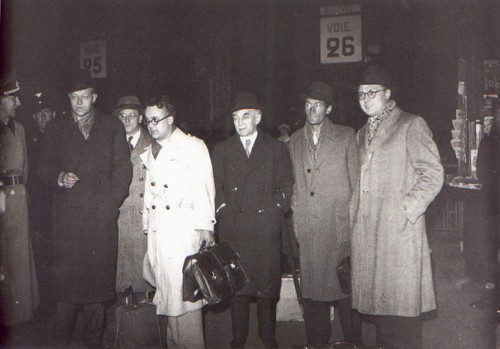
Weimar 1941-1942: la Société Européenne des Ecrivains
par Christophe Dolbeau
Au soir du 4 octobre 1941, trois écrivains français, Jacques Chardonne, Marcel Jouhandeau et Ramon Fernandez, embarquent dans un train de nuit qui va les conduire en Allemagne où les autorités les invitent à participer à un congrès littéraire. Ils seront rejoints ultérieurement par quatre de leurs confrères, Abel Bonnard, Pierre Drieu la Rochelle, Robert Brasillach et André Fraigneau. Favorables au nazisme, pragmatiques, opportunistes ou simplement séduits par le discours européen de leurs interlocuteurs allemands, ces sept hommes apportent ainsi leur caution à une ambitieuse entreprise du Dr Gœbbels : mobiliser les écrivains derrière la bannière du Reich pour construire une Europe nouvelle.
À la découverte du Reich
À un peu plus d’un an de l’armistice franco-allemand et tandis qu’une bonne moitié de la France est occupée, ce voyage est tout sauf anodin. Il démontre qu’une page est en train de se tourner et que certains intellectuels sont prêts à jouer la carte allemande. Ce phénomène n’est pas circonscrit à la France et dès l’escale de Cologne, nos voyageurs retrouvent un petit groupe de collègues arrivés des quatre coins du continent. Il y là une romancière bulgare, Fani Popowa-Mutafowa (1), membre du mouvement fascisant des « Ratniks » (Combattants), un essayiste et poète croate, Antun Bonifačić (2), proche du gouvernement oustachi, le jeune poète et dramaturge finnois Arvi Kivimaa (3), le Danois Svend Fleuron (4), auteur d’ouvrages sur la nature et les animaux sauvages, et son compatriote Ejnar Howalt (5), dramaturge et militant du parti national-socialiste danois, le philosophe fasciste italien Alfredo Acito, les phalangistes espagnols Ernesto Giménez Caballero (6) et Luis Felipe Vivanco (7), le Norvégien Kåre Bjørgen (8), disciple de Quisling, le Suédois Einar Malm (9), le poète frison Rintsje Piter Sybesma (10) et les Flamands Ferdinand Vercnocke (11) et Filip de Pillecijn (12). Pour accueillir et guider cette quinzaine d’invités, les organisateurs de la tournée ont mobilisé toute une escouade de jeunes talents au premier rang desquels se détachent l’historien Karl-Heinz Bremer (13) et le lieutenant Gerhard Heller (14), deux hommes qui jouent à Paris un rôle capital. Autour d’eux sont également du voyage les poètes Moritz Jahn (15), Karl-Heinz Bischoff (16), Friedrich Schnack (17) et Hans Baumann (18), ainsi que le dramaturge August Hinrichs (19) et le romancier et traducteur Carl Rothe (20). Les autorités ne lésinent pas : les visiteurs sont traités de façon royale et entre deux pèlerinages culturels, ils ont droit à toutes sortes d’attentions. On les emmène voir la maison de Stefan George, à Bingen, puis le foyer natal de Gœthe, à Mayence, avant de leur faire déguster quelques bons crus rhénans et de les recevoir en grandes pompes à Heidelberg. À Munich, le groupe est hébergé au Bayerischer Hof, l’un des plus beaux hôtels de la ville, où il rencontre Hanns Johst (21), le tout puissant président de la Chambre des Écrivains du Reich. À Salzbourg, les voyageurs assistent à une représentation des Noces de Figaro et le lendemain, ils sont à Vienne où le bourgmestre leur offre le souper. Ils visitent ensuite Baden, la station thermale qu’affectionnait Beethoven, et font le tour de la demeure de Schubert, avant de prendre part, à la Hofburg, au grand dîner d’apparat qu’offre en leur honneur le coruscant Reichsstatthalter de l’Ostmark, Baldur von Schirach. Le 21 octobre, une dernière étape conduit enfin les visiteurs à Berlin où ils rencontrent Carl Schmitt et visitent Babelsberg, la nouvelle chancellerie et le ministère de la propagande où le Dr Gœbbels leur adresse quelques mots de bienvenue. Leur périple touristique s’achève là car le 23 octobre, ils sont attendus à Weimar où vont débuter les rencontres poétiques (Dichtertreffen) dont ils sont les hôtes d’honneur.
Littérature et Ordre Nouveau
Le 24 octobre 1941, c’est donc dans la grande Weimarhalle et sous un oriflamme frappé d’une Croix de fer, d’un livre et d’un glaive que s’ouvre le congrès qui a pour thème « la littérature dans l’Europe de demain ». Le groupe des invités étrangers s’est étoffé de quelques personnalités et il compte désormais une bonne trentaine de membres. Au nombre des gens qui sont venus directement figurent les Français Abel Bonnard, Pierre Drieu la Rochelle, Robert Brasillach et André Fraigneau que nous avons cités plus haut, les Flamands Felix Timmermans (22) et Ernest Claes (23), les Néerlandais Jan de Vries (24) et Jan Eekhout (25), le Finlandais Veikko Antero Koskenniemi (26), le Suisse John Knittel (27), le Norvégien Lars Hansen (28), l’Italien Arturo Farinelli (29), les Roumains Niculae I. Herescu (30) et Ion Sân-Giorgiu (31) et les Hongrois József Nyirö (32) et Lörinc Szabó (33). Après le discours d’inauguration que prononce Wilhelm Hægert, chef de la section « littérature » au ministère de la Propagande et vice-président de la Chambre des Écrivains, plusieurs orateurs allemands, dont Hanns Johst, Hans Baumann, Bruno Brehm (34) et Mauritz Jahn, se succèdent à la tribune pour évoquer qui le rôle phare de la race germanique dans l’essor et la défense de la culture européenne, qui la croisade contre le communisme ou qui encore la place du poète en temps de guerre et la nécessité de célébrer l’héroïsme sous toutes ses formes.. Au-delà de ces allocutions plus ou moins inspirées, l’événement majeur de ces journées reste toutefois la décision que prennent les participants de pérenniser le climat amical du congrès et de formaliser leur coopération en se regroupant de façon permanente au sein d’une nouvelle association, la Société Européenne des Écrivains (Europäische Schriftsteller-Vereinigung ou ESV). Cette initiative a, semble-t-il, pour origine une suggestion conjointe du Prix nobel norvégien Knut Hamsun, du Flamand Stijn Streuvels (35) et de la romancière finnoise Maila Talvio (36), et le Dr Gœbbels en a, bien sûr, aussitôt saisi tout l’intérêt : placée sous le haut patronage de son ministère, la nouvelle association ne pourra que contribuer au rayonnement culturel du Reich et favoriser la collaboration en Europe. À titre personnel, le ministre y voit aussi une belle revanche sur le PEN club international qui a exclu son pays en 1934, et plus précisément sur son président d’alors, H. G. Wells, un individu qui prétend n’avoir « jamais rencontré un homme plus juste, plus candide et plus honnête » que Joseph Staline…
La Société Européenne des Écrivains (ESV) se choisit un président en la personne du romancier italo-bavarois Hans Carossa (37), deux vice-présidents, M.M. Koskenniemi et Giovanni Papini (38), et un secrétaire général qui sera Carl Rothe. Les statuts de l’association ne seront signés que le 27 mars 1942 (39), au terme du premier exercice. Ils sont assez souples et dénués de connotation politique. L’article deux précise que le but de la société est « l’encouragement des contacts personnels et des rencontres entre écrivains des nations européennes, la discussion et la solution de tâches et de désirs communs dans toutes les branches de la littérature ; la consultation compétente en matière juridique et économique » (40) ; l’article cinq indique que l’association « se divise en groupes nationaux qui sont représentés par leurs porte-parole » ; l’article sept stipule que « l’on n’est membre qu’à titre purement personnel » et que « l’on n’acquiert pas la qualité de membre par une adhésion volontaire mais uniquement par une nomination », cette dernière étant faite par le président de la société, sur proposition du porte-parole du groupement national (article 8). Le siège social est établi à Weimar (article 3) et la cotisation fixée à dix Reichsmarks (article 12). Entre deux flâneries dans Weimar, une visite de la maison de Gœthe et un dîner au château de Tiefurt, les congressistes participent à différents ateliers. Parmi divers projets, ils envisagent de créer une grande bibliothèque ouverte aux membres de la société et se promettent d’encourager activement la diffusion dans toute l’Europe des meilleures œuvres des auteurs contemporains. Dans l’immédiat, ils se fixent néanmoins pour premier objectif de lancer une publication de prestige qui servira de vitrine à l’association. Les protecteurs allemands de l’ESV ayant donné leur accord et promis quelques crédits, le premier numéro du mensuel Europäische Literatur verra le jour en mai 1942. Dirigé par Wilhelm Ruoff, il s’agit d’un magazine très éclectique et non dépourvu d’attraits qui traite aussi bien de la poésie japonaise que de la littérature espagnole contemporaine, de la poésie lyrique croate ou du point de vue danois sur les lettres américaines, qui aborde de grands thèmes comme le Danube, le Rhin ou Dante en Allemagne, et consacre de nombreux reportages aux auteurs de l’ESV (41).
Les premières rencontres européennes s’achèvent le dimanche 26 octobre pour faire place à la Semaine du livre de guerre allemand qu’inaugure Joseph Gœbbels. Dans son allocution d’ouverture, le ministre ne manque pas de saluer les invités étrangers. Ceux-ci étaient présents, le matin même, lorsque le Reichsminister est allé fleurir les tombes jumelles de Gœthe et de Schiller, et dans la soirée, ils prennent part à un dîner d’adieu suivi d’une représentation de l’Iphigénie en Tauride de Gœthe. Le lendemain, les congressistes regagnent leurs pays respectifs, à l’exception de Bonnard, Drieu la Rochelle, Brasillach et Fraigneau qui font un crochet à Jäckelsbruch où Arno Breker les reçoit dans son atelier, puis à Berlin où ils s’entretiennent avec quelques travailleurs français. À leur retour, tous les invités de Weimar vanteront la parfaite courtoisie de leurs hôtes, l’organisation impeccable de leur séjour et l’ambiance particulièrement conviviale du congrès ; tous souligneront également les belles perspectives de réconciliation et de renaissance européenne qu’ouvrent de telles rencontres.
Un indéniable succès
Dès la fin de l’année 1941, la toute nouvelle Société Européenne des Écrivains commence à s’organiser et ses « groupes nationaux » à recruter. Un certain mystère demeure, aujourd’hui encore, sur la composition du groupe français dont on ne connaît avec certitude que ceux de ses membres qui se sont rendus à Weimar. On peut toutefois supputer que des gens comme Alphonse de Châteaubriant, Ernest Fornairon, Edouard Dujardin ou Camille Mauclair ont pu y appartenir mais ce ne sont que des suppositions. Apparaît aussi à Paris, en février 1943, un hebdomadaire baptisé Panorama dont les objectifs sont fort proches de ceux de Europäische Literatur (42) et dont les collaborateurs sont souvent les mêmes. Moins de cachotteries, en revanche, pour la Finlande où l’on sait précisément qu’une cinquantaine d’écrivains, dont Mika Waltari (43) et Viljo Kajava (44), figurent dans le groupe local de l’ESV. En Norvège, Knut Hamsun a rejoint l’association et en Suède, Sven Hedin (45) a fait de même. En Croatie et outre Antun Bonifačić que nous avons déjà mentionné, l’association compte 17 membres dont Mile Budak (46), Slavko Kolar (47), Mihovil Kombol (48), Milan Begović (49), Dobriša Cesarić (50), Zvonko Milković (51) et Ivan Goran Kovačić (52). En Espagne, où le recrutement de l’ESV n’est pas bien connu, il est probable que fassent partie de l’association quelques-uns des poètes (53) qui signent, en 1941, le recueil Poemas de la Alemania eterna, mais il s’agit là encore d’une hypothèse. La Belgique, de son côté, est un pays où l’ESV – qui dispose de deux groupes – rencontre un franc succès. Chez les Flamands, la plupart des auteurs nationalistes et « völkisch » – Stijn Streuvels, Felix Timmermans, Filip de Pillecijn, Ferdinand Vercnocke, Emiel Buysse (54), Ernest Claes, Cyriel Verschaeve (55), Gerard Walschap (56), Wies Moens (57) et Antoon Thiry (58) – en font partie (59), et quant à la « section wallonne et belge de langue française », elle rassemble, entre autres, les romanciers prolétariens Pierre Hubermont (60) et Constant Malva (61) (photo ci-dessous), l’académicienne Marie Gevers (62), le journaliste Pierre Daye (63), le traducteur Guillaume Samsoen de Gérard (64), le régionaliste Joseph Mignolet (65), le rexiste Lucien Jablou (alias Franz Briel) et même le très curieux Sulev Jacques Kaja (66).
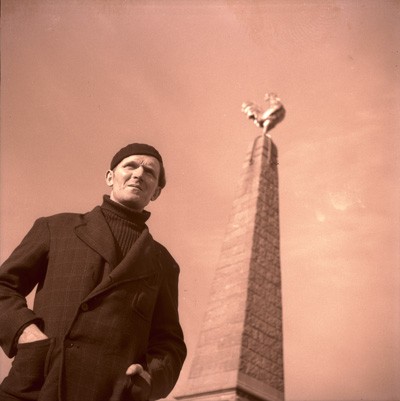
Conformément aux statuts de l’association comme aux vœux de ses membres, la Société Européenne des Écrivains se réunit une seconde fois à l’automne 1942, entre le 7 et le 11 octobre. Cette fois, il n’y a pas eu de balade touristique et les conditions de guerre se font sentir : l’hébergement est bien moins luxueux et les menus frugaux. Dans un rapport à son ministre de tutelle, l’un des participants italiens se plaindra notamment de l’omniprésence de la soupe de pommes de terre et de la margarine… Quoi qu’il en soit, de nombreux auteurs étrangers ont cependant fait le déplacement. La Finlandaise Maila Talvio est présente, tout comme ses compatriotes Veikko Antero Koskenniemi, Mika Waltari, Viljo Kajava, Örnulf Tigerstedt (67) et Tito Colliander (68). On dénombre également cinq Français, M. M. Jacques Chardonne, Pierre Drieu la Rochelle, André Fraigneau, André Thérive et Georges Blond (69), le Roumain Liviu Rebreanu (70), le poète hollandais Henri Bruning (71), le dramaturge danois Svend Borberg (72) et le romancier slovaque Jozef Cíger-Hronský (73). Contrairement au premier congrès, la délégation italienne est cette fois plutôt fournie avec les académiciens Arturo Farinelli, Antonio Baldini (74) et Emilio Cecchi (75), le philosophe et musicologue Giulio Cogni (76), les universitaires fascistes Mario Sertoli et Alfredo Acito, le critique Enrico Falqui (77) et les deux valeurs montantes que sont Elio Vittorini (78) et Giaime Pintor (79).
Ce second congrès a pour thème « le poète et le guerrier » et en l’absence de Hans Carossa comme de Papini, c’est le Finnois Koskenniemi qui préside. Comme l’année précédente, la plupart des orateurs sont des écrivains allemands – Edwin Erich Dwinger (80), Wilhelm Ehmer (81), Wilhelm Schäfer (82), Gerhard Schumann, Georg von der Vring (83) et Hermann Burte (84) – mais deux Italiens, Arturo Farinelli et Emilio Cecchi, sont également invités à s’adresser à l’assemblée. Si les communications et les débats restent très académiques, l’association prend toutefois, sur le plan pratique, une décision importante, celle d’attribuer, pour la première fois, une bourse d’encouragement à deux jeunes auteurs : la Finlandaise Irja Salla (85) et le Croate Dobriša Cesarić. La guerre et ses enjeux sont bien évidemment au cœur de toutes les conversations des congressistes auxquels Joseph Goebbels ne manque pas de rappeler, dans son discours de clôture, que le conflit en cours n’est pas seulement un combat entre des forces matérielles mais aussi un affrontement entre des forces spirituelles et que les écrivains n’ont d’autre choix que de s’engager. Le 11 octobre, les écrivains se séparent et pour la plupart, ils ne se reverront pas : du fait de la tournure négative du conflit et de l’intensification des bombardements aériens sur l’Allemagne, il n’y aura, en effet, pas d’autre réunion plénière de l’ESV jusqu’à la dissolution officielle de l’association, en 1948. En 1943, néanmoins, plusieurs membres de l’ESV – Robert Brasillach, Ernesto Giménez Caballero, Pierre Daye, Filip de Pillecijn, Ferdinand Vercnocke, Örnulf Tigerstedt – se rendront à Katyn pour témoigner de l’ampleur du massacre commis par les Soviétiques : ce sera sans doute la dernière manifestation officielle de l’association.
Une initiative novatrice
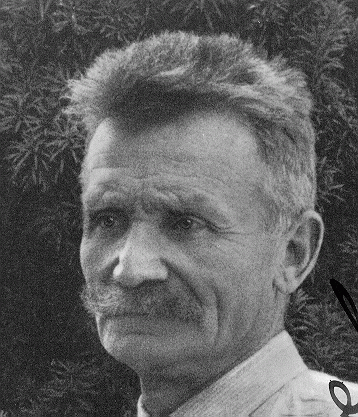 À l’issue de cette brève évocation de la Société Européenne des Écrivains, force est de constater que le IIIe Reich et l’Europe occupée n’étaient pas le désert culturel absolu que l’on nous a si souvent décrit. Dans cet enfer, il y avait des musiciens, des peintres et des sculpteurs qui s’exprimaient (86) et aussi des écrivains qui ne se sentaient pas si mal. Et quant au Dr Gœbbels, loin de brandir son Browning à l’énoncé du mot culture (87), il témoignait, au contraire, d’un réel intérêt pour les Lettres et les Arts, domaines où il faisait souvent montre (toutes proportions gardées, bien sûr) d’un « libéralisme » étonnant. La Société Européenne des Écrivains en est un peu l’illustration puisque le ministre de la Propagande en avait, en toute connaissance de cause, confié les leviers de commande à des hommes qui n’avaient rien de grands partisans du régime nazi. Hans Carossa et Carl Rothe n’étaient pas membres du NSDAP : le premier se réclamait presque ouvertement de l’ « émigration intérieure » et quant au second, il était même carrément en relation avec des conspirateurs antinazis. Parmi les membres allemands de l’association, nombreux étaient les auteurs qui, à l’instar de Hans Friedrich Blunck (88), Karl Heinrich Waggerl (89), Wilhelm Schäfer ou Eugen Roth (90), n’avaient pas la carte du parti, et si l’on trouvait, bien sûr, chez les adhérents étrangers, un fort contingent de sympathisants déclarés du national-socialisme, on y rencontrait aussi des conservateurs, des européistes et de simples anticommunistes. Lorsque, en mars 1942 et à l’occasion d’une réunion de l’ESV, Giovanni Papini fit un vibrant éloge du christianisme, on ne peut pas dire qu’il était vraiment en adéquation avec la doctrine nazie. Quelques auteurs provenaient d’horizons peu orthodoxes, comme l’académicien Emilio Cecchi qui avait signé, en 1925, le Manifeste des intellectuels antifascistes de Benedeto Croce, ou Viljo Kajava qui était un ancien marxiste. Certains, enfin, n’avaient pas véritablement choisi leur camp : ils étaient peut-être là par opportunisme ou par simple curiosité. Ainsi, les Croates Dobriša Cesarić, Slavko Kolar et Ivan Goran Kovačić ne tarderont-ils pas à se rallier à Tito, et les Italiens Vittorini et Pintor à rejoindre eux aussi les partisans communistes ou les forces alliées…
À l’issue de cette brève évocation de la Société Européenne des Écrivains, force est de constater que le IIIe Reich et l’Europe occupée n’étaient pas le désert culturel absolu que l’on nous a si souvent décrit. Dans cet enfer, il y avait des musiciens, des peintres et des sculpteurs qui s’exprimaient (86) et aussi des écrivains qui ne se sentaient pas si mal. Et quant au Dr Gœbbels, loin de brandir son Browning à l’énoncé du mot culture (87), il témoignait, au contraire, d’un réel intérêt pour les Lettres et les Arts, domaines où il faisait souvent montre (toutes proportions gardées, bien sûr) d’un « libéralisme » étonnant. La Société Européenne des Écrivains en est un peu l’illustration puisque le ministre de la Propagande en avait, en toute connaissance de cause, confié les leviers de commande à des hommes qui n’avaient rien de grands partisans du régime nazi. Hans Carossa et Carl Rothe n’étaient pas membres du NSDAP : le premier se réclamait presque ouvertement de l’ « émigration intérieure » et quant au second, il était même carrément en relation avec des conspirateurs antinazis. Parmi les membres allemands de l’association, nombreux étaient les auteurs qui, à l’instar de Hans Friedrich Blunck (88), Karl Heinrich Waggerl (89), Wilhelm Schäfer ou Eugen Roth (90), n’avaient pas la carte du parti, et si l’on trouvait, bien sûr, chez les adhérents étrangers, un fort contingent de sympathisants déclarés du national-socialisme, on y rencontrait aussi des conservateurs, des européistes et de simples anticommunistes. Lorsque, en mars 1942 et à l’occasion d’une réunion de l’ESV, Giovanni Papini fit un vibrant éloge du christianisme, on ne peut pas dire qu’il était vraiment en adéquation avec la doctrine nazie. Quelques auteurs provenaient d’horizons peu orthodoxes, comme l’académicien Emilio Cecchi qui avait signé, en 1925, le Manifeste des intellectuels antifascistes de Benedeto Croce, ou Viljo Kajava qui était un ancien marxiste. Certains, enfin, n’avaient pas véritablement choisi leur camp : ils étaient peut-être là par opportunisme ou par simple curiosité. Ainsi, les Croates Dobriša Cesarić, Slavko Kolar et Ivan Goran Kovačić ne tarderont-ils pas à se rallier à Tito, et les Italiens Vittorini et Pintor à rejoindre eux aussi les partisans communistes ou les forces alliées…
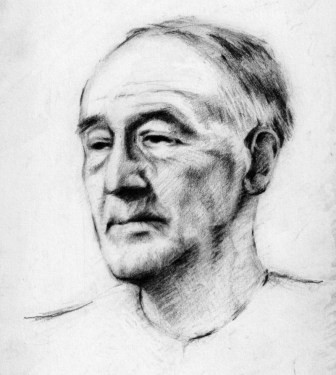 « Nul n’aura de l’esprit, hors nous et nos amis », écrivait déjà Molière auquel Jean-Paul Sartre fait écho à sa manière en affirmant que « par définition, un fasciste ne peut pas avoir de talent » (91). N’en déplaise à « l’agité du bocal » (comme le surnommait Céline), la Société Européenne des Écrivains comptait tout de même dans ses rangs des personnalités comme Knut Hamsun, Sven Hedin, Karl Heinrich Waggerl ou John Knittel qui étaient des auteurs de notoriété internationale et au talent unanimement reconnu. Elle réunissait aussi des gens comme Eugen Roth, Marcel Jouhandeau (photo), Mile Budak, Stijn Streuvels, V. A. Koskenniemi ou József Nyírö qui figuraient à l’époque et dans leurs pays respectifs parmi les auteurs les plus lus. Certes, à côté de ces « célébrités », l’ESV accueillait quelques écrivains moins connus mais ce déficit de notoriété ne tenait pas tant à leur manque de talent qu’au fait que l’ancien système les avait délibérément ignorés ou marginalisés pour des raisons idéologiques…
« Nul n’aura de l’esprit, hors nous et nos amis », écrivait déjà Molière auquel Jean-Paul Sartre fait écho à sa manière en affirmant que « par définition, un fasciste ne peut pas avoir de talent » (91). N’en déplaise à « l’agité du bocal » (comme le surnommait Céline), la Société Européenne des Écrivains comptait tout de même dans ses rangs des personnalités comme Knut Hamsun, Sven Hedin, Karl Heinrich Waggerl ou John Knittel qui étaient des auteurs de notoriété internationale et au talent unanimement reconnu. Elle réunissait aussi des gens comme Eugen Roth, Marcel Jouhandeau (photo), Mile Budak, Stijn Streuvels, V. A. Koskenniemi ou József Nyírö qui figuraient à l’époque et dans leurs pays respectifs parmi les auteurs les plus lus. Certes, à côté de ces « célébrités », l’ESV accueillait quelques écrivains moins connus mais ce déficit de notoriété ne tenait pas tant à leur manque de talent qu’au fait que l’ancien système les avait délibérément ignorés ou marginalisés pour des raisons idéologiques…
Au total et même si l’expérience a rapidement tourné court, il semble juste de dire que cette Société Européenne des Écrivains fut une initiative plutôt heureuse et novatrice. Il serait sans aucun doute naïf de ne pas voir la part d’hypocrisie et d’instrumentalisation politique qu’elle recelait, mais au-delà de cette indispensable réserve, force est de reconnaître que cette association s’inscrivait bel et bien dans le cadre d’un vrai projet européen. Elle traduisait indubitablement le désir sincère de nombreux écrivains de se concerter et d’avancer ensemble sur des chemins nouveaux, loin des coteries communisantes et cosmopolites qui régnaient avant-guerre sur la littérature et l’édition. Elle traduisait peut-être aussi, mais avec plus ou moins de sincérité, le souhait ou l’arrière-pensée de certains dirigeants allemands de bâtir autour de leur pays une véritable confédération européenne (92).
Christophe Dolbeau
Notes
(1) Fani Popowa-Mutafowa (1902-1977) est l’auteur de nombreux romans historiques (Le dernier des Assénides ; Ivan Assen II ; La fille du tsar Kaloyan) ; elle sera emprisonnée par les communistes en 1945.
(2) Antun Bonifačić (1901-1986) est l’auteur de recueils de poésie (Pjesme ; Sabrane pjesme), de romans (Krv Majke Zemlje ; Mladice ; Bit ćete kao Bogovi) et d’essais (Paul Valéry ; Ljudi Zapada). Réfugié au Brésil puis aux USA, il présidera le Mouvement de Libération Croate (HOP) entre 1975 et 1981.
(3) Arvi Kivimaa (1904-1984) a été le directeur du Théâtre de Tampere (1940-42) et du Théâtre National de Finlande (1950-1974). Auteur de romans (Epäjumala ; Viheriövä risti), il a également écrit des nouvelles, des essais et des pièces de théâtre.
(4) Svend Fleuron (1874-1966) est l’auteur de nombreux romans consacrés à la nature et aux animaux (Le roman d’un brochet ; Les cygnes du lac de Wild).
(5) Ejnar Howalt (1891-1953) est un auteur de comédies (Asfalten synger ; Hvis jeg havde Penge) ; il appartenait au parti national-socialiste danois (DNSAP).
(6) Ernesto Giménez Caballero (1899-1988) est l’auteur de divers ouvrages inspirés par le surréalisme, l’ultraïsme et le futurisme (Yo, inspector de alcantarillas ; Julepe de menta) ainsi que d’essais politiques (Genio de España ; La nueva catolicidad). Il fut l’un des premiers phalangistes. Après la guerre, il servira dans la diplomatie et occupera notamment le poste d’ambassadeur au Paraguay. Voir C. Dolbeau, « Ernesto Giménez Caballero, un phalangiste hors norme », in Les Parias, Lyon, Irminsul, 2001, pp. 229-239.
(7) Architecte de profession et neveu de José Bergamín, Luis Felipe Vivanco (1907-1975) a publié de nombreux recueils de poésie (Cantos de primavera ; Tiempo de dolor ; Continuación de la vida). D’abord de sympathie républicaine, il s’est rallié aux idées phalangistes en 1936.
(8) Kåre Bjørgen (1897-1974) est le poète officiel du Nasjonal Samling de Vidkun Quisling ; il est l’auteur de plusieurs recueils « engagés » (I Noregs namn ; Eld og blod ; Storm og stille) et d’une pièce dramatique (Angvare).
(9) Einar Malm (1900-1988) est un romancier, poète et scénariste (auteur notamment de l’adaptation cinématographique du roman d’August Strindberg Hemsöborna). Après guerre, il a consacré plusieurs ouvrages aux Indiens d’Amérique du Nord.
(10) Originaire de la Frise, Rintsje Piter Sybesma (1894-1975) est l’auteur de récits en prose (Om it hiem ; It anker) et de poésie (Ta de moam ; Der Zehnte Mai ; De swetten útlein). Il était membre du Nationaal-Socialistische Beweging de Anton Mussert.
(11) Avocat de profession et d’origine ostendaise, Ferdinand Vercnocke (1906-1989) est l’auteur de poèmes (Zeeland ; Heervaart ; Ask en Embla) et de récits en prose (Liebaerts, sagen voor de Dietsche jeugd ; Onze adelbrieven) ; il a également été le scénariste du film de propagande Vlaanderen te weer (1944). Il était sympathisant du Vlaams Nationaal Verbond (VNV).
(12) Filip de Pillecijn (1891-1962) est l’un des fondateurs du pèlerinage de l’Yser. Il est l’auteur de romans (Blauwbaard ; Hans van Malmédy ; De soldaat Johan), de nouvelles (Monsieur Hawarden ; Schaduwen) et d’essais biographiques (Stijn Streuvels en zijn werk ; Renaat De Rudder). Sympathisant des mouvements nationalistes VNV et DeVlag, il sera condamné à 10 ans de prison en 1947 mais sortira de détention en 1949.
(13) Historien de formation, Karl-Heinz Bremer (1911-1942), a été lecteur d’allemand à la Sorbonne et à l’École Normale Supérieure ; il fut aussi le traducteur des œuvres de Montherlant. Après avoir été l’un des dirigeants de l’Institut Allemand de Paris, il est envoyé sur le front de l’Est et tombe au combat à Veliky Novgorod, près du Lac Ilmen.
(14) Après des études de lettres à Berlin, Pise et Toulouse, Gerhard Heller (1909-1982) a travaillé à la Radio Berlin. Affecté à la Propaganda Staffel de Paris durant l’Occupation, il y supervise les services de la censure, ce qui le met en contact avec de nombreux éditeurs et écrivains.
(15) Moritz Jahn (1884-1979) est un professeur spécialisé dans l’étude du bas allemand. Il est l’auteur de plusieurs ouvrages sur cette thématique (Ulenspegel un Jan Dood ; Boleke Roleffs) ainsi que de nombreux essais (Das Denkmal des Junggesellen ; Die Gleichen).
(16) Libraire de profession, Karl-Heinz Bischoff (1900-1978) est l’auteur de nombreux récits et essais (Bis zur Heimkehr im Sommer ; Die Muschel ; Das grössere Glück). Membre du NSDAP, il fut également fonctionnaire auprès de la Chambre des Écrivains.
(17) Friedrich Schnack (1888-1977) a étudié la botanique, la géologie et l’entomologie avant de faire carrière dans le journalisme et la littérature. Il est l’auteur de poèmes (Vogel Zeitvorbei ; Palisander), de romans (Die goldenen Äpfel ; Die Orgel des Himmels), d’ouvrages sur la nature (Cornelia und die Heilkräuter ; Sybille und die Feldblumen) et de livres de voyage (Der Maler von Malaya ; Der Zauberer von Sansibar ; Der Mann aus Alaska).
(18) Instituteur, Hans Baumann (1914-1988) est un poète et l’un des plus célèbres compositeurs de chansons (Es zittern die morschen Knochen ; Hohe Nacht der klaren Sterne) de la Jeunesse Hitlérienne. Après la guerre (où il a servi dans une compagnie de propagande), il écrit des livres pour enfants qui rencontrent un grand succès.
(19) Spécialiste du bas allemand, August Hinrichs (1879-1956) est l’auteur de très nombreux récits et comédies (Der Moorhof ; Das Licht der Heimat ; Das Volk am Meer ; Der Musterbauer, etc) ainsi que de pièces radiophoniques.
(20) Carl Rothe (1900-1970) est l’auteur de romans (Die Zinnsoldaten ; Olivia) et d’essais (Weltkrieg gegen Deutsche Wirtschaft ; Karl IV von Luxemburg, deutscher Kaiser und König von Böhmen). Membre de l’Association pour le germanisme à l’étranger (VDA), il n’adhère pas, en revanche, au NSDAP et entretient des liens d’amitié avec plusieurs adversaires du régime (notamment Adolf Reichwein et Caesar von Hofacker, l’un des conjurés du 20 juillet 1944). Il sera, après guerre, le traducteur de Pierre Gaxotte.
(21) Président de la Chambre des Écrivains et de l’Académie de Poésie, Hanns Johst (1890-1978) est l’auteur de nouvelles (Der Anfang ; Die Begegnung ; Mask und Gesicht), de poèmes (Rolandruf ; Die Strasse), d’essais (Meine Erde heisst Deutschland) et de pièces de théâtre (Strof ; Propheten ; Wechsler und Händler ; Der Herr Monsieur ; Thomas Paine). Il est surtout connu pour sa pièce Schlageter où figure la fameuse phrase « Quand j’entends parler de culture, j’arme mon Browning ». Après guerre, il sera interné par les Alliés durant trois ans et demi.
(22) Autodidacte, Felix Timmermans (1886-1947) est l’auteur de romans (Pallieter ; Het kindeke Jezus in Vlaanderen ; Pieter Bruegel ; De familie Hernat), de poésie (Door de dagen ; Adagio) et de pièces de théâtre ; c’était également un peintre de talent. Ses ouvrages sont parmi les plus appréciés du public flamand.
(23) Ernest Claes (1885-1968) est l’auteur de très nombreux romans (De Witte ; Het leven van Herman Coene ; Kobeke ; De moeder en de drie soldaten ; etc). Brièvement interné à la fin de la guerre en raison de son appartenance au VNV, il sera finalement acquitté.
(24) Professeur à l’université de Leyde, Jan de Vries (1890-1964) est un linguiste et un mythographe de réputation internationale. Auteur de nombreux ouvrages qui font autorité (De Germaansche Oudheid ; Altgermanische Religiongeschichte ; Kelten und Germanen ; Het Nibelungenlied ; etc), il sera inquiété à la Libération bien qu’il se fût toujours montré très indépendant à l’égard des nazis.
(25) Jan Eekhout (1900-1978) est l’auteur de poésie (Louteringen ; In aedibus amoris ; De zanger van den Nacht) et de romans (Leven en daden van Pastoor Poncke van Damme in Vlaanderen ; De historie van Kathelijne Claes van Sluys in Vlaanderen ; etc). Proche du NSB de A. Mussert, il sera condamné à deux ans d’emprisonnement à la Libération.
(26) Professeur de littérature à l’Université de Turku et président de l’Association des Écrivains Finnois (1941-46), Veikko Antero Koskenniemi (1885-1962) est l’auteur de récits épiques (Nuori Anssi), de poèmes (Runoja ; Valkeat kaupungit ; Hiilivalkea) et d’essais (Kirjoja ja kirjailijoita). C’était l’un des auteurs les plus populaires de Finlande.
(27) John Knittel (1891-1970) est l’auteur de pièces de théâtre et de romans (Capitaine West ; Thérèse Étienne ; Le Basalte bleu ; Le Commandant ; Via Mala ; Le Docteur Ibrahim ; Amédée ; etc). En raison de ses sympathies pour le IIIe Reich, il sera exclu de l’Association des Écrivains Suisses…
(28) Originaire du nord de la Norvège, Lars Hansen (1869-1944) est l’auteur de romans (I Spitsbergens vold ; Jens Sørskar ; En havets søn ; Hvalrossen av Tromsø ; Beitsaren ; Kongen på Råsa ; Odin klarte det) qui seront pour la plupart traduits en allemand. Il était membre du Nasjonal Samling de V. Quisling.
(29) Linguiste de réputation internationale, Arturo Farinelli (1867-1948) fut professeur aux universités d’Innsbruck et Turin et membre de l’Académie d’Italie (1929). Il est l’auteur de nombreux essais (Die Beziehungen zwischen Spanien und Deutschland in der Literatur ; Dante, Pétrarque et Boccace en Espagne ; Le romantisme dans le monde latin ; Lope de Vega en Allemagne ; etc).
(30) Latiniste de réputation internationale, Niculae I. Herescu (1903-1961) fut professeur d’université, fondateur et directeur de l’Institut Roumain d’Études Latines, président de la Fondation Culturelle Carol Ier et de l’Association des Écrivains Roumains. Il est l’auteur de nombreux essais (La poésie latine : étude des structures phoniques ; Bibliographie de la littérature latine ; Ovidiana ; Points de vue sur la langue de Tite Live ; etc). À partir de 1944, il vit en exil, d’abord au Portugal puis en France
(31) Ion Sân-Giorgiu (1893-1950) est un poète (moderniste), un essayiste, un critique littéraire et un dramaturge, auteur de plusieurs pièces à succès (Masca ; Banchetul ; Femeia cu douā suflete). Membre successivement du Parti National Chrétien et du Front de la Renaissance Nationale, il sympathise ensuite avec la Garde de Fer. Émigré en 1944 et condamné à mort par contumace, il siègera au sein du gouvernement légionnaire en exil qu’avait fondé Horia Sima.
(32) Originaire de Transylvanie, József Nyírö (1889-1953) est l’auteur de romans et de nouvelles (Uz Bence ; Isten igájában ; Halhatatlan élet ; Nésna Küzdelem ; etc) très appréciés du public hongrois. Membre du mouvement des Croix Fléchées, il trouvera refuge en Allemagne puis en Espagne à la fin de la guerre.
(33) Lörinc Szabó (1900-1957) est l’auteur de plusieurs recueils de poésie (Föld, erdö, Isten ; Kalibán ; Te meg a világ ; Régen és most ; etc) qui lui ont valu de nombreuses distinctions. Il est également le traducteur de Shakespeare, Baudelaire, Villon, Verlaine, Gœthe, Kleist et Rilke. Il sera complètement exclu de la vie publique hongroise au lendemain de la guerre.
(34) D’origine autrichienne, Bruno Brehm (1892-1974) est l’auteur de plus de quarante romans et récits (Der lachende Gott ; Apis und este ; Das war das Ende ; Weder Kaiser noch König ; Tag der Erfüllung ; etc). Officier durant la Première Guerre mondiale, il sert à nouveau comme officier d’ordonnance (en Grèce, en Russie et en Afrique du Nord) durant la Seconde Guerre mondiale.
(35) Ancien boulanger, Stijn Streuvels (1871-1969) est un écrivain extrêmement prolixe et très populaire auprès du public flamand. La plupart de ses récits et romans (Zomerland ; De oogst ; Openlucht ; Reinaert de Vos ; De werkman ; etc) décrivent la vie des paysans et des gens modestes en Flandre Occidentale. À deux reprises, S. Streuvels a manqué de très peu le prix Nobel de littérature.
(36) Très célèbre en Finlande, Maila Talvio (1871-1951) est l’auteur de très nombreux romans et nouvelles (Haapaniemen keinu ; Aili ; Juha Joutsia ; Kirjava keto ; Itämeren tytar ; Pimeänpirtin hävitys ; Silmä yössä ; Karjet, etc). Elle a par ailleurs traduit et adapté en finnois les œuvres de Mæterlinck et Andersen. Animatrice d’un salon littéraire réputé, elle est également connue pour avoir ardemment défendu la cause des Polonais et des Baltes.
(37) Médecin de profession, Hans Carossa (1878-1956) est l’auteur de poésie (Gesammelte Gedichte), de nouvelles et de romans, souvent autobiographiques (Eine Kindheit ; Verwandlungen einer Jugend ; Der Artz Gion ; Rumänisches Tagebuchs ; Geheimnisse des reifen Lebens ; Das Jahr der schönen Täuschungen).
(38) Ancien instituteur, Giovanni Papini (1881-1956) est l’auteur de recueils de poésie, d’essais (Storia della letteratura italiana ; Il crepuscolo dei filosofi ; Storia di Cristo), de nouvelles (Il pilota cieco) et de romans (Un uomo finito ; Gog ; etc). Il était également membre du tiers ordre franciscain et académicien.
(39) Les signataires allemands sont H. F. Blunck, H. Baumann, H. Carossa, Moritz Jahn, Herybert Menzel et Gerhard Schumann ; les signataires étrangers sont S. Kolar (Croatie), Jan de Vries (Pays-Bas), Svend Borberg (Danemark), F. de Pillecijn (Belgique), F. Popowa-Mutafowa (Bulgarie), Arvi Kivimaa et Örnulf Tigerstedt (Finlande), J. Chardonne (France), G. Papini (Italie), J. C. Hronsky (Slovaquie), E. Giménez Caballero (Espagne), L. Rebreanu (Roumanie) et J. Knittel (Suisse).
(40) Voir la traduction française des statuts citée par B. Delcord in « À propos de quelques “chapelles“ politico-littéraires en Belgique (1919-1945 », Cahiers d’Histoire de la IIe Guerre mondiale, Bruxelles, Centre de Recherches et d’Études historiques de la IIe Guerre mondiale, N° 10, octobre 1986, p. 205.
(41) Voir Oliver Lubrich, « Comparative Literature – in, from and beyond Germany », in Comparative Critical Studies, 3.1-2 (2006), 47-67.
(42) Sur Panorama, voir Lionel Richard, Le nazisme et la culture, Paris, Maspero, 1978, pp. 290-292.
(43) Mika Waltari (1908-1979) est l’auteur de romans (Suuri illusioni ; Kiinalainen kissa ; Vieras mies tuli taloon ; Fine Van Brooklyn ; Kaarina Maununtytar ; Sinuhe egyptiläinen ; Johannes Angelos ; etc) mais également de contes pour enfants et de pièces de théâtre. De nombreux textes de N. Waltari ont été traduits et adaptés au cinéma.
(44) Viljo Kajava (1909-1998) est l’auteur de quelques romans, de pièces radiophoniques et surtout de nombreux recueils de poésie (Rakentajat ; Murrosvuodet ; Tampereen runot ; etc). Il a fait ses débuts à l’extrême gauche de l’échiquier politique.
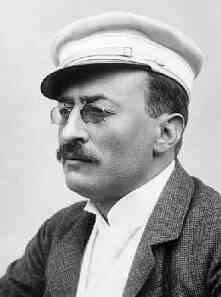 (45) Sven Hedin (1865-1952) est un célèbre géographe et explorateur. Il est l’auteur de récits de voyage (Le Tibet dévoilé ; Bagdad – Babylon – Ninive ; Persien und Mesopotamien ; Von Peking nach Moskau ; Rätsel der Gobi ; Der wandernde See ; etc), d’ouvrages autobiographiques (Mein Leben als Entdecker ; Eroberungszüge in Tibet ; Ohne Auftrag in Berlin) et d’ouvrages politiques (Ein Volk in Waffen ; Deutschland und der Weltfriede ; Amerika im Kampf der Kontinente). Sympathisant du IIIe Reich (bien qu’il eût des ascendants juifs), il interviendra à plusieurs reprises en faveur de prisonniers juifs et norvégiens et sauvera la vie de plusieurs d’entre eux. En 1946, il obtiendra également la grâce du général allemand Nikolaus von Falkenhorst qui avait été condamné à mort par un tribunal britannique.
(45) Sven Hedin (1865-1952) est un célèbre géographe et explorateur. Il est l’auteur de récits de voyage (Le Tibet dévoilé ; Bagdad – Babylon – Ninive ; Persien und Mesopotamien ; Von Peking nach Moskau ; Rätsel der Gobi ; Der wandernde See ; etc), d’ouvrages autobiographiques (Mein Leben als Entdecker ; Eroberungszüge in Tibet ; Ohne Auftrag in Berlin) et d’ouvrages politiques (Ein Volk in Waffen ; Deutschland und der Weltfriede ; Amerika im Kampf der Kontinente). Sympathisant du IIIe Reich (bien qu’il eût des ascendants juifs), il interviendra à plusieurs reprises en faveur de prisonniers juifs et norvégiens et sauvera la vie de plusieurs d’entre eux. En 1946, il obtiendra également la grâce du général allemand Nikolaus von Falkenhorst qui avait été condamné à mort par un tribunal britannique.
(46) Avocat de profession, Mile Budak (1889-1945) est l’auteur de récits autobiographiques (Ratno robije ; Na vulkanima) et de romans consacrés à la vie des paysans croates (Ognjište ; Direktor Križanić ; Na Veliki Petak ; San o sreći ; Kresojića soj). Membre de l’Oustacha, ministre et ambassadeur de l’État Indépendant Croate, il sera condamné à mort et exécuté par les partisans de Tito. Voir C. Dolbeau, « Mile Budak, itinéraire d’un réprouvé » sur http://euro-synergies.hautetfort.com/archive/2013/11/08/temp-bd4084d8309dec37480915bf93bde6df-5216585.html
(47) Slavko Kolar (1891-1963) est l’auteur de scénarios, de livres pour enfants, de pièces de théâtre (Politička večera ; Sedmorica u podrumu), de textes autobiographiques et de nouvelles ou romans (Povratak ; Svoga tela gospodar ; Čizme ; Jesu li kravama potrebni repovi ; etc). Il sera président de l’Association des Écrivains Croates.
(48) Mihovil Kombol (1883-1955) est l’auteur d’études et d’essais consacrés à l’histoire de la littérature (Dinko Ranjina i talijanski petrarkisti ; Povijest hrvatske književnosti do narodnog preporoda ; Zadar kao književno središte).
(49) Milan Begović (1876-1948) est l’auteur de quelques romans et nouvelles mais il est surtout connu pour ses pièces de théâtre (Pustolov pred vratima ; Amerikanska jahta u splitskoj luci ; Gospođa Walewska ; Bez trećega) et son anthologie de la prose moderne (Hrvatska proza XX. stoljeća). Il sera exclu en 1945 de l’Association des Écrivains Croates.
(50) Dobriša Cesarić (1902-1980) est un traducteur, un compositeur de chansons (Knjiga prepjeva) et l’auteur d’une dizaine de recueils de poésie (Lirika ; Pjesme ; Izabrani stihovi ; Slap, izabrane pjesme ; etc). Après guerre, il sera président de l’Association des Écrivains Croates et membre de l’Académie Yougoslave.
(51) Avocat de profession, Zvonko Milković (1888-1978) est l’auteur d’une anthologie de la poésie croate (Hrvatska mlada lirika) et de plusieurs recueils de poésie (Pobožni časovi ; Pjesme ; Krenimo u rano jutro).
(52) Ivan Goran Kovačić (1913-1943) est l’auteur de poèmes (Lirika 1932 ; Dani gnjeva). Rallié aux partisans communistes durant l’hiver 1942, il sera tué par des Tchetniks serbes. Plusieurs de ses œuvres seront publiées après la guerre (Hrvatske pjesme partizanke ; Ognji i rože ; etc).
(53) À savoir Emilio Carrere, Alfredo Marquerie, Tomás Borrás, José Montero Alonso, etc.
(54) Emiel Buysse (1910-1987) est un journaliste nationaliste, auteur de nombreux récits et essais (Vlamingen ; Miele keert terug ; Sneeuw en houtrook ; etc).
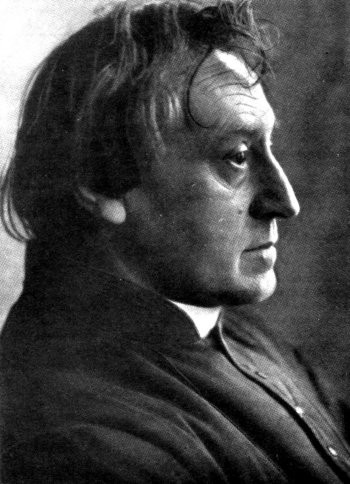 (55) Cyriel Verschaeve (1874-1949) est un prêtre catholique et un militant nationaliste. Poète, philosophe, essayiste et dramaturge, il est l’auteur de nombreux ouvrages (Judas ; Maria-Magdalena ; Jacob van Artevelde ; Passieverhaal ; De Kruisboom ; Het Uur van Vlaanderen ; Eeuwige gestalten ; etc). Chef du Conseil culturel flamand en 1940, il se réfugie en Autriche à la fin de la guerre et sera déchu de la nationalité belge.
(55) Cyriel Verschaeve (1874-1949) est un prêtre catholique et un militant nationaliste. Poète, philosophe, essayiste et dramaturge, il est l’auteur de nombreux ouvrages (Judas ; Maria-Magdalena ; Jacob van Artevelde ; Passieverhaal ; De Kruisboom ; Het Uur van Vlaanderen ; Eeuwige gestalten ; etc). Chef du Conseil culturel flamand en 1940, il se réfugie en Autriche à la fin de la guerre et sera déchu de la nationalité belge.
(56) Gerard Walschap (1898-1989) est l’auteur de pièces de théâtre, de nouvelles (Volk), de romans (Adelaide ; Houtekiet ; Een mens van goede wil ; Sybille ; Oproer in Kongo) et de contes pour enfants (De doot in het dorp ; De kaartridder van Herpeneert). Il sera anobli (titre de baron) en 1975.
(57) Wies Moens (1898-1982) est un historien de la littérature, un poète et un pamphlétaire. Il est l’auteur de divers recueils de poésie (Gedichten ; De tocht ; Golfslag ; De spitsboog ; etc) et de quelques récits en prose (De dooden leven ; Dertig dagen oorlog). Proche du mouvement solidariste (Verdinaso), il est condamné à mort par contumace, en 1945, et se réfugie aux Pays-Bas où il finira ses jours.
(58) Antoon Thiry (1888-1954) est l’auteur de nombreux romans (Pauwke’s vagevuur ; Onder Sinte Gommarus’ wake ; De vader ; Mijnheer van Geertrui zijn kerstnacht ; De hoorn schalt ; Gasten in ‘t huis ten have ; De zevenslager ; etc). Sympathisant du mouvement DeVlag, il sera condamné à trois ans de prison à la fin de la guerre.
(59) Voir Hedwig Speliers, « Le miracle de Weimar », in Textyles hors série N° 2 (1997), p. 167.
(60) Ancien aide-maçon, Pierre Hubermont (1903-1989) est un écrivain prolétarien qui fut membre du Parti Ouvrier Belge et prit part à la conférence des écrivains révolutionnaires (Kharkov, 1930). Il est l’auteur de plusieurs romans sociaux dont Treize hommes dans la mine, La Terre assassinée, Les Cordonniers, Marie des Pauvres, L’Arbre creux, et d’un témoignage sur les exhumations de Katyn (J’étais à Katyn, témoignage oculaire). Condamné à seize ans de détention pour collaboration, il sera remis en liberté en 1950.
(61) Ancien mineur de fond et militant trotskyste, Constant Malva (1903-1969) est un écrivain prolétarien. Il est l’auteur de divers contes et récits sociaux (Un propr’ à rien ; Borins ; Un ouvrier qui s’ennuie ; Mon homme de coupe ; Un mineur vous parle ; Le Jambot). Il sera condamné à une peine d’emprisonnement à la Libération.
(62) D’origine flamande mais d’expression française, Marie Gevers (1883-1975) est l’auteur de poèmes (Missembourg ; Les arbres et le vent), de romans (La Comtesse des digues ; Madame Orpha ou la sérénade de mai ; Guldentop ; La ligne de vie ; Paix sur les champs ; Château de l’Ouest ; etc), d’ouvrages sur la nature (L’herbier légendaire) et de contes et récits pour les enfants (Les oiseaux prisonniers ; Le Noël du petit Joseph) ; elle a également traduit et adapté en français de nombreux récits néerlandais. En 1938, elle fut la première femme élue à l’Académie Royale de langue et de littérature françaises de Belgique. Ses livres ont été traduits dans une dizaine de langues.
(63) Journaliste et ancien parlementaire rexiste, Pierre Daye (1892-1960) est l’auteur de très nombreux essais (La politique coloniale belge de Léopold II ; Le Maroc s’éveille ; La Belgique et la mer ; Beaux jours du Pacifique ; Stanley ; Guerre et Révolution ; L’Europe aux Européens ; Portrait de Léon Degrelle ; Trente-deux mois chez les députés ; et). Condamné à mort par contumace et déchu de la nationalité belge (1947), il vit après guerre en exil en Argentine où il finit ses jours.
(64) Guillaume Samsoen de Gérard est un traducteur d’origine liégeoise, membre du parti rexiste. Il est l’auteur d’essais (Missions secrètes en Ukraine ; Le comte de Tilly).
(65) Joseph Mignolet (1893-1973) est un écrivain patoisant. Il est l’auteur de recueils de poésie (Fleûrs di brouwîres ; Lès lâmes), de pièces de théâtre (Li vôye qui monte) et de romans (Vès l’ loumûre ; Li blanke dame ; etc).
(66) Sulev Jacques Kaja ou de son vrai nom Jacques Baruch (1919-2002) est un journaliste, spécialiste des peuples finno-ougriens. Diplômé d’esperanto et très attaché à la défense de l’Estonie (au point de prendre un pseudonyme estonien), il signe durant la guerre l’essai Un an de bolchevisme dans les pays Baltes, ce qui lui vaudra cinq mois de prison à la Libération. Après la guerre, il occupe divers emplois (horticulteur, ébéniste, antiquaire) et collabore à l’hebdomadaire Tintin ; il aurait peut-être inspiré à Hergé le personnage du pilote Szut qui apparaît dans Coke en stock… Il est également l’auteur de Légendes d’Estonie.
(67) Örnulf Tigerstedt (1900-1962) est un écrivain finnois de langue suédoise. Il est l’auteur de poésie (Vid gränsen ; Block och öde ; De heliga vägarna ; etc), d’essais (Skott i överkant ; Utan örnar) et de textes politiques (Statspolisen slår till ; Hemliga stämplingar).
(68) Tito Colliander (1904-1989) est un écrivain finnois de langue suédoise et de religion orthodoxe. Il est l’auteur de poèmes, de biographies, d’essais religieux, de pièces de théâtre et de romans (En vandrare ; Korståget ; Förbarma dig ; Taina ; Ljuset ; Grottan ; Vis om är kvar ; etc).
(69) R. Brasillach, A. Bonnard, M. Jouhandeau et R. Fernandez sont excusés…
(70) Liviu Rebreanu (1885-1944) est un journaliste, un romancier et un dramaturge. Il est l’auteur de nouvelles (Golanii ; Mărturisire ; Cântecul lebedei ; etc), de romans (Ion ; Gorila ; Jar ; etc) et de pièces de théâtre (Cadrilul ; Plicul ; Apostolii). Il a été directeur du Théâtre National et présidera (1940-44) l’Association des Écrivains Roumains.
(71) Henri Bruning (1900-1983) est un poète et un essayiste. Il est l’auteur des recueils Het verbond et Fuga, ainsi que de nombreux essais (Subjectieve normen ; Verworpen christendom ; Voorspel ; Vluchtige vertoogen ; Heilig verbond ; etc). Membre du mouvement solidariste (Verdinaso) puis du NSB, il sera condamné, à la fin de la guerre, à deux ans de détention et dix ans d’interdiction de publier.
(72) Svend Borberg (1888-1947) est l’auteur de poèmes (Verdensspejlet) et de pièces de théâtre (Ingen ; Cirkus juris ; Synder og Helgen). Il est le père de Claus von Bülow.
(73) Jozef Cíger-Hronský (1896-1960) est l’auteur de nouvelles (U nás ; Domov ; Proroctvo doktora Stankovského ; Na križných cestách ; etc), de comédies (Firma Moor ; Návrat) et de livres pour enfants (Janko Hrášok ; Sokoliar Tomáš ; Tri múdre kozliatka ; etc). À la fin de la guerre, il émigre en Italie puis en Argentine où il fonde l’Association des Écrivains Slovaques en Exil. Il présidera également le Conseil National Slovaque.
(74) Antonio Baldini (1889-1962) est l’auteur de récits (Nostro Purgatorio ; Amici allo spiedo), d’essais (Ludovico della tranquillità ; Fine Ottocento. Carducci, Pascoli, D’Annunzio e minori) et de carnets de voyage (La vecchia del Bar Bullier ; Italia del Bonincontro ; Melafumo ; Doppio Melafumo). Il est entré à l’Académie en 1939.
(75) Emilio Cecchi (1884-1966) est l’auteur de récits (Pesci rossi ; Messico ; Et in Arcadia ego ; Corse al trotto vecchie e nuove ; etc), d’ouvrages de critique d’art (Pittura italiana dell’Ottocento ; La scultura fiorentina del Quattrocento) et de critique littéraire (La poesia di Giovanni Pascoli ; Storia della letteratura inglese del secolo XIX ; I grandi romantici inglesi ; etc). Il a également été scénariste et producteur de cinéma. Il est entré à l’Académie en 1940.
(76) Giulio Cogni (1908-1983) est l’auteur d’essais sur la musique (Che cosa è la musica ; Le forze segrete della musica ; Wagner e Beethoven) et la philosophie (Saggio sull’Amore come nuovo principio d’immortalità ; Lo Spirito Assoluto ; Il razzismo ; I valori della stirpe italiana ; etc).
(77) Autodidacte, Enrico Falqui (1901-1974) est l’auteur de très nombreux ouvrages d’histoire de la littérature et d’anthologies (Scrittori nuovi ; Antologia della prosa scientifica italiana del Seicento ; La letteratura del ventennio nero ; Prosatori e narratori del Novecento italiano ; etc).
(78) Elio Vittorini (1908-1966) est l’auteur d’essais (La tragica vicenda di Carlo III ; Americana ; Diario in pubblico) et de romans (Piccola borghesia ; Nei morlacchi – Viaggio in Sardegna ; Conversazione in Sicilia ; Il garofano rosso ; Le donne di Messina ; etc). Rallié à la résistance antifasciste, il dirigera après guerre le quotidien communiste L’Unità.
(79) Giaime Pintor (1919-1943) est un journaliste et un traducteur qui a collaboré à l’anthologie Teatro tedesco. Recruté par les services secrets anglais et envoyé en mission à Rome, il saute sur une mine le 1er décembre 1943. La plupart de ses essais et traductions paraîtront après sa mort (Poesie di Rainer Maria Rilke ; Saggio su la Rivoluzione di Carlo Pisacane ; Vathek di William Beckford ; Il sangue d’Europa ; etc).
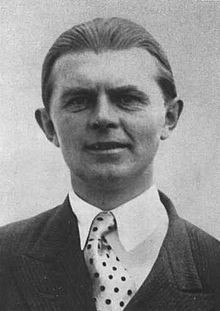 (80) Edwin Erich Dwinger (1898-1981) est l’auteur de nombreux essais et romans (Der grosse Grab ; Die Armee hinter Stacheldraht ; Die zwölf Räuber ; Die letzen Reiter ; Zwischen Weiss und Rot ; Ein Erbhof im Allgäu ; Der Tod in Polen ; Dichter unter den Waffen ; etc). Hostile à la politique anti-slave du IIIe Reich, il soutient le général Vlassov et finit par être assigné à résidence et placé sous la surveillance du Sicherheitsdienst.
(80) Edwin Erich Dwinger (1898-1981) est l’auteur de nombreux essais et romans (Der grosse Grab ; Die Armee hinter Stacheldraht ; Die zwölf Räuber ; Die letzen Reiter ; Zwischen Weiss und Rot ; Ein Erbhof im Allgäu ; Der Tod in Polen ; Dichter unter den Waffen ; etc). Hostile à la politique anti-slave du IIIe Reich, il soutient le général Vlassov et finit par être assigné à résidence et placé sous la surveillance du Sicherheitsdienst.
(81) Wilhelm Ehmer (1896-1976) est un journaliste, auteur de plusieurs récits à succès (Peter reist um die Welt ; Um den Gipfel der Welt ; Das Ringen um den Himalaya ; So werden wir gelebt ; etc). Son ouvrage consacré à l ‘alpiniste britannique Mallory et à la conquête de l’Everest avait été particulièrement salué par la critique.
(82) Wilhelm Schäfer (1868-1952) est un écrivain völkisch extrêmement prolixe. Il est l’auteur de dizaines de pièces de théâtre, nouvelles et romans (Der Hauptmann von Köpenick ; Die Zehn Gebote ; Rheinsagen ; Lebenstag eines Menschenfreundes ; Winckelmanns Ende ; Die rote Hanne ; Deutsche Reden ; etc).
(83) Georg von der Vring (1889-1968) est l’auteur de poèmes (Südergast ; Oktoberrose ; Der Schwan ; etc), de romans (Soldat Suhren ; Die Spanische Hochzeit ; Der Zeuge ; Argonnerwald ; Der Schritt über die Schwelle ; Frühwind ; etc) ainsi que de traductions de Verlaine, Maupassant ou Francis Jammes. G. von der Vring a enseigné le dessin et il est également peintre. Ancien combattant de la Première Guerre mondiale d’où il était revenu résolument pacifiste, il était plutôt mal vu du régime nazi.
(84) Hermann Burte (1879-1960) est l’auteur de poésie (Alemannische Gedichte ; Ursula ; Das Heit im Geiste ; etc), d’une tragédie (Katte) et de romans (Wiltfeber, der ewige Deutsche). H. Burte était également un peintre et un spécialiste du dialecte alémanique.
(85) Irja Salla ou de son vrai nom Taju Birgitta Tiara Sallinen (1912-1966) est l’auteur de romans (Kaksi tietä ; Liisa-Beatan tarina ; Unissakävijä).
(86) À l’automne 1941, il y eut aussi un voyage en Allemagne de musiciens français et un autre de peintres et sculpteurs. Parmi les musiciens invités aux « fêtes Mozart » figuraient les compositeurs Florent Schmitt, Max d’Ollone, Alfred Bachelet, Marcel Delannoy, Marcel Labey, Gustave Samazeuilh, Arthur Honneger, mais aussi Jacques Rouché, Robert Bernard et Lucien Rebatet. Chez les peintres et sculpteurs figuraient Paul Belmondo, Charles Despiau, Henri Bouchard, Louis Lejeune, André Derain, Roland Oudot, Raymond Legueult, André Dunoyer de Segonzac, Maurice de Vlaminck, Kees van Dongen, Othon Friesz et Paul Landowski…
(87) Célèbre réplique tirée de la pièce Schlageter de Hanns Johst (v. note 21) et souvent associée aux dirigeants nazis.
(88) Juriste de formation, Hans-Friedrich Blunck (1888-1961) est l’auteur d’essais (Die nordische Welt) et de romans (Totentanz ; Berend Fock ; Die Weibsmühle ; Werdendes Volk ; Die Jägerin ; etc). Il s’intéresse particulièrement à l’histoire des peuples nordiques, au parler bas allemand, au panthéon germanique et aux sagas scandinaves. Il fut le premier président de la Chambre des Écrivains et n’était pas membre du NSDAP.
(89) Karl Heinrich Waggerl (1897-1973) est un écrivain autrichien. Il est l’auteur de nouvelles et récits (Das Wiesenbuch ; Feierabend ; etc) ainsi que de romans (Brot ; Schweres Blut ; Mütter ; etc). Il a également constitué une importante collection de photographies.
(90) Eugen Roth (1895-1976) est l’auteur de poésie et de romans (Ein Mensch ; Die Frau in der Weltgeschichte ; Der Wunderdoktor ; Der Fischkasten ; Der letzte Mensch ; etc). Ses ouvrages sont parmi les plus lus du monde germanique.
(91) cité par F. Bergeron, in Guide des citations de l’homme de droite, Paris, Editions du Trident, 1989, p. 60.
(92) Derrière le pangermanisme officiel des milieux dirigeants du IIIe Reich existaient de réelles tendances européennes dont témoigne par exemple le manifeste pour une « communauté européenne » que signe Ribbentrop, le 21 mars 1943. On sait que des dignitaires comme Walther Funk et Arthur Seyss-Inquart étaient favorables à un projet européen, de même que certains hauts fonctionnaires (Hans Frohwein, Cécil von Renthe-Fink, Walter Hallstein, Heinrich Hunke, Alexander Dolezalek).
Bibliographie
L. Richard, Le nazisme et la culture, Paris, Maspero, 1978.
B. Delcord, « À propos de quelques “chapelles“ politico-littéraires en Belgique (1919-1940) », in Cahiers d’Histoire de la IIe Guerre mondiale, Bruxelles, Centre de Recherches et d’Études historiques de la IIe Guerre mondiale, N° 10, octobre 1986.
F. R. Hausmann, « Dichte, Dichter, tage nicht ! ». Die Europäische Schriftsteller-Vereinigung in Weimar 1941-1948, Francfort, Vittorio Klostermann, 2004.
F. R. Hausmann, « Kollaborierende Intellektuelle in Weimar – Die ‘Europäische Schriftsteller-Vereinigung’ alq ‘Anti-P.E.N.-Club’ », in Europa in Weimar. Visionen eines Kontinents, Göttingen, Wallstein, 2008.
F. Dufay, Le voyage d’automne, Paris, Perrin, 2008.
H. Speliers, « Le miracle de Weimar », in Textyles, Hors série N° 2 (1997).
H. Speliers, « Het wonder van Weimar. Een collaboratie verhaal », in Gierik & Nieuw Vlaams Tijdschrift, N° 80 (2003).
O. Lubrich, « Comparative Literature – in, from and beyond Germany », in Comparative Critical Studies 3.1-2 (2006).
M. C. Angelini, « 1942. Note in margine al Convegno degli scrittori europei a Weimar » in Studi (e Testi) italiani, N° 5 (2000).
M. Serri, Il breve viaggio, Venise, Marsilio, 2002.
J. Hillesheim, E. Michael, Lexikon nationalsozialistischer Dichter, Würzburg, Königshausen & Neumann, 1993.
00:04 Publié dans Histoire, Littérature | Lien permanent | Commentaires (0) | Tags : lettres, littérature, littérature européenne, lettres européennes, deuxième guerre mondiale, seconde guerre mondiale, histoire |  |
|  del.icio.us |
del.icio.us |  |
|  Digg |
Digg | ![]() Facebook
Facebook
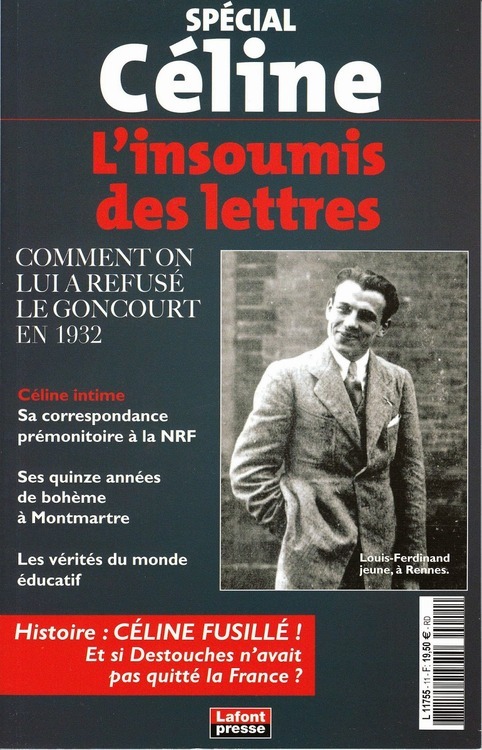
Le trimestriel Spécial Céline fait paraître son 11è numéro. Un nouveau format et une nouvelle maquette, des plus agréable, viennent agrémenter la lecture d’un sommaire plus « épuré » qu’à l’accoutumé. On regrettera toutefois pour ce numéro l’absence de toute actualité célinienne…
Sommaire :
Étude
« Céline au bachot » par Éric Mazet
Correspondance
« Les Lettres à la NRF, 1931-1961 : le médecin épistolier et son éditeur » par Julie Delbouille
Rencontre
« Céline et le Goncourt : Chronologie des faits et des idées » par Éric Mazet
Étude
« De Destouches à Céline, Montmartre 1929-1944 » par Jean Maurice Bizière
Fiction
« Fallait-il fusiller Céline » (1ère partie) par Jacques Milliez
Un numéro disponible en kiosque ou sur www.lafontpresse.fr, 80 pages, 19,50 €.
00:05 Publié dans Littérature, Revue | Lien permanent | Commentaires (0) | Tags : littérature, lettres, lettres françaises, littérature française, céline, revue |  |
|  del.icio.us |
del.icio.us |  |
|  Digg |
Digg | ![]() Facebook
Facebook
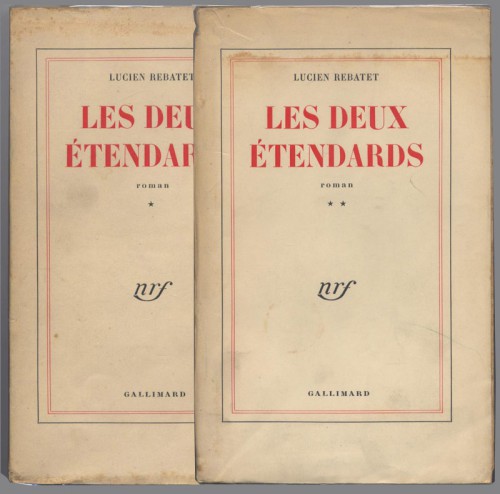
Très attendu, le premier cahier des « Etudes » consacré à l'auteur des Deux Etendards est enfin disponible. Ses 216 pages élégamment reliées, contiennent un mélange de textes inédits de l'auteur et des analyses de son œuvre et de son écriture. Du côté des inédits, les amateurs pourront découvrir la préface de « Margot l'enragée », le dernier roman inachevé du Rebatet, ainsi que des extraits de son journal et une lettre extraordinaire imaginant les personnages des « Deux Etendards » vingt ans après... Ensuite, trois études universitaires sont proposées. La première, de Louis Baladier, s'intitule « Les Deux Etendards ou un trop grand rêve », la seconde, de Nicolas Degroote, se penche sur la « conversion » dans « les Deux Etendards, et enfin Pascal Ifri offre un parallèle entre « L'Etude sur la composition des Deux Etendards » et le « Journal des faux-monnayeurs » de Gide.
Un premier numéro qui représente un apport considérable à l'étude trop négligée d'un auteur majeur mais maudit.
« Etudes Rebatiennes I », 216 pages, 20 euros (+ 3 euros de frais de port), chèques à l'ordre des « Etudes Rebatiennes », 10 rue Stanislas, 75006 Paris
Site cliquez ici
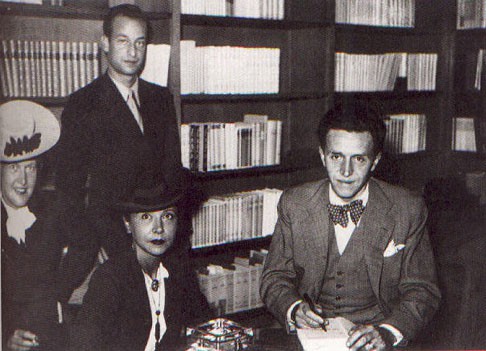
00:05 Publié dans Littérature, Revue | Lien permanent | Commentaires (0) | Tags : lucien rebatet, revuie, littérature, lettres, lettres françaises, littérature française |  |
|  del.icio.us |
del.icio.us |  |
|  Digg |
Digg | ![]() Facebook
Facebook
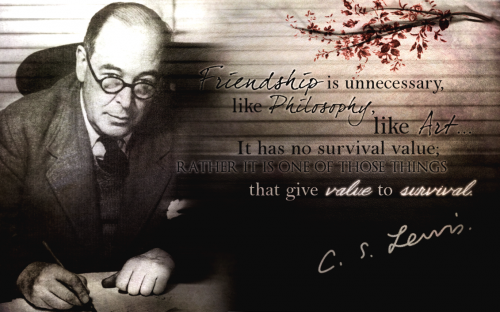
Cinquant'anni fa moriva C. S. Lewis, il creatore di miti che oggi sanno ancora incantare
Annalisa Terranova
Ex: http://www.secoloditalia.it
Clive Staples Lewis, l’inventore del ciclo di Narnia, il fine medievista, il divulgatore della fede cristiana, l’amico cui Tolkien leggeva le sue saghe, l’ideatore della science fiction “catartica” e metafisica, morì cinquant’anni fa a soli 65 anni (era il 22 novembre del 1963). Autore prolifico e di enorme successo, si fece “strumento” del genere fantastico e con i racconti simbolici dal paese immaginario di Narnia (i sette volumi di questa fiaba per bambini e adulti uscirono tra il 1950 e il 1956) divenne uno degli autori più apprezzati dentro e fuori l’Inghilterra. È vivo nella sua opera l’insegnamento di George MacDonald (tra i primi teorizzatori dei canoni della letteratura fantastica): “Noi roviniamo per avidità intellettuale infinite cose che già esistevano prima”. Non bisogna dunque farsi tentare dagli artifici ma tornare alla semplice visione che è propria dell’infanzia, farsi piccoli come gli gnomi e recuperare lo stupore della visione che si fa conoscenza. E la semplicità era anche la cifra stilistica adottata da Lewis nei suoi scritti (questo uno dei suoi consigli: “Invece di dirci che una cosa era terrificante, descrivila in modo da terrorizzarci. Non dire che era meravigliosa: fa’ sì che noi diciamo meraviglioso quando ne leggiamo la descrizione…”).
Era convinto che la forza del mito può risvegliare nell’uomo il desiderio di Dio. Per questo un recente studio dedicato a Lewis lo definisce “maestro dello spirito”. Scrive l’autrice Anna Maria Giorgi: “L’eroismo della quotidianità, ecco quello che ci propone C.S.Lewis con le sue opere e con il suo stesso stile di vita, sulla linea dei santi che sono diventati grandi facendosi piccoli come bambini. Generazioni di lettori si sono convertite leggendo i suoi libri: tra questi, per citarne uno solo, lo scienziato americano Francis Collins, scopritore del genoma umano,il quale si definiva un ateo di ferri finché non si imbatté in un libricino di Lewis, Mere Christianity“. Nella conversione di Lewis, invece, furono cruciali le conversazioni con l’amico Tolkien, con il quale diede vita ad Oxford al club letterario degli Inklings, fucina di idee per le pagine più note e amate della letteratura fantasy.
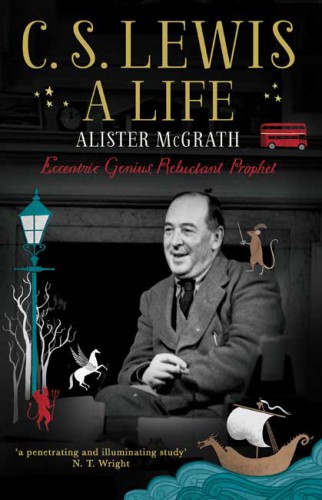 Paolo Gulisano ha scritto che il simbolismo di Lewis non è sentimentale ma “sacramentale”: “Le sue immagini funzionano spesso come simboli, che hanno la capacità di mostrare la verità e di farle raggiungere la coscienza del lettore e destare la sua meraviglia”. Non meno importante dell’altrove immaginato con Narnia è il viaggio dello scienziato Ransom nella trilogia fanta-teologica che comprende i romanzi Lontano dal pianeta silenzioso, Perelandra e Quell’orribile forza: “Durante il suo involontario viaggio interplanetario Ransom – scrive ancora Anna Maria Giorgi – sa comunque aprire gli occhi a scoprire una bellezza non solo fisica in quella che è la grande danza dell’universo, comprendendo che ‘spazio’ è una parola fredda e inadeguata per definire ‘il sommo oceano di splendore nel quale navigava’ “. Nel personaggio di Ransom, tra l’altro, rivivono alcune caratteristiche dell’amico Tolkien. Lewis non fu solo narratore di fiabe e inventore di miti ma anche un convinto propagandista. Il suo obiettivo polemico, sempre “aggredito” con senso dello humour e leggerezza, senza mai contaminarsi con il fanatismo, era la mentalità scientista e relativista, finché non scelse convintamente di far prevalere in lui l’uomo immaginativo, l’unico in grado di far nascere Narnia: “In me l’uomo immaginativo è più vecchio e opera con più continuità, e in questo senso è più basilare sia rispetto allo scrittore religioso, sia al critico…”.
Paolo Gulisano ha scritto che il simbolismo di Lewis non è sentimentale ma “sacramentale”: “Le sue immagini funzionano spesso come simboli, che hanno la capacità di mostrare la verità e di farle raggiungere la coscienza del lettore e destare la sua meraviglia”. Non meno importante dell’altrove immaginato con Narnia è il viaggio dello scienziato Ransom nella trilogia fanta-teologica che comprende i romanzi Lontano dal pianeta silenzioso, Perelandra e Quell’orribile forza: “Durante il suo involontario viaggio interplanetario Ransom – scrive ancora Anna Maria Giorgi – sa comunque aprire gli occhi a scoprire una bellezza non solo fisica in quella che è la grande danza dell’universo, comprendendo che ‘spazio’ è una parola fredda e inadeguata per definire ‘il sommo oceano di splendore nel quale navigava’ “. Nel personaggio di Ransom, tra l’altro, rivivono alcune caratteristiche dell’amico Tolkien. Lewis non fu solo narratore di fiabe e inventore di miti ma anche un convinto propagandista. Il suo obiettivo polemico, sempre “aggredito” con senso dello humour e leggerezza, senza mai contaminarsi con il fanatismo, era la mentalità scientista e relativista, finché non scelse convintamente di far prevalere in lui l’uomo immaginativo, l’unico in grado di far nascere Narnia: “In me l’uomo immaginativo è più vecchio e opera con più continuità, e in questo senso è più basilare sia rispetto allo scrittore religioso, sia al critico…”.
Clive Staples Lewis era nato a Belfast nel 1898. Fece il suo ingresso all’università di Oxford nel 1916 ma i suoi studi furono interrotti dalla Prima guerra mondiale, alla quale partecipò rimanendo ferito. Nel 1924 comincia sempre a Oxford l’insegnamento di Lingua e letteratura inglese. Nel 1929 abbraccia la fede cristiana. Quattro anni dopo fonda il circolo degli Inklings di cui, oltre a Lewis e Tolkien, fece parte anche lo scrittore Charles Williams. Nel 1942 pubblica uno dei suoi libri più fortunati, The Screwtape Letters, che racconta in forma epistolare il fallito tentativo del diavolo Berlicche di istruire il nipote Malacoda nell’arte della tentazione. Nel 1950 comincia la pubblicazione delle Cronache di Narnia e successivamente sposa la scrittrice Joy Davidman Gresham, che morirà precocemente lasciando Lewis in preda allo sconforto e al dsiorientamento come lo stesso Lewis racconterà nell’autobiografia del 1955, Sorpreso dalla gioia (Surprised by Joy).
00:05 Publié dans Littérature | Lien permanent | Commentaires (0) | Tags : c. s. lewis, littérature, lettres, lettres anglaises, littérature anglaise |  |
|  del.icio.us |
del.icio.us |  |
|  Digg |
Digg | ![]() Facebook
Facebook
Ex: http://dernieregerbe.hautetfort.com
Mourir détesté est aujourd'hui un luxe rare. Gérard de Villiers ne l'aura pas eu : alors qu’il y a vingt ans sa mort n’aurait sans doute suscité que quelques échos secs et grinçants, voilà qu’un concert d’éloges se déclenche : les médias saluent respectueusement la disparition de « l'homme le mieux renseigné de la planète ». C’est bien à tort qu’on a méprisé ses livres pendant si longtemps : « Il faisait un boulot incroyable », se souvient Dorothée Olliéric, grand-reporteur à France 2. Libération va plus loin, n’hésitant pas à placer le défunt dans la galerie mythique des géants du reportage : « il travaillait comme les grands reporteurs d’avant guerre, du type Albert Londres, qui allaient sur place et revenaient avec de vraies et longues enquêtes ». C’est pourquoi ses descriptions très précises faisaient de ses livres de véritables guides touristiques et politiques. D’ailleurs Hubert Védrine, l’un de ses inconditionnels, ne se rend jamais dans un pays sans lire préalablement le S.A.S. correspondant. Tout le monde lisait Gérard de Villiers, même (surtout) ceux qui le faisaient en cachette. Très introduit dans le monde du renseignement, ayant des informateurs exclusifs partout dans le monde, celui qu’on prenait depuis toujours pour un vulgaire propagandiste de la C.I.A. était en fait un géopoliticien de haut vol, dont les livres, incomparables manuels stratégiques, remplacent avantageusement les traités les mieux documentés. On se demande pourquoi on ne lui a pas demandé d’aller faire des cours à l’École de guerre ! N’a-t-il pas prophétisé l’assassinat de Sadate (dans Le Complot du Caire), l’attentat contre les États-Unis en Libye (dans Les Fous de Benghazi), la tentative de coup d’État contre Bachar el-Assad (dans Le Chemin de Damas), et tant d’autres évènements encore ? n’a-t-il pas expliqué mieux que tout le monde l’attentat contre Rafic Hariri ou l’attentat contre le Boeing de la Panam à Lockerby ? Mais ce prodigieux analyste du monde contemporain était aussi un remarquable entrepreneur qui s’est imposé dans le dur milieu de l’édition, et bien sûr un auteur de talent : un « authentique professionnel » de la prose haletante, un travailleur acharné « qui n’a jamais connu la retraite », un « très bon romancier populaire », un auteur de récits « bien foutus », « dont le génie consistait à coller au plus près à la réalité » et qui avait la suprême élégance de ne pas poser à l’écrivain prétentieux : oui, « cet homme s'assumait », il n’avait honte ni de ses livres ni de ses idées, et cela le rend infiniment estimable. Du reste, cet ami intime de Claude Lanzmann était évidemment bardé des qualités humaines les plus appréciables : un « homme au courage physique à la limite de l'inconscience » (selon son ami le général Rondot), cultivé, généreux, fidèle, bon vivant, provocateur, pudique… Cet esthète aura réussi, excusez du peu, la miraculeuse et « si difficile martingale de tout écrivain : mettre de la vie dans son art et de l’art dans sa vie » (Nicolas Gauthier dans Boulevard Voltaire). En somme, lui qui a été couvert de boue pendant quarante ans, le voilà consacré, même à gauche, « trésor national à sa façon » selon la formule de Jean Guisnel dans Le Point .
 On se frotte les yeux. Quoi ? Est-ce bien de Gérard de Villiers, l’auteur des S.A.S./S.S., que l’on parle ? Trésor national, incarnation du génie français, ce faiseur, ce parvenu, cette incarnation du mauvais goût, cet industriel du roman de gare, qui était méprisé jusque par ceux qui se piquent de littérature populaire, et placé cent lieues en-dessous de San-Antonio à la merveilleuse créativité verbale ?!! Même Paul-Loup Sulitzer, par contraste, était crédité d’avoir inventé un nouveau genre, alors que Villiers ne faisait que du sous-Ian Fleming à la chaîne, mâtiné de pornographie. La forme : un défilé de clichés, aucune invention, des personnages stéréotypés, des intrigues répétitives, une vulgarité constante, des scènes de sexe toujours identiques (et obsessionnellement portées sur la sodomie). Le fond : goût compulsif pour la violence gratuite, complaisance pour la torture, beaufitude, racisme, antisémitisme, misogynie, poncifs les plus stupides sur l’indolence des Arabes, l’incapacité des nègres, la cruauté des jaunes, la lascivité et la servilité des femmes, etc. En 2005 encore, Thierry Ardisson ne l’invitait à Tout le monde en parle que pour l’enfoncer dans le marécage de ses idées nauséabondes, mission moralisatrice où l’accompagnait le débonnaire Jean-Pierre Foucault. Mais voilà qu’en 2013, pfuiiit, tout cela a disparu ! Place à l’hommage et l’admiration. Nous avions un génie et nous l’avons conspué. Que s’est-il passé ?
On se frotte les yeux. Quoi ? Est-ce bien de Gérard de Villiers, l’auteur des S.A.S./S.S., que l’on parle ? Trésor national, incarnation du génie français, ce faiseur, ce parvenu, cette incarnation du mauvais goût, cet industriel du roman de gare, qui était méprisé jusque par ceux qui se piquent de littérature populaire, et placé cent lieues en-dessous de San-Antonio à la merveilleuse créativité verbale ?!! Même Paul-Loup Sulitzer, par contraste, était crédité d’avoir inventé un nouveau genre, alors que Villiers ne faisait que du sous-Ian Fleming à la chaîne, mâtiné de pornographie. La forme : un défilé de clichés, aucune invention, des personnages stéréotypés, des intrigues répétitives, une vulgarité constante, des scènes de sexe toujours identiques (et obsessionnellement portées sur la sodomie). Le fond : goût compulsif pour la violence gratuite, complaisance pour la torture, beaufitude, racisme, antisémitisme, misogynie, poncifs les plus stupides sur l’indolence des Arabes, l’incapacité des nègres, la cruauté des jaunes, la lascivité et la servilité des femmes, etc. En 2005 encore, Thierry Ardisson ne l’invitait à Tout le monde en parle que pour l’enfoncer dans le marécage de ses idées nauséabondes, mission moralisatrice où l’accompagnait le débonnaire Jean-Pierre Foucault. Mais voilà qu’en 2013, pfuiiit, tout cela a disparu ! Place à l’hommage et l’admiration. Nous avions un génie et nous l’avons conspué. Que s’est-il passé ?
Le tournant a eu lieu en janvier de cette année : le New York Times a publié un long article de Robert F. Worth à la gloire de l’écrivant français. Ce panégyrique (d’où sont tirés les trois quarts des articles d’hommage qui viennent de paraître) a été intégralement traduit dans Courrier International le mois suivant, et il a suffi à retourner la classe médiatique. Intervious et portraits se sont succédé au fil de cette année, jusque dans Le Monde. Ce n’est pas que les yeux de nos faiseurs d’opinion se soient décillés, c’est plutôt que leur jobardise s’est une nouvelle fois révélée : quand l’Amérique donne le ton, il faut se mettre au diapason. Gérard de Villiers est célébré par le New York Times ? Alors on peut en faire autant ! Que dis-je : il faut en faire autant, sinon nous passerons encore pour de petits franchouillards englués dans leur ringardise congénitale, incapables de sentir ce qui est « in ».
Ce renversement de l’opinion dominante sur S.A.S. est donc moins un indice de droitisation de la société qu’un indice d'américanisation. Violence, crudité, démagogie, populisme, et par-dessus tout culte de l’efficacité et de la rentabilité : nous aussi nous sommes des Américains, nous aussi nous savons fabriquer et vendre des produits américains, nous aussi nous adorons ça, nous aussi nous nous assumons comme tels. Il fut un temps, pas si lointain, où la classe politique et médiatique avait un certain sens de la littérature et ne prisait, fût-ce par affectation, que des auteurs d'un certain niveau. Quand elle parlait d'un écrivain nommé « Villiers », ce ne pouvait donc être qu'Auguste de Villiers de L'Isle-Adam, styliste racé et pourfendeur cruel de la médiocrité bourgeoise. Aujourd'hui on n'a plus honte de remplir sa bouche et ses yeux de merdes populaires, et parmi tous ceux qui proclament le plaisir qu'ils ont eu à lire des S.A.S., bien peu ont sans doute ouvert Axël ou les Histoires insolites, sans parler du Prétendant ou de Tribulat Bonhomet. La plupart, je le parierais, ignorent jusqu’à l’existence de ces titres. La nouvelle classe dirigeante a baigné dans la sous-culture télévisuelle depuis sa jeunesse, et elle n’en a aucune honte. En termes d’image, il est de moins en moins payant de s’afficher comme un lettré devant le populo, alors pourquoi affecter une préférence pour ces intellos abscons et chichiteux qui nous prennent la tête, tandis qu’on prend son pied avec un bon vieux S.A.S. ? Reconnaître qu’on aime bien lire Gérard de Villiers, c’est à la fois jouer la carte de la transparence, en s’avouant franchement tel qu’on est, et se poser en monsieur-tout-le-monde, apte à comprendre les malheurs et les espoirs du peuple, puisqu’on en partage les goûts et les plaisirs : double bénéfice.
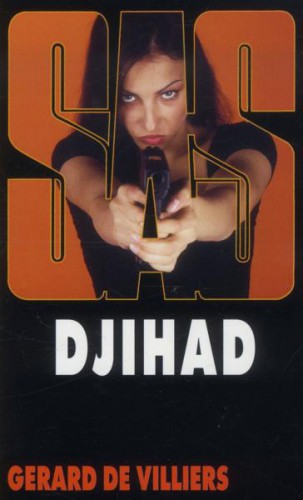 J’ai parcouru, dans la réacosphère facebookienne, quelques réactions à la mort de Gérard de Villiers, et j’ai été frappé par la fréquence des marques d’estime posthume. Untel, par exemple, se réjouit que la gauchiasse se sente désormais obligée de céder du terrain et de ménager ce sur quoi elle crache sans vergogne depuis 1945, alors que naguère encore elle conchiait tous ceux qui de près ou de loin ressemblaient à un réactionnaire : attitude purement réactive, qui consiste à choisir ses amis non pas pour leurs qualités propres, mais uniquement pour le fait qu’ils sont rejetés par nos ennemis, – comme si ceux-ci ne pouvaient pas se tromper. Le plus stupéfiant, c’est cette ancienne catin reconvertie dans l'islamophobie hystérique, qui profite de l’occasion pour battre ses propres records de bêtise et de bassesse, pourtant haut placés : « J'estime que tout écrivain doit être jaloux de celui qui a gagné autant d'argent avec sa plume ». Triomphe du veau d'or, prosternation devant le dieu Dollar ! Le gain pécuniaire n'est pas seulement le critère absolu de réussite sociale, il devient aussi le critère de la valeur littéraire et le but de tout écrivain qui se respecte. D’ailleurs, qu’est-ce que la littérature, sinon un moyen de distraire les masses ? « Villiers ne cherchait pas à rivaliser avec Hugo..., mais s'il était populaire, c'est qu'il devait bien écrire. À quoi sert la littérature [réservée à] quelques initiés ? À rien ! ». Remarquable conjonction entre le primat du fric et le primat de la plèbe. L’américanisation est complète : tout objet culturel a pour finalité d’être vendu au plus grand nombre, et le gain obtenu permet donc de hiérarchiser des œuvres d’art qui ne sont rien que des objets de consommation. Je soupçonne que si nous essayions d’expliquer à cette idiote, qui se croit de droite, que dire de la littérature qu’elle ne sert à rien, c’est lui adresser le plus bel éloge possible – puisque tout ce qui est utile est laid –, elle nous prendrait pour des fous, ô Théophile Gautier ! Cette droite-là n’est pas la mienne. J’estime pour ma part qu’il faut avoir l'esprit complètement perverti par le sectarisme le plus borné, pour se sentir solidaire, au nom d’un anti-gauchisme fanatique et aveugle, de ce brasseur de pognon, de cet avilisseur du livre, de ce corrupteur de l'esprit public qu’était Gérard de Villiers.
J’ai parcouru, dans la réacosphère facebookienne, quelques réactions à la mort de Gérard de Villiers, et j’ai été frappé par la fréquence des marques d’estime posthume. Untel, par exemple, se réjouit que la gauchiasse se sente désormais obligée de céder du terrain et de ménager ce sur quoi elle crache sans vergogne depuis 1945, alors que naguère encore elle conchiait tous ceux qui de près ou de loin ressemblaient à un réactionnaire : attitude purement réactive, qui consiste à choisir ses amis non pas pour leurs qualités propres, mais uniquement pour le fait qu’ils sont rejetés par nos ennemis, – comme si ceux-ci ne pouvaient pas se tromper. Le plus stupéfiant, c’est cette ancienne catin reconvertie dans l'islamophobie hystérique, qui profite de l’occasion pour battre ses propres records de bêtise et de bassesse, pourtant haut placés : « J'estime que tout écrivain doit être jaloux de celui qui a gagné autant d'argent avec sa plume ». Triomphe du veau d'or, prosternation devant le dieu Dollar ! Le gain pécuniaire n'est pas seulement le critère absolu de réussite sociale, il devient aussi le critère de la valeur littéraire et le but de tout écrivain qui se respecte. D’ailleurs, qu’est-ce que la littérature, sinon un moyen de distraire les masses ? « Villiers ne cherchait pas à rivaliser avec Hugo..., mais s'il était populaire, c'est qu'il devait bien écrire. À quoi sert la littérature [réservée à] quelques initiés ? À rien ! ». Remarquable conjonction entre le primat du fric et le primat de la plèbe. L’américanisation est complète : tout objet culturel a pour finalité d’être vendu au plus grand nombre, et le gain obtenu permet donc de hiérarchiser des œuvres d’art qui ne sont rien que des objets de consommation. Je soupçonne que si nous essayions d’expliquer à cette idiote, qui se croit de droite, que dire de la littérature qu’elle ne sert à rien, c’est lui adresser le plus bel éloge possible – puisque tout ce qui est utile est laid –, elle nous prendrait pour des fous, ô Théophile Gautier ! Cette droite-là n’est pas la mienne. J’estime pour ma part qu’il faut avoir l'esprit complètement perverti par le sectarisme le plus borné, pour se sentir solidaire, au nom d’un anti-gauchisme fanatique et aveugle, de ce brasseur de pognon, de cet avilisseur du livre, de ce corrupteur de l'esprit public qu’était Gérard de Villiers.
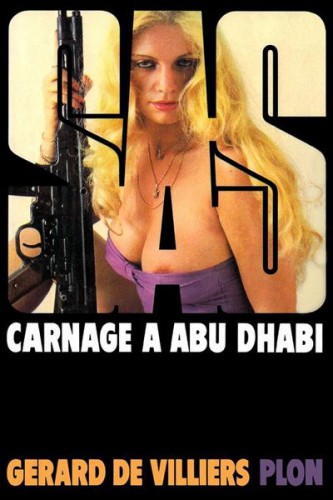 Celui-ci, finalement, peut au moins servir d’excellent marqueur idéologique, propre à distinguer deux droites, la droite du fric et de l’Amérique moderniste, la droite de la culture réactionnaire et de l’élite. Villiers n'a fait que de l'ordure tout au long de sa vie. Journaliste pipol dans les années 60, il a donné dans toutes les bassesses de la presse de caniveau : il est même à l’origine de la rumeur qui prétendait que Sheila était un homme, dégueulasserie dont il rigolait encore quarante ans plus tard. Il n’aura jamais quitté ce milieu ignoble, puisque jusqu’à la fin de sa vie il fréquentait assidument la « jet-set », qu’il recevait dans sa villa de Saint-Tropez et sur son yacht. On peut aussi penser, avec Cizia Zykë, que Gérard de Villiers a tué une certaine littérature populaire française en y important des méthodes… américaines, bien sûr [1]. Comme les MacDo standardisés ont tué les petits caboulots du coin de la rue. Même extermination de la diversité populaire française, brouillonne mais vivante, au profit d’un modèle mécanique et artificiel, froidement et « professionnellement » conçu pour dégager le maximum de bénéfices à court terme. Il est d’ailleurs étrange (ou au contraire très cohérent) que ces articles d’hommage ne soulèvent jamais la question des nègres d’écriture. Même si la version officielle est relayée par Robert F. Worth, on aura tout de même du mal à croire qu’un seul homme ait pu rédiger 200 romans en 49 ans, surtout avec les minutieux voyages, entretiens et investigations sur lesquels on nous dit qu’il s’appuyait. Depuis 2006 (à 76 ans), il avait augmenté sa cadence, passant de quatre à cinq volumes annuels (mais en restant à quatre titres, dont un double en juin). Dans ses dernières années, il était très affaibli par le cancer et les suites d’un A.V.C. : pourtant, miracle de la littérature, sa production ne s’est pas ralentie, et il a continué à abattre ses cinq volumes annuels comme si de rien n’était. Un vrai Superman, n’est-ce pas ! Mais surtout pas un Astérix car, adoptant un point de vue américano-mondialisé, il va sans dire qu’il méprisait la France et ne lui accordait aucune place dans ses livres : « Comme Anglais, il y avait Bond. Un Français, personne ne l'aurait pris au sérieux. À part le fromage et le vin, rien de chez nous n'est crédible à l'étranger », confiait-il à Ariane Chemin cet été. Bien entendu, ce libéral de choc tenait le gaullisme pour une « névrose typiquement française », comme il le déclarait dans une autre interviou : pensez donc, être contre les É.-U.A. et contre le libéralisme cosmopolite, c’est là une hérésie, voire une maladie qu’il convient de dissoudre au plus vite dans le Coca-cola, l’exotisme à deux balles et la pornographie ! Voilà donc l’homme qui paraît estimable et attachant à une certaine droite-Neuilly, qui jauge la réussite d’un gouvernement au montant de sa feuille d’impôts. Chaque parti a les héros qui lui ressemblent, et chaque époque les réactionnaires qu’elle mérite.
Celui-ci, finalement, peut au moins servir d’excellent marqueur idéologique, propre à distinguer deux droites, la droite du fric et de l’Amérique moderniste, la droite de la culture réactionnaire et de l’élite. Villiers n'a fait que de l'ordure tout au long de sa vie. Journaliste pipol dans les années 60, il a donné dans toutes les bassesses de la presse de caniveau : il est même à l’origine de la rumeur qui prétendait que Sheila était un homme, dégueulasserie dont il rigolait encore quarante ans plus tard. Il n’aura jamais quitté ce milieu ignoble, puisque jusqu’à la fin de sa vie il fréquentait assidument la « jet-set », qu’il recevait dans sa villa de Saint-Tropez et sur son yacht. On peut aussi penser, avec Cizia Zykë, que Gérard de Villiers a tué une certaine littérature populaire française en y important des méthodes… américaines, bien sûr [1]. Comme les MacDo standardisés ont tué les petits caboulots du coin de la rue. Même extermination de la diversité populaire française, brouillonne mais vivante, au profit d’un modèle mécanique et artificiel, froidement et « professionnellement » conçu pour dégager le maximum de bénéfices à court terme. Il est d’ailleurs étrange (ou au contraire très cohérent) que ces articles d’hommage ne soulèvent jamais la question des nègres d’écriture. Même si la version officielle est relayée par Robert F. Worth, on aura tout de même du mal à croire qu’un seul homme ait pu rédiger 200 romans en 49 ans, surtout avec les minutieux voyages, entretiens et investigations sur lesquels on nous dit qu’il s’appuyait. Depuis 2006 (à 76 ans), il avait augmenté sa cadence, passant de quatre à cinq volumes annuels (mais en restant à quatre titres, dont un double en juin). Dans ses dernières années, il était très affaibli par le cancer et les suites d’un A.V.C. : pourtant, miracle de la littérature, sa production ne s’est pas ralentie, et il a continué à abattre ses cinq volumes annuels comme si de rien n’était. Un vrai Superman, n’est-ce pas ! Mais surtout pas un Astérix car, adoptant un point de vue américano-mondialisé, il va sans dire qu’il méprisait la France et ne lui accordait aucune place dans ses livres : « Comme Anglais, il y avait Bond. Un Français, personne ne l'aurait pris au sérieux. À part le fromage et le vin, rien de chez nous n'est crédible à l'étranger », confiait-il à Ariane Chemin cet été. Bien entendu, ce libéral de choc tenait le gaullisme pour une « névrose typiquement française », comme il le déclarait dans une autre interviou : pensez donc, être contre les É.-U.A. et contre le libéralisme cosmopolite, c’est là une hérésie, voire une maladie qu’il convient de dissoudre au plus vite dans le Coca-cola, l’exotisme à deux balles et la pornographie ! Voilà donc l’homme qui paraît estimable et attachant à une certaine droite-Neuilly, qui jauge la réussite d’un gouvernement au montant de sa feuille d’impôts. Chaque parti a les héros qui lui ressemblent, et chaque époque les réactionnaires qu’elle mérite.
Allez, encore vingt ans de prostitution généralisée à Washington, et Gérard de Villiers sera bon pour le Panthéon.
Note:
[1] « Dans les années 50/60 existait en France une littérature populaire vivante, artisanale, pas toujours géniale, parfois même un peu couillonne, mais sincère, pondue par des mecs libres qui suaient sur leur machine dans leur coin. Dard était le champion, mais il y avait aussi George Arnaud (Le Salaire De La Peur), G.J. Arnaud, Mario Ropp, Kenny et tant d’autres… Plus Bruce avec son OSS 117, plus Malet sauvé plus tard par Tardi. Gérard de Villiers a importé le système de production à l'américaine, en équipe, avec grilles imposées. Avec son ‘Gérard de Villiers présente…’ et la force de distribution de la maison Plon, il a inondé les kiosques de Brigade Mondaine, JAG, Le Survivant, Le Mercenaire et autres, tous produits formatés, produits au moindre coût, qui ont tué tout le reste. Tout un vivier d’auteurs – encore une fois pas toujours grandioses – se sont retrouvés à la rue. »
00:05 Publié dans Littérature | Lien permanent | Commentaires (0) | Tags : littérature, lettres, lettres françaises, littérature française, littérature de gare, para-littérature, sas, gérard de villiers, américanisation |  |
|  del.icio.us |
del.icio.us |  |
|  Digg |
Digg | ![]() Facebook
Facebook
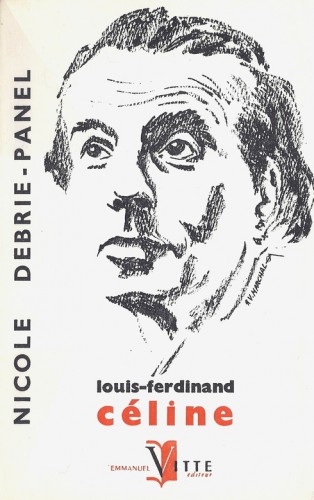 Marc Laudelout:
Marc Laudelout:
Nicole Debrie
Nicole Debrie signe en 1961 la première monographie sur Céline, battant sur le fil Marc Hanrez dont le livre paraît un peu plus tard. Comme lui, elle rencontre le reclus de Meudon qui l’accueille très cordialement. Mais, pétrifiée d’admiration, elle n’est guère loquace et se borne à répondre à ses questions. Elle lui fait part tout de même de son projet éditorial qui reçoit l’assentiment de l’écrivain.
Mes relations avec Nicole ne furent pas toujours empreintes de la plus grande sérénité. Mais quel célinien trouve grâce à ses yeux ? On a parfois l’impression en l’écoutant qu’elle seule détient la vérité. Au risque parfois de ne pas être d’accord avec elle-même. En 1987, je publie ici sa critique du livre de Bardèche, précédée d’un chapeau rédactionnel. Par retour de courrier, je reçois une lettre furibarde. Elle réfute avec force la teneur dudit chapeau, précisant qu’elle est tout à fait « opposée à la présentation d’un “Céline mystique” ». En guise de réponse, il m’est facile de reproduire une phrase de son livre : « À travers son œuvre que l’on a trop souvent accusée de naturalisme, Céline apparaît comme un mystique. » Pas de quoi lui en vouloir. D’autant que, grâce à elle, le Bulletin eut les honneurs d’Apostrophes : trop heureux de pimenter son émission, Bernard Pivot lut un passage de la critique acerbe de Nicole face à Maurice Bardèche. Lequel réagit, il faut le dire, avec une rare élégance.
Mieux que je ne pourrais le faire, Éric Mazet dit dans ce numéro l’intérêt des trois livres qu’elle a consacrés à son écrivain de prédilection. Marcel Aymé, excusez du peu, ne s’y était pas trompé : « Nicole Debrie a écrit sur l’œuvre de Céline une étude solide, intelligente qui, sans s’arrêter à chaque pas au détour de la pensée de l’écrivain, met très bien en lumière ce qu’elle a d’essentiel et qu’il n’est pas si aisé de découvrir dans un lyrisme étourdissant où elle se dissimule sous la magie des mots.
La dernière fois que j’ai vu Georges et Nicole, c’était à Paris, en novembre 2011, au colloque de la Fondation Singer-Polignac organisé à l’occasion du centenaire. Auparavant, elle m’avait fait l’amitié de venir aux « Journées de rencontres céliniennes » que Michel Mouls et moi organisâmes à Puget-sur-Argens. Elle y prononça une communication sur « Céline et l’individuation », thème abordé dans son livre sur les résonances psychanalytiques dans l’œuvre célinienne tiré de sa thèse de doctorat soutenue en 1988 ¹. Excessive tout autant qu’hyper émotive, Nicole Debrie est tout naturellement poète et polémiste. Ces deux facettes se rejoignent parfois dans un même livre. Ainsi, dans Cantilènes et grelots (1996) ², elle fustige avec une verve vengeresse « les universitaires qui désossent Céline » et les « poux, parasites et morpions » qui « s’agitent dans la superbe crinière d’un fauve qui n’en peut mais. » ² Sa conclusion : « Voici le temps des grotesques enturbannés, clochettes et colifichets… Rognures d’hommes qui agitent leur marotte : un Céline défiguré ! »
Comme on le voit, elle n’y va pas de main morte. Intempérance à la mesure de sa ferveur. Au moins faut-il lui reconnaître une vision inspirée de Céline, très éloignée des caricatures que lui-même contribua à donner de lui. Dès 1960, Nicole Debrie lui confia son intention d’analyser l’aspect poétique de son œuvre. Initiative guère répandue à l’époque. Depuis elle n’a cessé de mettre en valeur un écrivain trop fréquemment réduit à son antisémitisme ou à ses trouvailles langagières.
Marc LAUDELOUT
1. Nicole Debrie est titulaire d’une licence de philosophie, de psychologie, de psychanalyse et d’ethnologie.
2. Anecdote : le 14 mars 1996, Ernst Jünger lui accusa aimablement réception de ce recueil. Il avait alors 101 ans.
Le numéro de novembre du Bulletin célinien est consacré à Nicole Debrie.
Le Bulletin célinien, Bureau Saint-Lambert, B. P. 77, 1200 Bruxelles. Abonnement : 55 euros.
00:05 Publié dans Littérature | Lien permanent | Commentaires (0) | Tags : littérature, lettres, lettres fançaises, littérature française, nicole debrie, marc laudelout, céline |  |
|  del.icio.us |
del.icio.us |  |
|  Digg |
Digg | ![]() Facebook
Facebook
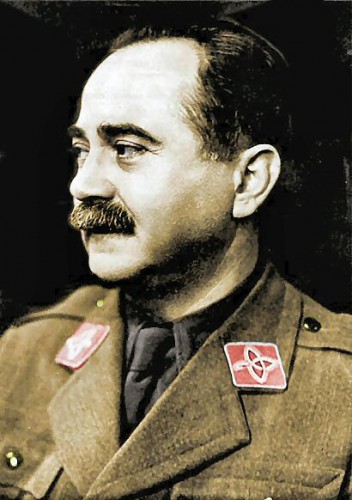
Mile Budak : itinéraire d’un réprouvé
par Christophe Dolbeau
Lorsque la Seconde Guerre mondiale s’achève, au printemps de 1945, l’épuration « anti-fasciste » qui lui succède ne se montre pas tendre envers les intellectuels qui ont fait le « mauvais choix » : les écrivains français Georges Suarez, Robert Brasillach et Paul Chack finissent au poteau d’exécution, tout comme leur collègue belge José Streel, des dizaines d’autres s’en vont croupir dans d’obscurs cachots, le philosophe italien Giovanni Gentile est abattu au coin d’une rue, tandis que le Norvégien Knut Hamsun (prix Nobel 1920) et l’Américain Ezra Pound se retrouvent bouclés pour de longues années dans des asiles psychiatriques. En Croatie où, adossés à l’Armée Rouge, les Partisans de Tito ont finalement triomphé, cette épuration s’apparente carrément à un véritable carnage dans lequel disparaît la majeure partie de l’intelligentsia (1) : les communistes veulent faire place nette. Comme le dira cyniquement Simone de Beauvoir, « certains hommes n’avaient pas leur place dans le monde qu’on tentait de bâtir » (2)… Pris dans les tourbillons de cette époque où « les règles élémentaires du droit furent littéralement foulées aux pieds » (3), l’écrivain Mile Budak fait figure de victime emblématique : romancier, poète, mais aussi avocat, ministre, ambassadeur et surtout dignitaire oustachi, il polarise toutes les haines des vainqueurs. Jugé en quelques heures par un trio de reîtres mal dégrossis, exécuté à la va-vite la nuit suivante et enseveli en catimini, il sera ensuite effacé des anthologies et exclu de la littérature nationale au prétexte de turpitudes imaginaires sur lesquelles il n’est pas inutile de revenir aujourd’hui.
Premiers pas
Originaire de la province de Lika, c’est le 30 août 1889, six jours après la mort de son père, que Mile Budak vient au monde à Sveti Rok, au sein d’une famille qui compte déjà huit enfants. D’abord élève de l’école primaire du village, il intègre ensuite le lycée de Sarajevo où il obtient, au printemps de 1910, son baccalauréat. Issu d’un milieu très modeste, le jeune homme a pu effectuer sa scolarité grâce à une bourse de l’institut catholique Napredak ; il a également travaillé ici et là comme commis aux écritures. Bachelier, il rejoint dès lors Zagreb et s’inscrit à l’université en vue d’y poursuivre des études d’histoire et de géographie, une option qu’il abandonne toutefois assez rapidement pour s’orienter finalement vers le droit.
Dès ses années de lycée, Mile Budak milite au sein des jeunesses patriotiques croates et donne ses premiers articles aux revues Pobratim, Behar et Mlada Hrvatska. À Zagreb, cet engagement peut s’exprimer plus librement (4) et dès la rentrée de 1910, le jeune homme adhère officiellement à l’association des étudiants nationalistes. Élu secrétaire du groupe, il en compose l’hymne et collabore désormais assidûment au journal Mlada Hrvatska, ainsi qu’à diverses publications – Hrvatsko Pravo, Hrvatska Prosvjeta, Savremenik – proches du Parti du Droit. Si dans ses articles, Mile Budak réclame fermement la fin de la tutelle que Vienne et Budapest exercent sur sa patrie, il aborde aussi souvent la question serbe qui est au cœur de nombreux débats en Croatie ; en disciple d’Ante Starčević (5), il souligne notamment que beaucoup de ceux qui se disent serbes, en Croatie et en Bosnie-Herzégovine, ne le sont pas vraiment, il distingue entre vrais Serbes et Zinzares (6), soutient que beaucoup de soi-disant Serbes sont en fait de souche croate (7) et affirme avec force qu’en Croatie, il ne peut y avoir de pouvoir légitime que celui qui émane du peuple croate. Déjà bien ancré dans sa personnalité, ce sourcilleux nationalisme le conduit à fréquenter les éléments les plus radicaux, ce qui lui vaudra quelques démêlés avec la police, au lendemain des attentats qui visent, en 1912, le Ban Slavko Cuvaj.
Parallèlement à ses études, au journalisme et au militantisme politique, la vie de Mile Budak est bien remplie puisque le jeune homme trouve encore le temps d’exercer un petit emploi de gratte-papier au Bureau Municipal des Statistiques et d’effectuer une préparation militaire. Au plan privé, sa situation évolue également puisqu’il se marie et que son épouse, Ivka, ne tarde pas à lui donner un premier enfant (20 juillet 1914).
De l’uniforme à la toge d’avocat
Les événements ne laissent que quelques jours à Mile Budak pour fêter la naissance de son fils Zvonimir (8) car la guerre éclate (4 août 1914) et le jeune aspirant est appelé à rejoindre son régiment. Engagé sur le front de Mačva, il s’y bat quelques semaines avant d’être sérieusement blessé et d’aboutir à l’hôpital militaire de Valjevo où les Serbes le font prisonnier (8 décembre 1914). Sa captivité va durer quasiment cinq ans. Elle l’amènera à traverser à pied la Macédoine et l’Albanie aux côtés de ses geôliers puis à séjourner dans les camps italiens de Muro Lucano et d’Asinara. Ce n’est que le 18 août 1919, huit mois après la cessation des hostilités qu’il débarque enfin à Gruž, dans un pays qui s’appelle désormais le « Royaume des Serbes, Croates et Slovènes » : il témoignera plus tard de ses tribulations de prisonnier de guerre dans Ratno roblje (Otages de guerre), un livre qui paraîtra en 1941.
Sitôt de retour à Zagreb, Mile Budak entreprend de terminer ses études et le 31 juillet 1920, il soutient avec succès sa thèse de doctorat. À 31 ans, il peut désormais envisager d’avoir un emploi décent et en rapport avec ses ambitions. Avocat stagiaire au cabinet du Dr Ante Pavelić, il collabore également avec ce dernier au sein du Parti du Droit, collabore aux publications (Hrvatski Misao, Pravaš, Hrvatsko Pravo) qui soutiennent cette formation et participe aussi aux activités du Hrvatski Sokol (9). Au terme de sa période probatoire (1923), il accède au plein statut d’avocat, ouvre son propre cabinet et se fait vite connaître en plaidant quelques affaires politiques retentissantes : en mai 1925, il défend par exemple son ami de jeunesse Vladimir Ćopić (10), un activiste communiste, pour lequel il a déjà témoigné en 1922, et quatre ans plus tard, il plaide pour Josip Šunić, un militant du Parti Paysan que l’on accuse d’avoir occis le journaliste serbe Vlada Ristović. Élu au conseil municipal de la capitale (4 septembre 1927), Mile Budak y siège durant deux ans, jusqu’à l’instauration de la dictature – à compter de janvier 1929, les conseillers sont en effet nommés par le roi, ce que refusent Budak et ses collègues du Parti Paysan.
Avec l’instauration de la dictature (6 janvier 1929), l’action politique légale devient impossible. Ante Pavelić quitte donc le pays, non sans avoir auparavant fondé l’Oustacha, mouvement révolutionnaire et clandestin qui se propose de libérer la Croatie de l’oppression étrangère et de proclamer l’indépendance. Moins exposé que son confrère, Mile Budak reste à Zagreb où les patriotes se lancent, sous la houlette de Stipe Javor, dans l’action subversive et la résistance armée. En mars, le journaliste pro-serbe Tony Schlegel est abattu par de jeunes nationalistes, ce qui entraîne une vague d’arrestations et la fuite à l’étranger de plusieurs militants (11) ; le 29 et le 31 août, Mile Budak et Stipe Javor sont eux aussi arrêtés. Accusé d’être le cerveau de la subversion, Stipe Javor se verra bientôt condamné à 20 ans de détention (12). Pour sa part, Mile Budak, sur lequel ne pèse aucune charge précise, passe sept mois derrière les barreaux avant d’être remis en liberté sans qu’aucune procédure ne soit ouverte à son encontre !
N’étant pas poursuivi, Mile Budak peut prendre part à la défense des patriotes et lors du procès que l’État yougoslave intente à Stipe Javor, Matija Soldin, Marko Hranilović (13) et une vingtaine de leurs camarades, il figure d’ailleurs parmi les avocats des inculpés, au côté du Dr Vladko Maček (14) avec lequel il se lie d’amitié. Faute d’avoir pu légalement le réduire au silence, le pouvoir royal décide alors de le faire taire définitivement et par des moyens plus expéditifs. Le 7 juin 1932, Mile Budak est assailli dans une rue par deux ou trois individus qui le blessent d’un coup de feu et l’assomment à coups de gourdin, l’expédiant pour trente-huit jours à l’hôpital ! L’intention était clairement de le tuer et il n’en réchappe que grâce à l’intervention rapide de quelques passants qui devront eux-mêmes faire face à mille tracasseries. Identifiés comme des agents de la police secrète, ses agresseurs n’écoperont que de trois ans de prison, ce qui soulève, à Zagreb, une tempête d’indignation : une pétition de soutien à Mile Budak réunit en quelques jours 209 signatures (dont celles des archevêques Bauer et Šarić et celles des communistes August Cesarec et Božidar Adžija), tandis que des parlementaires interpellent violemment le ministre de l’Intérieur.
Malgré ce climat délétère, Mile Budak participe, en novembre 1932, aux discussions qui préludent à la signature de ce que l’on appellera la « Déclaration de Zagreb » (Zagrebačka Punktacija), un document dans lequel les principales forces politiques croates (Parti Paysan, Parti du Droit, Parti Démocrate Serbe) dénoncent ensemble l’hégémonisme serbe et réclament l’instauration du fédéralisme. À peine remis de l’attentat qu’il a subi, Budak se sent encore menacé et il envisage désormais d’émigrer afin de mettre quelque distance entre sa famille, lui-même et les hommes de main du régime. L’arrestation de Vladko Maček (31 janvier 1933) achève de le convaincre et après avoir cédé les rênes de ce qu’il reste du Parti du Droit à son confrère Lovro Sušić (15), il quitte le royaume le 2 février 1933. Officiellement, il part en cure à Karlsbad (Karlovy Vary) avec son épouse et laisse ses filles (16) à Zagreb, aux bons soins de son ami Ivan Werner (17) ; elles rejoindront discrètement leurs parents quelques semaines plus tard.
L’émigration
Après une brève escale à Graz, Mile Budak et les siens gagnent ensuite Modène où ils sont hébergés par la famille Pavelić, puis Turin où ils vont demeurer jusqu’en décembre 1933. C’est à cette époque que Budak adhère formellement à l’Oustacha dont il prête le serment. C’est également durant ce court séjour qu’il rédige une petite brochure, Le peuple croate et son combat pour un État libre et indépendant (Hrvatski narod u borbi za samostalnu i nezavisnu hrvatsku državu), dont il confie le manuscrit au Père Stipanovic (18). Venu des Etats-Unis pour remettre un mémorandum à la Société des Nations, cet ecclésiastique invite Budak à l’accompagner au Vatican (24 octobre 1933) où ils rencontrent tous deux Sa Sainteté Pie XI lors d’une audience privée, avant d’être reçus à la Secrétairerie d’État.
Outre la brochure que nous avons mentionnée, Mile Budak commence également à collaborer à la presse oustachie : sa première contribution, signée Velebitski, est un poème à la gloire des combattants du mouvement qui paraît aux alentours de Pâques dans Grič et Ustaša. « L’ennemi piétine ta mère », s’écrie l’auteur, « Il crache sur les autels et souille les tombes des tiens » mais la Croatie attend impatiemment la venue de l’Oustacha (19). Associé à la rédaction de l’almanach « de l’État Indépendant Croate » qui réunit les signatures des intellectuels émigrés (20), il y publie ensuite « quelques réflexions » (21) qui lui permettent d’exprimer son attachement à la terre natale et aux paysans, et d’exposer sa vision essentiellement agrarienne du futur État croate. C’est à la même époque, enfin, qu’il compose pour les militants une marche belliqueuse où il chante « le héros Ante » qui s’élève comme un aigle sauvage des sommets du Velebit pour « chasser le diable au-delà de la Drina »… [Crûment intitulée « Bježte, psine ! » ou « Fichez-le-camp, chiens ! », cette marche serbophobe sera souvent reprochée à Mile Budak. Il faut toutefois la replacer dans le contexte d’extrême tension des années 1930. Au moment où Budak écrit ces paroles, il y a des attentats, des tortures, des pendaisons, une répression terrible et les passions sont exacerbées. Cette marche traduit peut-être de façon un peu radicale l’exaspération des patriotes croates mais elle reste néanmoins sensiblement moins acrimonieuse que La Marseillaise…].
À la fin de l’année 1933, Mile Budak et son épouse partent pour Berlin où l’écrivain doit superviser l’édition du bimensuel Nezavisna Hrvatska Država et de l’almanach du même nom, deux publications que dirige Branimir Jelić (22). À cette époque, le gouvernement allemand ne veut plus que ces titres soient imprimés à Berlin : ils le seront donc à Dantzig avant que l’imprimerie italienne de l’Oustacha n’en reprenne l’édition. La cohabitation à la tête d’une même entreprise éditoriale de deux personnalités aussi fortes que celles de Mile Budak et Branimir Jelić se révèle vite orageuse et une brouille profonde opposera durablement les deux hommes. Dans l’immédiat, ce différend est mis entre parenthèses car Jelić se rend en Amérique où Pavelić l’a chargé d’implanter l’Oustacha (23). De son côté, Budak ne reste pas non plus en Allemagne car au début du mois d’octobre 1934, le Poglavnik l’appelle d’urgence en Italie. Entre les deux hommes, Pavelić a, semble-t-il, fait son choix puisqu’en mai 1934, il a écarté Jelić des instances dirigeantes du mouvement et promu Budak au rang supérieur de conseiller (doglavnik).
Arrivé à Bologne le 8 octobre 1934, veille de l’attentat de Marseille [dans lequel il ne joue aucun rôle], Mile Budak se rend ensuite à Turin auprès des Pavelić. Pour les émigrés croates commence alors une période difficile car d’énormes pressions s’exercent maintenant sur leurs pays d’accueil et notamment sur l’Italie. Le 17 octobre, le chef de l’Oustacha et son bras droit, Eugen Dido Kvaternik (24), sont incarcérés par les autorités fascistes qui interceptent peu après (8 novembre) Branimir Jelić qui arrive des Etats-Unis. Les camps oustachis sont fermés et la plupart de leurs occupants (plus de 500 hommes) assignés à résidence sur l’île de Lipari. Placé par Pavelić à la tête de toutes les bases de l’organisation (10 janvier 1935), Mile Budak devient dès lors le principal interlocuteur du gouvernement fasciste et le responsable en chef des internés, une position qui s’avère vite inconfortable. Contesté par de nombreux militants qui lui reprochent de se montrer trop conciliant avec les Italiens et qui contreviennent ouvertement à ses ordres, Mile Budak peine à imposer son autorité. Ces conflits internes lui vaudront des rancunes tenaces et lui laisseront un souvenir amer.
À partir de 1936, son épouse Ivka s’établit à Messine où il la rejoint en février 1937, la direction du groupe de Lipari étant désormais assurée par Eugen Dido Kvaternik ; il ne s’agit cependant que d’une étape de plus puisque trois mois plus tard, le couple déménage encore, cette fois pour Salerne. Libéré des exténuantes chamailleries de Lipari, Mile Budak peut enfin se remettre à écrire. Ponctuée par la parution successive de Pod gorom (Au pied des montagnes – 1930), Raspeće (La mise en croix – 1931), Na ponorima (Au bord des abîmes – 1932) et Opanći dida Vidurine (Les mocassins de Pépé Vidurina – 1933), sa carrière littéraire s’est brutalement interrompue lorsqu’il a pris le chemin de l’exil, et ses nombreuses obligations ultérieures ne lui ont guère laissé le temps de renouer avec la littérature. À Messine puis à Salerne, c’est donc avec ferveur qu’il reprend la plume. Dans Na vulkanima (Au bord des volcans), qui ne paraîtra qu’en 1941, il raconte tout d’abord les péripéties de sa mission aux îles Éoliennes, puis il s’attelle à ce que beaucoup de critiques considèrent comme son œuvre majeure, le roman Ognjište (L’Âtre). Dans ce livre, dont il rédige les 850 pages en 43 jours, enfermé dans une chambre d’hôtel, Mile Budak – que certains tiennent pour un émule de Dostoïevski et d’autres pour un épigone de Wladislaw Reymont – trace un tableau fidèle et vivant de la vie des paysans de sa province natale de Lika. Avec cette œuvre, il prend place, aux côtés de Jean Giono, Stijn Streuvels, Dezsö Szabó et quelques autres, parmi les grands noms de la littérature du terroir et du courant que les Allemands nomment le Blut und Boden.
Le retour
Suite à l’accord intervenu entre l’Italie et la Yougoslavie (25 mars 1937), la branche italienne de l’Oustacha est dissoute (1er avril 1937) et les émigrés se voient fermement invités à rentrer au pays. Au cours des douze mois qui suivent, un premier contingent de 161 personnes regagne d’ailleurs la Yougoslavie (25). Dans ce contexte, Mile Budak, dont l’épouse supporte de plus en plus mal les rigueurs de l’exil, commence à envisager sérieusement l’hypothèse d’un retour. Il est difficile d’établir, aujourd’hui, s’il agit en accord avec Pavelić ou de son propre chef mais le fait est qu’il rencontre à deux reprises le célèbre policier yougoslave Vladeta Miličević afin d’évoquer les conditions de son retour, et qu’il s’entretient même, sur les bords du Lac de Côme, avec le Premier ministre yougoslave Milan Stojadinović. En tout état de cause, ces discrètes négociations finissent par aboutir puisqu’au bout de cinq mois, Mile et Ivka Budak quittent Salerne pour Zagreb où ils arrivent le 6 juillet 1938, quelques semaines seulement après la sortie en librairie de Ognjište…
Pour l’homme de lettres, ces retrouvailles avec la Mère Patrie marquent un regain d’activité. Peu de temps après la publication de Ognjište paraît le roman Direktor Križanić, suivi en 1939 de Na Veliki Petak (Le Vendredi Saint) et de Rascvjetana trešnja (Le cerisier en fleurs), puis en 1940 de San o sreći (Songe de bonheur). Cette créativité littéraire n’empêche pas Mile Budak de redescendre dans l’arène politique en prenant tout d’abord la direction du nouvel hebdomadaire nationaliste Hrvatski Narod et en patronnant ensuite l’association Uzdanica. [Animé par des sympathisants de l’Oustacha, ce groupe a pour objectifs de fournir une assistance morale et financière aux victimes de la répression et de concurrencer dans toutes les communes l’appareil du Parti Paysan]. Alors que la Seconde Guerre mondiale vient d’éclater, les patriotes croates sont encore loin d’avoir gagné la partie : la Croatie a certes obtenu un semblant d’autonomie (24 août 1939) mais la répression anti-indépendantiste ne faiblit pas. Au cours de l’année 1940, le journal Hrvatski Narod est d’ailleurs suspendu, tandis que les dirigeants nationalistes sont arrêtés les uns après les autres et incarcérés au camp de Krušćica, en Bosnie centrale. Figure de proue de la contestation anti-yougoslave, Mile Budak n’est, bien sûr, pas épargné par la rafle : appréhendé le 27 février 1940, il ne sera élargi que cinq semaines plus tard, non sans avoir observé deux grèves de la faim. L’écrivain n’est pas épargné non plus par le destin puisque le 11 avril 1940, le jour même où s’achève sa détention, son épouse Ivka décède à leur domicile de Zagreb. Retrouvée noyée dans un bassin de jardin, on ne saura jamais si elle a mis fin à ses jours ou si elle a été victime d’un homicide…
Ministre de l’Instruction
Au moment où se déclenche l’offensive allemande contre la Yougoslavie (6 avril 1941), Mile Budak se trouve dans un hôpital de Zagreb où il se remet d’une opération de la vésicule biliaire (et où il échappe de peu à une nouvelle tentative d’attentat). C’est donc depuis son lit de douleur qu’il apprend, le 10 avril 1941, la proclamation par Slavko Kvaternik (26) de l’État Indépendant Croate. Même si ses problèmes de santé l’ont tenu à l’écart des événements du 10 avril et s’il n’appartient pas au noyau dur de l’Oustacha, l’écrivain demeure cependant l’un des personnages les plus en vue du mouvement et à ce titre, le Poglavnik lui offre bientôt d’entrer dans le premier gouvernement du nouvel État. Le 16 avril 1941, Mile Budak est donc nommé ministre des Cultes et de l’Instruction (27), un poste qu’il va occuper durant un peu plus de six mois.
La création du nouvel État implique la mise en place d’un nouveau système scolaire et universitaire, ce qui constitue la tâche prioritaire du nouveau ministre. Ce dernier procède à quelques promotions et mutations chez les enseignants et directeurs de lycée, il fait réaliser de nouveaux livres de lecture pour les écoles primaires et de nouveaux manuels pour les établissements secondaires. Dans le domaine universitaire, il installe une commission de réforme et supervise l’attribution des postes [contrairement aux clichés souvent répandus, le nouveau régime ne déclenche aucune chasse aux sorcières et seuls 14 ou 15 professeurs sont placés en situation de retraite]. Dans le même temps, Mile Budak ordonne (9 août 1941) la création de l’Institut d’Édition Bibliographique (HIBZ) qui aura pour mission de rédiger et de publier une encyclopédie croate ; son champ d’action dépassant le strict domaine scolaire pour s’étendre à celui de la culture en général, il s’intéresse également à la fondation (12 juillet 1941) de l’Académie Croate des Sciences et des Arts (HAZU) ainsi qu’aux travaux de l’Association des Écrivains et à l’avenir du Théâtre National. Parallèlement à ces activités qui relèvent de son ministère, il poursuit d’autre part l’édition de ses propres œuvres et notamment de Ratno roblje (Otages de guerre), Na vulkanima (Au bord des volcans) et Musinka qui paraissent durant l’année.
Globalement, ce semestre à la tête du ministère de l’Instruction est une période plutôt positive pour Mile Budak au crédit duquel il faut encore porter de discrètes interventions en faveur des écrivains Miroslav Krleža (28) et Ivo Andrić (29). La seule ombre au tableau mais elle est de taille, ce sont les quelques discours que Budak prononce au cours de l’été et dans lesquels il s’en prend maladroitement aux Serbes, ce que la propagande ennemie ne manquera pas de monter en épingle. Pour se faire une idée objective des propos du ministre, il faut bien les replacer dans le contexte de la libération du pays et bien comprendre aussi l’état d’esprit de Mile Budak. Il ne faut pas oublier que ce dernier a eu à subir deux attentats et un emprisonnement arbitraire du fait du pouvoir serbe, qu’il a dû passer cinq ans en exil et que son épouse a peu ou prou succombé à cette pression ; il faut aussi se souvenir que Mile Budak n’est pas un politicien de métier mais un écrivain et un artiste, qu’il ne possède pas la traditionnelle cautèle des hommes politiques confirmés et qu’il n’est pas rompu à ce langage convenu que les Russes nommaient autrefois la « langue de chêne ». Lorsqu’il lance, presque à son corps défendant (30), la fameuse formule « Srbe na vrbe » ou « Les Serbes dans les saules », il ne s’agit donc nullement, comme on l’a prétendu, d’un mot d’ordre invitant les Croates à pendre les orthodoxes haut et court. Il s’agit simplement, dans la liesse et la chaleur communicative d’un meeting fêtant l’indépendance, d’une allusion – plutôt inopportune, il est vrai – à un slogan d’avant la Première Guerre mondiale, et plus précisément à un poème composé en juillet 1914 par le Slovène Marko Natlačen. Notons au passage que les Serbes n’en tinrent pas vraiment rigueur au dit Natlačen puisque le roi de Yougoslavie le nomma plus tard gouverneur de la Banovine de la Drave… À l’occasion d’une autre réunion publique, Budak aurait également annoncé au sujet des Serbes qu’il fallait en chasser un tiers, en tuer un second tiers et en convertir le dernier tiers. Cette fois encore, tout sera fait pour accréditer la thèse que le ministre énonçait là le monstrueux programme génocidaire de l’État Croate. En réalité, cela ne correspond ni aux projets de l’État (31), ni à la pensée d’Ante Pavelić (32) et encore moins à celle de Budak lui-même (33). Il s’agit tout au plus et dans le feu d’un discours, du pastiche d’une vieille déclaration faite au siècle précédent et au sujet des musulmans par le général et ministre serbe Milivoje Blažnavac (34). On parlerait aujourd’hui, au pire, d’un dérapage verbal ou d’une incongruité, et il semble tout à fait exagéré d’y voir autre chose qu’une maladresse et un manque d’expérience. Outre que Budak n’aurait probablement pas fait de mal à une mouche, il n’était aucunement concerné par les questions raciales, ne possédait aucune influence en la matière et n’a d’ailleurs jamais signé le moindre document officiel y ayant trait.
Ambassadeur à Berlin
Le 2 novembre 1941, Mile Budak quitte le ministère de l’Instruction pour devenir ambassadeur de Croatie en Allemagne, une nomination qui ne s’est pas faite sans difficultés car la Wilhelmstrasse le soupçonne d’être favorable à l’Italie et même d’appartenir à la franc-maçonnerie. Aux yeux de beaucoup d’observateurs, cette affectation a tout d’un exil doré. Personnage un peu marginal et jugé parfois fantasque, il ne jouit peut-être pas de la totale confiance du Poglavnik et compte de féroces détracteurs parmi les hiérarques de l’Oustacha. À Berlin, il sera loin de la scène politique croate et ne fera de l’ombre à personne…
Arrivé le 8 décembre dans la capitale du Reich, Mile Budak présente ses lettres de créance à Hitler le 28 février 1942. Il dispose à Grunewald d’une belle ambassade et fait l’objet de quelques prévenances mais de toute évidence, son rôle politique est tout à fait minime car les affaires importantes se négocient directement à Zagreb, entre Pavelić, le plénipotentiaire Siegfried Kasche et le général Glaise von Horstenau. Le seul sujet de quelque relief dont il aura à s’occuper sera la création et l’équipement d’une gendarmerie croate. Faute d’être associé aux débats de fond, le nouvel ambassadeur se consacre donc aux travailleurs croates qui résident en Allemagne (environ 150 000), à l’établissement de relations cordiales avec le corps diplomatique et au renforcement de la coopération culturelle germano-croate. On sait, par exemple, qu’il établit de fructueux contacts avec les ambassadeurs de Turquie (Rizvanbegović) et du Japon (Hiroshi Ōshima)-(35), ainsi qu’avec le Grand Mufti de Jérusalem, Hadj Amin al-Husseini (36), et l’influent général Gottlob Berger. Sur le plan culturel, il prépare la venue à Vienne de l’Opéra Croate et organise à Berlin une grande exposition où sont présentées, en janvier 1943, 460 œuvres d’artistes croates (76 peintres et 19 sculpteurs). Au bout d’un an et demi de séjour en Allemagne (où plusieurs de ses livres ont été traduits) et à l’heure où sa mission s’achève, on peut dire que Mile Budak a parfaitement tenu son rang et qu’il a sensiblement amélioré l’image de la Croatie auprès du grand public.
Ministre des Affaires Étrangères
Des difficultés ayant surgi avec l’Italie en raison du soutien de certains militaires fascistes aux Tchetniks de Dalmatie, Ante Pavelić se trouve contraint de procéder à un remaniement et le 23 avril 1943, Mile Budak se voit désigné pour prendre la succession de Mladen Lorković à la tête du ministère des Affaires Étrangères. Sur le papier, il s’agit d’une promotion mais dans les faits, l’écrivain ne dispose de guère plus de latitude qu’à Berlin car la politique étrangère demeure l’une des chasses gardées du chef de l’État. Concrètement, le rôle de Mile Budak se borne le plus souvent à accompagner le Poglavnik puis à répercuter les décisions prises ou les orientations choisies aux légations diplomatiques. Ainsi, le 27 avril 1943, le nouveau ministre est-il au château de Klessheim où il assiste aux entretiens entre Pavelić et Hitler, apparemment sans intervenir ; le 5 mai, il est également présent lors de la rencontre entre Himmler et le Poglavnik, et le 26 juillet, lors des entretiens au cours desquels Pavelić et Siegfried Kasche évoquent la chute de Mussolini. À aucun moment au cours de ces trois rendez-vous importants, Mile Budak n’intervient de façon notable. Ses premiers gestes, plus symboliques que vraiment significatifs – et qu’il n’effectue certainement pas sans un feu vert préalable du chef de l’État – consistent, au mois d’août 1943, à établir des relations diplomatiques avec la Birmanie puis, le 17 octobre, avec les Philippines… On ne peut pas dire qu’il s’agisse de décisions majeures.
Le 8 septembre 1943, l’Italie capitule et dès le lendemain, Ante Pavelić annonce que les Accords de Rome sont abrogés et que la Croatie va récupérer ses frontières historiques. Les choses sont néanmoins plus complexes qu’il n’y paraît et Mile Budak se retrouve au cœur des tractations qui s’engagent. Se posent, en effet, de nombreux problèmes car dès le 10 septembre, Hitler ordonne la création d’une « Zone d’opération du littoral adriatique » (OZAK) qui englobe Rijeka et les îles du Kvarner et où il désigne un haut commissaire ; d’autre part, la République Sociale Italienne (fondée par Mussolini, le 23 septembre 1943) revendique toujours la souveraineté sur cette région ainsi que sur Zadar. Au sud se pose aussi la question de Kotor que le Monténégro entend disputer à la Croatie. Très engagé dans la défense des intérêts territoriaux et militaires de la Croatie, Mile Budak se montre beaucoup plus actif que durant les mois précédents : il multiplie les interventions, tente de faire pression et n’hésite pas à critiquer ouvertement les choix de Berlin, ce qui finit par fragiliser sa position au sein du gouvernement. Devenu plus ou moins importun, l’écrivain se voit alors proposer le portefeuille de la Justice mais il décline cette offre et demande, le 5 novembre, à être déchargé de ses fonctions.
Un dénouement tragique
Rendu à la vie civile, Mile Budak peut à nouveau se consacrer pleinement à son œuvre littéraire. En 1943 paraît une sélection de ses nouvelles, Izabrane pripoviesti (Textes choisis), tandis que l’écrivain s’attelle désormais à la rédaction d’une grande saga en six volumes, Kresojića soj (Le sang des Kresojić), dont les trois premiers récits, Kresina, Gospodin Tome (Maître Thomas) et Hajduk (Le Haïdouk) paraîtront en 1944.
Ce travail d’écriture ne l’écarte cependant pas totalement de la vie politique puisqu’il conserve son rang de doglavnik et reste donc membre du Grand Conseil de l’Oustacha (37). En cette qualité, il prend d’ailleurs part à toutes les réunions du Conseil, certaines se déroulant même à son domicile. Cette participation, il faut le préciser, est assez symbolique car le Conseil ne possède qu’un rôle consultatif ; elle démontre en tout cas que Mile Budak demeure fidèle à ses engagements et qu’il n’abandonne pas le combat.
Au printemps de 1945, ce combat entre toutefois dans sa dernière phase car l’Armée Rouge et les Partisans progressent irrésistiblement en direction de Zagreb où l’on ne se fait plus beaucoup d’illusions sur l’avenir de l’État Indépendant Croate. Le 6 mai, les membres du gouvernement et les notables du régime quittent d’ailleurs la capitale et prennent la direction de Turracher Höhe, en Autriche : Mile Budak est du voyage, avec sa fille Grozdana et sa nièce Ana. Arrivés le 7 au soir, les fugitifs, qui sont sous l’autorité formelle du Premier ministre Nikola Mandić, prennent ensuite le chemin de Turrach, Predlitz et Tamsweg où Mandić prend contact avec l’armée britannique (14 mai 1945). Au bout de trois jours, le groupe – qui comprend 69 personnes, femmes et enfants compris – est transféré au camp de Spittal, puis à Rosenbach où il est remis aux Partisans qui emmènent les captifs à Škofia Loka. Là, Mandić, Budak, Ademaga Mešić et une douzaine d’autres dignitaires sont séparés de leurs compagnons pour être acheminés sur Zagreb où ils arrivent entre le 21 et le 25 mai. Des 54 prisonniers restés à Škofia Loka, seuls quelques jeunes enfants survivront : les autres, dont la fille et la nièce de Budak, ainsi que la fille aînée du ministre Ivica Frković et le frère du Poglavnik, sont tous exécutés le 25 mai, sans aucun jugement préalable.
Incarcéré à Zagreb, Mile Budak est interrogé le 26 mai et son « procès » s’ouvre le 6 juin devant le tribunal militaire de la IIe Armée. Il s’agit bien entendu d’un grossier simulacre de justice : les inculpés sont dix (38) et ils n’ont qu’un seul avocat que l’on a prévenu la veille… La pseudo cour se compose du colonel Hrnčević, du major Divjanović et du capitaine Ranogajec, et quant à l’accusation, elle a été confiée au Vychinski de Tito, le sinistre Jakov Blažević (39). Bien que la procédure vise dix personnes dont cinq anciens ministres, les débats sont vite expédiés et le verdict tombe dans la soirée : Mile Budak est condamné à mort par pendaison, pour haute trahison et crimes de guerre (40). Il sera exécuté dans la nuit, aux petites heures du 7 juin 1945, treize ans jour pour jour après l’attentat qui avait failli lui coûter la vie en 1932 !
Un homme d’honneur
Exécuté à la hâte parce que ses idées et son talent étaient insupportables aux nouveaux maîtres de la Yougoslavie reconstituée et parce qu’il fallait décapiter l’intelligentsia croate, Mile Budak n’a bien sûr perpétré aucun « crime de guerre » ni commis la moindre « trahison ». Homme de lettres, il a écrit et parlé en faveur de son peuple, de l’indépendance de sa patrie et du parti dont il était membre mais il n’a jamais attenté à la vie de quiconque ni ordonné à qui que ce soit de commettre un quelconque méfait (41). Ministre de l’Instruction et des Affaires Étrangères, ambassadeur et conseiller supérieur de l’Oustacha, il n’est jamais entré dans ses attributions de commander des troupes sur le terrain, ni de leur fixer une ligne de conduite et encore moins de leur assigner des objectifs. Eut-il même voulu commettre un crime de guerre qu’il n’eut pas vraiment été en situation de le faire. Par ailleurs, on ne voit pas comment on peut décemment l’accuser de trahison au vu des trente-cinq ans qu’il a consacrés à servir la Croatie, son pays. À l’égard de la Yougoslavie, entité artificielle, imposée de force et par l’étranger, il ne devait aucune allégeance et ce n’est pas le moindre des paradoxes que de constater que ce sont ceux-là mêmes qui ont tout fait pour étouffer l’indépendance de la Croatie et asservir son peuple qui ont osé le condamner au motif d’une pseudo trahison. L’honneur était de son côté, pas du leur.
Romancier, poète, militant, avocat, ministre et diplomate, Mile Budak fut à la fois un artiste et un homme d’action auquel il semble juste de reconnaître un certain panache. On peut, certes, ne pas apprécier son œuvre ou désapprouver son engagement mais ce n’était sûrement pas une raison pour l’expédier à la potence !
Christophe Dolbeau
Notes
(1) Voir C. Dolbeau, « Croatie 1945 : une nation décapitée », in Tabou, vol. 18 [version croate in Hrvatski list du 12 mai 2011, « Hrvatska 1945 : obezglavljeni narod (komunistički aristocid nad Hrvatima) »] et « Bleiburg, démocide yougoslave », in Tabou, vol. 17.
(2) Cf. La force des choses, Folio-Gallimard, Paris 1963, p. 36.
(3) Cf. Gabriel Marcel, Les hommes contre l’humain, La Colombe, Paris 1951, p. 185.
(4) En Bosnie-Herzégovine, les activités de Mlada Hrvatska étaient proscrites alors qu’elles ne l’étaient pas en Croatie.
(5) L’écrivain Ante Starčević (1823-1896), fondateur du Parti Croate du Droit, fut un partisan déclaré de l’indépendance croate ; il est considéré par les patriotes croates comme le Père de la Patrie.
(6) Les Zinzares ou Aroumains sont une peuplade romanophone des Balkans ; on les appelle également Morlaques, Valaques, Mauro-Valaques, Latini Negri, Blahoï, Kara-Martoloži, Eflakan, Aromounes, Olaks ou Čiči. Selon certains spécialistes dont le Père D. Mandić, 50 à 52% des Serbes de Bosnie-Herzégovine seraient de lointaine origine zinzare – voir D. Mandić, Hrvati i Srbi, dva stara različita naroda, KHR, Barcelone 1971, p. 212.
(7) Cf. D. Mandić, op. cit., p. 212.
(8) Né le 20 juillet 1914, Zvonimir Budak quitte la Croatie en 1933 pour les Etats-Unis où il deviendra citoyen américain sous le nom de Frank M. Berger. Vétéran de la Guerre de Corée, il est décédé à Memphis, le 13 novembre 1994.
(9) Le Hrvatski Sokol est une organisation patriotique (40 000 membres) qui promeut et encourage la pratique du sport. Mile Budak en sera le vice-président.
(10) Ancien cadre de Mlada Hrvatska (Jeune Croatie), Vladimir Ćopić (1891-1939) a rejoint les bolcheviks durant la Première Guerre mondiale. Fondateur du Parti Communiste Yougoslave, il sera délégué au Ve Congrès du Komintern avant de commander la XVe Brigade Internationale au cours de la Guerre d’Espagne (1937-38) ; rappelé à Moscou, il y a été liquidé lors de la Grande Purge.
(11) dont Mijo Babić, Zvonimir Pospišil et Mladen Lorković.
(12) Incarcéré à Lepoglava et Srijemska Mitrovica où il fait la grève de la faim, Stipe Javor (1877-1936) succombe le 27 mars 1936 des suites d’une pneumonie et des tortures qu’on lui a infligées.
(13) Matija Soldin et Marko Hranilović seront condamnés à mort et exécutés par pendaison le 25 septembre 1931. L’un et l’autre avaient été sévèrement torturés durant l’instruction de leur affaire.
(14) Vladko Maček (1879-1964), avocat, député, chef du Parti Paysan Croate.
(15) Lovro Sušić (1891-1972), avocat, député, futur ministre de l’État Indépendant Croate et secrétaire général (postrojnik) de l’Oustacha.
(16) Outre son fils Zvonimir, Mile Budak a eu deux filles : Neda, née le 4 février 1921, et Grozdana, née le 17 mars 1924. Épouse de Krešimir Puk (fils d’un célèbre dignitaire oustachi), Neda émigrera aux Etats-Unis où son mari prendra le nom de Peter Poock ; elle est décédée le 16 mars 1995 dans l’Iowa. Grozdana sera quant à elle assassinée par les Partisans, le 25 mai 1945.
(17) Industriel de la viande, Ivan Werner (1887-1944) sera nommé maire de Zagreb en 1941.
(18) Cette brochure sera éditée en mai 1934 par une association croate de l’Ohio. Une version espagnole paraîtra à Buenos Aires en 1937 mais en revanche, les traductions allemande et italienne seront jugées « inopportunes » par les gouvernements de Berlin et Rome.
(19) « Ustašo moj » – texte cité dans « Prilog životopisu dra Mile Budaka » par Jere Jareb, in Hrvatska Revija, N° 1 [157], mars 1990, p. 104.
(20) À savoir Ante Pavelić, Marko Došen, Joža Milković, Ivan Perčević, Stanko Hranilović, Ante Brkan, Ante Valenta, Stijepo Perić, Ante Bubalo, Mijo Bzik, etc.
(21) « Nekoliko misli o uređenju slobodne i nezavisne hrvatske države ».
(22) Branimir Jelić (1905-1972), médecin de profession, avait été le chef des jeunesses du Parti du Droit. Arrêté à Gibraltar en 1941, alors qu’il revenait des USA, il sera incarcéré durant quatre ans sur l’île de Man et ne jouera donc aucun rôle dans l’État Indépendant Croate.
(23) L’opération est un succès puisque selon J. Sadkovich, le Hrvatski Domobran des USA (fondé le 21 août 1933 par B. Jelić) regroupe, en 1935, 15 000 adhérents répartis en 30 sections – voir « La composizione degli ustascia : una valutazione preliminare », in Storia Contemporanea, N° 6 (décembre 1980).
(24) Principal organisateur de l’attentat de Marseille contre le roi Alexandre Ier, Eugen Dido Kvaternik (1910-1962) sera Commissaire à l’Ordre Public et à la Sécurité au début de l’État Indépendant Croate.
(25) En 1938-39, cent dix-sept autres sont renvoyés en Yougoslavie, et en 1939-40 quatre – voir P. Iuso, Il Fascismo e gli Ustascia 1929-1941, Gangemi Editore, Roma 1998, pp. 119-125.
(26) Ancien colonel de l’armée austro-hongroise, Slavko Kvaternik (1878-1947) sera le premier ministre de la Défense de l’État Indépendant Croate ; promu maréchal des armées et général oustachi, il s’exile en Slovaquie et prend quelque distance avec le régime à partir d’octobre 1942.
(27) Le 9 octobre 1942, le ministère changera de dénomination : de ministère de l’Instruction et des Cultes il deviendra ministère de l’Éducation Nationale.
(28) Proche du Parti Communiste, le romancier Miroslav Krleža (1893-1981) se voit proposer, à l’initiative de Mile Budak, un poste d’intendant du Théâtre National, puis une chaire à l’université et enfin une mission en Suisse, afin de le mettre à l’abri de la répression. Il déclinera ces offres.
(29) Ancien diplomate yougoslave, le futur prix Nobel Ivo Andrić (1892-1975) se verra proposer, à l’initiative de Mile Budak et avec l’assentiment de Pavelić, un poste dans la diplomatie croate. Il ne donnera pas suite à cette offre.
(30) Il confiera au Dr Mate Frković que l’expression « lui a spontanément échappé » – cité par Jere Jareb, « Prilog životopisu dra Mile Budaka ; drugi dio », in Hrvatska Revija, N° 2 [158], juin 1990, p. 315.
(31) Si l’État Croate est hostile à l’existence d’une cinquième colonne serbe, il est en revanche favorable à l’intégration des « orthodoxes croates ». À cette fin, Ante Pavelić fonde même une Église Orthodoxe Croate autocéphale (3 avril 1942) qu’il place sous l’autorité du métropolite russe Germogen. Par ailleurs, le gouvernement compte dans ses rangs un ministre orthodoxe (Savo Besarović) et le Sabor (Diète) quelques parlementaires de cette religion. Plusieurs généraux orthodoxes (Fedor Dragojlov, Milan Uzelac, Đuro Dragičević, Mihajlo Lukić, Đuro Gruić, Jovan Iskrić, Miroslav Opačić, Dušan Palčić, Milan Desović) exercent des commandements importants dans l’armée régulière ; quelques orthodoxes, comme le célèbre colonel Delko Bogdanić, servent également dans la milice oustachie.
(32) Si l’on en croit le général oustachi Ante Moškov, « Pavelić ne s’est jamais prononcé sur un quelconque anéantissement du peuple serbe » – voir Pavelićevo doba, Laus, Split 1999, pp. 204-206. Selon l’historien Stefan Sipić, « Pavelić affiche ouvertement son anti-yougoslavisme aussi bien idéologique que politique et son opposition au régime de Belgrade, mais cet antagonisme ne prend jamais un caractère racial qui pourrait se généraliser à l’ensemble du peuple serbe » – voir « L’idéologie du mouvement oustachi de 1930 à 1941 », in Cahiers balkaniques, 38-39/2011, 3-18.
(33) Si l’on en croit Luka Fertilio (cité par J. Jareb, op. cit., p. 316), Mile Budak apporte son aide à plusieurs orthodoxes et juifs croates lorsqu’il est en poste à Berlin. Si l’on s’en réfère à Marko Čović, il fait de même à Zagreb avec certains intellectuels serbes.
(34) Voir D. Pavličević, « Nije Budak nego Blažnavac », in Vijenac, 423, du 20 mai 2010.
(35) C’est notamment grâce aux bonnes relations de Budak avec l’ambassadeur Ōshima que le Japon nommera un chargé d’affaires (Kazuichi Miura) à Zagreb.
(36) En avril 1943, le Grand Mufti effectuera une visite officielle en Croatie.
(37) Ce Grand Conseil ou Doglavničko Vijeće compte douze membres. Mile Budak en a fait partie du 6 mai 1934 au 10 mai 1943 puis du 20 juillet 1943 au 6 mai 1945.
(38) À savoir Nikola Mandić, Mile Budak, Julije Makanec, Nikola Steinfel (Steinfl), Pavao Canki, Juraj (Jućo) Rukavina, Ivan Vidnjević, Ademaga Mešić, Lavoslav Milić et Bruno Nardelli.
(39) Le même qui requerra contre le Bienheureux Alojzije Stepinac, cardinal et archevêque de Zagreb.
(40) Des dix accusés, seuls trois échappent à la peine de mort : Ademaga Mešić est condamné à la réclusion à perpétuité, Lavoslav Milić et Bruno Nardelli à vingt ans d’emprisonnement.
(41) Mile Budak était catholique pratiquant et cela eut été en totale contradiction avec sa foi.
Bibliographie
– V. Nikolić, « Mile Budak : pjesnik i mučenik Hrvatske », Hrvatska Revija, N° 4 [156], décembre 1989, pp. 647-659.
– Jere Jareb, « Prilog životopisu dra Mile Budaka », Hrvatska Revija, N° 1 [157], mars 1990, pp. 92-122, N° 2 [158], juin 1990, pp. 311-355.
– P. Iuso, Il fascismo e gli Ustascia 1929-1941, Gangemi Editore, Roma 1998.
– Collectif, Tko je tko u NDH, Minerva, Zagreb 1998.
– T. Jonjić et S. Matković, « Novi prilozi za životopis Mile Budaka uoči Drugoga svjetskog rata », Časopis za suvremenu povijest, vol. 40, N° 2 (octobre 2008), pp. 425-452.
– D. Pavličević, « Nije Budak nego Blažnavac », Vijenac, N° 423, 20 mai 2010.
– S. Sipić, « L’idéologie du mouvement oustachi de 1930 à 1941 », Cahiers balkaniques, N° 38-39/2011, pp. 3-18.
– T. Jonjić et S. Matković, « Presuda protiv Mile Budaka i družine pronađena je i objavljena », Društvena istraživanja, vol. 22, N° 2, juillet 2013, pp. 369-375.
00:05 Publié dans Histoire, Littérature | Lien permanent | Commentaires (0) | Tags : littérature, lettres, lettres croates, littérature croate, croatie, ustachistes, deuxième guerre mondiale, seconde guerre mondiale, mitteleuropa, europe centrale, mile budak |  |
|  del.icio.us |
del.icio.us |  |
|  Digg |
Digg | ![]() Facebook
Facebook
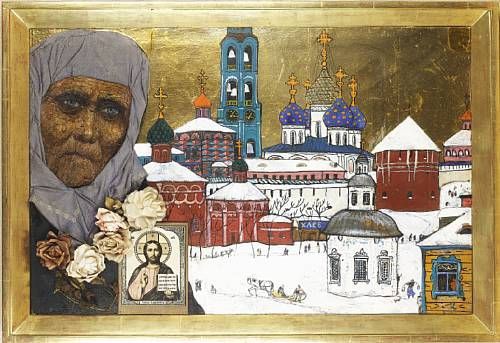
Ständig gegen den Westen protestierend
Gemeinsamkeiten von »konservativen Revolutionären« in Deutschland und russischen Slawophilen
Alexander Krassnov
Ex: http://www.deutsche-stimme.de
Der Konservatismus in Deutschland und Rußland weist eine lange Geschichte der Zusammenarbeit und gemeinsamer Traditionen auf. Ungeachtet aller Unterschiede und fatalen Fehler in der Außenpolitik gab es viele Berührungspunkte rechter Denker beider Völker, z.B. der Kampf gegen den Marxismus und Liberalismus als der beiden wirklich extremistischen Strömungen in der Weltpolitik. Dieser Beitrag spürt dem Einfluß des russischen Dichters Fjodor Dostojewski auf die »konservativen Revolutionäre« Arthur Moeller van den Bruck und Oswald Spengler nach.
Zur Einführung sei ein Zitat aus dem zweiten Band von Oswald Spenglers »Der Untergang des Abendlandes« angeführt, das sich völlig mit den Positionen der russischen Slawophilen von damals und heute deckt. Wenn Spengler über Rußland sprach, stellte er stets Lew Tolstoi und Fjodor Dostojewski gegeneinander. Den ersten Dichterdenker hielt er für einen Repräsentanten des europäisierten Rußlands, den zweiten hingegen für einen Vertreter des uralten und zugleich kommenden Volksrußlands.
So formulierte Oswald Spengler: »Tolstoi ist das vergangene, Dostojewski ist das kommende Rußland. Tolstoi ist mit seinem ganzen Inneren mit dem Westen verbunden. (…) Sein mächtiger Haß redet gegen Europa, von dem er selbst sich nicht befreien kann. Er haßt es in sich, er haßt sich. Er wird damit der Vater des Bolschewismus. (…) Diesen Haß kennt Dostojewski nicht. Er hat alles Westliche mit einer ebenso leidenschaftlichen Liebe umfaßt. Seine Seele ist apokalyptisch, sehnsüchtig, verzweifelt, aber dieser Zukunft gewiß. (…)
Tolstoi ist durchaus ein großer Verstand, ,aufgeklärt‘ und ,sozial gesinnt‘. Alles, was er um sich sieht, nimmt die späte, großstädtische und westliche Form des Problems ein. Jener ist ein Ereignis jenseits der europäischen Zivilisation. Er steht in der Mitte zwischen Peter dem Großen und dem Bolschewismus. Die russische Erde haben sie alle nicht zu Gesicht bekommen. Sein (Tolstois) Haß gegen Besitz ist nationalökonomischer, sein Haß gegen die Gesellschaft sozial-ethischer Natur; sein Haß gegen den Staat ist eine politische Theorie. Daher seine gewaltige Wirkung auf den Westen. Er gehörte irgendwie zu Marx, Ibsen und Zola. Seine Werke sind nicht Evangelien, sondern späte geistige Literatur.
Dostojewski gehört zu niemand, wenn nicht zu den Aposteln des Urchristentums. Dostojewski lebt schon in der Wirklichkeit einer unmittelbar bevorstehenden religiösen Schöpfung. (…) Dostojewski ist ein Heiliger, Tolstoi ist nur Revolutionär. Von ihm allein, dem echten Nachfolger Peters, geht der Bolschewismus aus: nicht das Gegenteil, sondern die letzte Konsequenz des Petrinismus (…) Das Christentum Tolstois war ein Mißverständnis. Er sprach von Christus und meinte Marx. Dem Christentum Dostojewskis gehört das nächste Jahrtausend.«
Diese tiefgründige Gegenüberstellung von Tolstoi und Dostojewski wirft die Frage auf: Woher hat ein deutscher Denker, der ein so fulminantes Werk über den Untergang der abendländischen Zivilisation geschaffen hat, solch eine »slawophilen-übliche« Einstellung zu diesem Problem?
Eine Erklärung: Anfang des 20. Jahrhunderts wurden in Deutschland die Werke des Dichters Fjodor Dostojewski geistig entdeckt. Einen entscheidenden Beitrag dazu leistete der herausragende konservativ-revolutionäre Denker Arthur Moeller van den Bruck sowie das Ehepaar Mereschkowski. Dem Ideenkreis der konservativen Revolutionäre gehörte auch Oswald Spengler an. Nicht zuletzt unter dem Einfluß von Dostojewski schrieb Moeller van den Bruck sein berühmtestes Werk »Das dritte Reich« (1923), das zu einem Katechismus der Konservativen Revolution wurde.
Die Idee eines dritten Reiches
Man sollte auch erwähnen, daß die Vision Moellers vom dritten Reich eine bestimmte Verbindung mit den Ideen des russischen Intellektuellen Dimitri Mereschkowski aufwies. Bereits im Jahre 1903 schuf Mereschkowski sein kritisches Werk »Lew Tolstoi und Dostojewski«. Neben einer Analyse des Schaffens und der ethischen Konzepte beider Denker entwickelte er dort seine Vorstellung einer neuen christlichen Besinnung. Das historische Christentum habe in der Religion zu stark das Geistige betont, was zu einer Vernachlässigung des Materiellen geführt habe. Seine Lehre bezeichnete Mereschkowski als »mystischen Materialismus« und plädierte für eine mystische Einigung des Geistigen und des Materiellen. Die Weltgeschichte faßte er dabei im Sinne Hegels als eine dialektische Dreiheit auf, wobei er das Heidentum für eine These und das Christentum für eine Antithese hielt. Anfang des 20. Jahrhunderts sollte es nach seiner Meinung zu einer Synthese kommen, deren Realisierung er als eine Art »Drittes Testament« verstand. Das Dritte Testament hielt Mereschkowski für ein neues Religionszeitalter im Leben der ganzen Menschheit.
In seinem Werk schuf Moeller van den Bruck eine ähnliche Triade im Bereich der Politik; er träumte von einem neuen politischen System ohne Linke und ohne Rechte, in dem die Idee des Reiches und die Idee des Menschen verknüpft wären.
In diesem Zusammenhang ist zu betonen, daß die konservativen Revolutionäre in Deutschland eine allgemein positive Einstellung zu Rußland hatten. Ihre russenfreundlichen Aussagen zeugen davon, daß sie im geistigen Leben Rußlands das erraten zu haben glaubten, was wohl keine Umsetzung ihrer Ideale in der Gegenwart verkörperte, aber eine Umsetzung in der Zukunft versprach. Rußlandfreundliche Stimmungen waren in den entsprechenden Denkzirkeln weitverbreitet und beständig, und es läßt sich dies für eines der Hauptmerkmale des revolutionären Konservatismus in Deutschland halten.
Anfang des 20. Jahrhunderts nahm der kulturelle Dialog einen besonderen Platz im deutsch-russischen Verhältnis ein. Es war eine Zeit gewaltiger Wandlungen in allen Bereichen des menschlichen Lebens und der Umwertung der Werte in beiden Richtungen. Deshalb ist es kein Zufall, daß viele Vertreter der Konservativen Revolution – neben Moeller van den Bruck und Oswald Spengler auch der frühe Thomas Mann – in ihrem Schaffen einen großen Einfluß russischer Kultur und Literatur, in erster Linie von Dostojewski, verraten. Dank Fjodor Dostojewski kehrten nach Deutschland die Ideen zurück, die einst die Slawophilen von den deutschen Romantikern geerbt hatten. Viele deutsche Konservative, wie z.B. Thomas Mann, haben die antiwestlichen Ideen Dostojewskis ausgedeutet und von Deutschland als von einem Staat geschrieben, der ständig gegen den Westen und dessen Nihilismus protestiert.
Die Publizistik Moellers war von seinem kulturellen und politischen Interesse an den östlichen Nachbarstaaten geprägt. Dieses Interesse hatte mehrere Wurzeln, darunter die außenpolitischen Traditionen Preußens im 19. Jahrhundert sowie die Entgegensetzung der lebendigen Kultur des Ostens und der sterbenden Zivilisation des Westens in den Werken deutscher Kulturphilosophen.
Wenn Moeller über seine Faszination von Dostojewski sprach, redete er ständig über die Jugend des Russentums, das die Kontakte mit seinen Ursprüngen noch nicht verloren habe und voll von schöpferischen Kräften sei. Moellers Propagierung des russischen Genies führte dazu, daß in Deutschland eine Art Dostojewski-Kult entstand. Er beließ es aber nicht bei der Herausgabe der Werke des Russen, sondern interpretierte sie samt der geheimnisvollen russischen Seele. Dies war naheliegend, da Dostojewskis Werke um scharfe Fragen der Freiheit und des Willens, der Gewalt und des Rechtes, des Guten und des Bösen in enger Verbindung mit dem russischen Inneren kreisten. In der Tiefe der russischen Seele erblickte der konservative Revolutionär Spuren einer ständigen Konfrontation mit dem westlichen Einfluß. Russische Literatur widerspiegelte für ihn alles Ursprüngliche, Reingehaltene und Fremde im Gegensatz zur entfremdeten und sterilen Lebenswelt des Westens.
Der Verfasser des »Dritten Reiches« sah in Dostojewskis Werken »die Beschreibung des Lebens, das wir gestern gelebt haben (…) Die von Dostojewski dargestellten Leute sind russische Leute. Aber wir erraten an ihnen vieles von uns selbst.« In diesem Sinne war der russische Schriftsteller ein echter Lehrer für den deutschen konservativen Denker. Moeller van den Bruck, der geistige Leitstern des legendären Juni-Klubs, lernte von dem Russen in erster Linie, an die große Mission seines Volkes zu glauben und dieses als größten Wert zu betrachten.
Absage an westliche »Werte«
Besonders anziehend wirkte an Dostojewski stets seine Ablehnung hohler westlicher »Werte«. Auch Moeller war von der Überzeugung durchdrungen, im Westen sterbe der Volksgeist und das organische Ganze des Volkes. Er behauptete, daß es den Deutschen an russischer Geistigkeit fehle, die Deutschland als Antithese gegen den Westen brauche. Aus Dostojewskis Erbe speiste sich auch die Wahrnehmung Deutschlands als eines stets gegen den Westen protestierenden Landes sowie die Idee der jungen Völker, welche die alten Nationen Europas herausfordern. Die Vorstellung der Slawophilen von der Jugend slawischer Völker verwandelte sich in Moellers Publizistik in die der Jugend des deutschen Volkes. Dabei kritisierte dieser wie die Slawophilen die westlichen »Werte« von Rationalismus, Individualismus und Materialismus. Solche Gegenüberstellung war eine Art kulturkritische Abstraktion des Gegensatzes von Westen und Osten.
Es sei auch erwähnt, daß der Weg Dostojewskis zu den Herzen deutscher Leser gar nicht leicht war. Das Interesse erreichte seinen Höhepunkt, als die Prozesse der gesellschaftlichen Modernisierung in Deutschland immer gewaltiger und schneller wurden. Eine ganze Generation deutscher Neuromantiker nahm den Mystiker aus dem Osten begeistert auf. Seitdem war das Thema Rußland immer häufiger in Kreisen deutscher Intellektueller zu finden. Stephan Zweig sagte zum Beispiel: »Nur über einen deutschen Dostojewski kann die Welt zum russischen Original kommen.« Viele deutsche Schriftsteller – genannt seien nur Friedrich Nietzsche, Rainer Maria Rilke, Thomas Mann, Hermann Hesse – bezeichneten die Werke Dostojewskis als die gewaltigste Erfahrung, die ihr Schaffen geprägt habe. Der Kulturphilosoph Oswald Spengler begann sogar unter dem Einfluß seiner Romane die russische Sprache zu lernen.
Nach dem Ersten Weltkrieg wurden die Gedanken des Russen über die Rettung Europas durch junge Völker und über Deutschland als ständig gegen den Westen protestierendes Land zu einem der Hauptthemen konservativer deutscher Denker.
Der Einfluß von Dostojewskis russischem Messianismus im Hinblick auf das europäisierte Rußland läßt sich in den Werken Oswald Spenglers und des Panslawisten Nikolaj Danilewski ausmachen. Spenglers Gedanken zu der Pseudomorphose Rußlands unter Peter dem Großen ähneln der Kritik Danilewskis am »Europawahnsinn«, die er in seinem Werk »Rußland und Europa« an die Adresse der russischen Oberschicht richtete. Spengler benannte das Problem so: »Eine zweite Pseudomorphose liegt heute vor unseren Augen: das petrinische Rußland. (…) Auf diese Moskowiterzeit der großen Bojarengeschlechter und Patriarchen, in der beständig eine altrussische Partei gegen die Freunde westlicher Kultur kämpfte, folgt mit der Gründung von Petersburg (1703) die Pseudomorphose, welche die primitive russische Seele erst in die fremden Formen des hohen Barock, dann der Aufklärung, dann des 19. Jahrhunderts zwang. Peter der Große ist das Verhängnis des Russentums geworden. (…)
Der primitive Zarismus von Moskau ist die einzige Form, welche noch heute dem Russentum gemäß ist, aber er ist in Petersburg in die dynastische Form Westeuropas umgefälscht worden. Der Zug nach dem heiligen Süden, nach Byzanz und Jerusalem, der tief in allen rechtgläubigen Seelen lag, wurde in eine weltmännische Diplomatie mit dem Blick nach Westen verwandelt. (…) Ein Volkstum (dessen Bestimmung es war, noch auf Generationen hin geschichtslos zu leben,) wurde in eine künstliche und unechte Geschichte gezwängt, deren Geist vom Urrussentum gar nicht begriffen werden konnte.«
In der Schrift »Preußentum und Sozialismus« ging Spengler – ganz im Sinne der Slawophilen – mit dem »Europawahnsinn« der russischen Oberschicht ins Gericht: »Dies kindlich dumpfe und ahnungsschwere Russentum ist nun von Europa aus durch die aufgezwungenen Formen einer bereits männlich vollendeten, fremden und herrischen Kultur gequält, verstört, verwundet und vergiftet worden. Städte von unserer Art, mit dem Anspruch unserer geistigen Haltung, wurden in das Fleisch dieses Volkstums gebohrt, überreife Denkwesen, Lebensansichten, Staatsideen, Wissenschaften dem unentwickelten Bewußtsein eingeimpft.
Um 1700 drängt Peter der Große dem Volk den politischen Barockstil, Kabinettdiplomatie, Hausmachtpolitik, Verwaltung und Heer nach westlichem Muster auf; um 1800 kommen die diesen Menschen ganz unverständlich englischen Ideen in der Fassung französischer Schriftsteller herüber, um die Köpfe der dünnen Oberschicht zu verwirren; noch vor 1900 führen die Büchernarren der russischen Intelligenz den Marxismus, ein äußerst kompliziertes Produkt westeuropäischer Dialektik, ein, von dessen Hintergründen sie nicht den geringsten Begriff haben. Peter der Große hat das echt russische Zarentum zu einer Großmacht im westlichen Staatssystem umgeformt und damit seine natürliche Entwicklung verdorben, und die Intelligenz, selbst ein Stück des in diesen fremdartigen Städten verdorbenen echt russischen Geistes, verzerrte das primitive Denken des Landes mit seiner dunklen Sehnsucht nach eigenen, in ferner Zukunft liegenden Gestaltungen wie dem Gemeinbesitz von Grund und Boden zu kindischen und leeren Theorien im Geschmack französischer Berufsrevolutionäre.
Petrinismus und Bolschewismus haben gleich sinnlos und verhängnisvoll mißverstandene Schöpfungen des Westens, wie den Hof von Versailles und die Kommune von Paris, dank der unendlichen russischen Demut und Opferfreude in starke Wirklichkeiten umgesetzt.«
Auch in »Preußentum und Sozialismus« wurde der abendländischen Welt die russische entgegengesetzt, und damit die kommende, noch schwer begreifbare Kultur des Ostens positiv von dem in die bloße Zivilisation absinkenden Westen abgesetzt: »Ich habe bis jetzt von Rußland geschwiegen; mit Absicht, denn hier trennen sich nicht zwei Völker, sondern zwei Welten. Die Russen sind überhaupt kein Volk wie das deutsche und englische, sie enthalten die Möglichkeiten vieler Völker der Zukunft in sich, wie die Germanen der Karolingerzeit. Das Russentum ist das Versprechen einer kommenden Kultur, während die Abendschatten über dem Westen länger und länger werden. Die Scheidung zwischen dem russischen und abendländischen Geist kann nicht scharf genug vollzogen werden. Mag der seelische und also der religiöse, politische, wirtschaftliche Gegensatz zwischen Engländern, Deutschen, Amerikanern, Franzosen noch so tief sein, im Vergleich zum Russentum rücken sie sofort zu einer geschlossenen Welt zusammen.«
Spengler war sich sicher, daß das untergehende Abendland durch ein junges Rußland abgelöst werde, obgleich seine mentalen und geographischen Umrisse für ihn noch unklar waren. Er glaubte fest daran, daß europäische Institutionen wie Kapitalismus und Bolschewismus bald an der russischen Kultur zugrundegehen würden.
Diese Hoffnung auf Rettung des je Eigenen gegen die Nivellierungsmacht der westlichen Zivilisation verband die konservativen Revolutionäre in Deutschland mit den Slawophilen in Rußland – eine Ideenverbindung, die heute nötiger denn je ist, um die westlichen Demokraturen geschichtlich entsorgen zu können. Denn wie formulierte der Nationalbolschewist Ernst Niekisch in seinem Beitrag »Revolutionäre Politik« (1926) zeitlos: »Westlerisch sein heißt: mit der Phrase der Freiheit auf Betrug ausgehen, mit dem Bekenntnis zur Menschlichkeit Verbrechen in die Wege leiten, mit dem Aufruf zur Völkerversöhnung Völker zugrunderichten.«
Alexander Krassnov
00:05 Publié dans Littérature, Révolution conservatrice | Lien permanent | Commentaires (0) | Tags : allemagne, russe, moeller van den bruck, lettres, littérature, littérature russe, lettres russes |  |
|  del.icio.us |
del.icio.us |  |
|  Digg |
Digg | ![]() Facebook
Facebook
ELEMENTOS Nº 55. EZRA POUND. LOCURA CONTRA LA USURA
00:05 Publié dans Littérature, Nouvelle Droite, Revue | Lien permanent | Commentaires (0) | Tags : littérature, lettres, littérature américaine, lettres américaines, ezra pound, nouvelle droite, revue |  |
|  del.icio.us |
del.icio.us |  |
|  Digg |
Digg | ![]() Facebook
Facebook

Ex: http://fahrenheit451.hautetfort.com
 Pour écrire ce livre, Paolo Rumiz a entrepris un périple original de 33 jours sur plus de 6000 km, à travers 10 pays, en bus, en train, en auto-stop, à pied, simplement muni d’un sac à dos de 6 kilos contenant le strict minimum : de quoi se vêtir et de quoi écrire. Pourquoi alors traverser l’Europe à la verticale, depuis le cap Nord en Norvège jusqu’à Odessa en Ukraine ? Né en 1947 à Trieste, ville carrefour, à cheval entre l’occident et l’orient, aux premières loges des bouleversements géopolitiques des confins de l’Europe, Paolo Rumiz est parti à la recherche de la frontière, cette ligne d'ombre que l’on franchit avec le sentiment de l'interdit, mais aussi à la poursuite de l’âme slave, cette chimère disséminée toujours plus à l’Est.
Pour écrire ce livre, Paolo Rumiz a entrepris un périple original de 33 jours sur plus de 6000 km, à travers 10 pays, en bus, en train, en auto-stop, à pied, simplement muni d’un sac à dos de 6 kilos contenant le strict minimum : de quoi se vêtir et de quoi écrire. Pourquoi alors traverser l’Europe à la verticale, depuis le cap Nord en Norvège jusqu’à Odessa en Ukraine ? Né en 1947 à Trieste, ville carrefour, à cheval entre l’occident et l’orient, aux premières loges des bouleversements géopolitiques des confins de l’Europe, Paolo Rumiz est parti à la recherche de la frontière, cette ligne d'ombre que l’on franchit avec le sentiment de l'interdit, mais aussi à la poursuite de l’âme slave, cette chimère disséminée toujours plus à l’Est.
C’est donc un voyage intéressant qui nous conduit dans ces terres oubliées du tourisme, aux noms exotiques disparus dans le grand chambardement géopolitique du siècle dernier, voire bien avant (Botnie, Livonie, Latgale, Polésie, Carélie, Courlande, Mazurie, Volhynie, Ruthénie, Podolie, Bucovine, Bessarabie, Dobrogée). Tous ces noms à la magie incertaine sont de formidables lieux de rencontres diverses et marquantes qui dessinent par petites touches, par micro récits du quotidien ou du passé, une autre Europe. Voici, les Samis, les derniers pasteurs de rennes dans la péninsule de Kola, le jeune Alexandre, un orphelin au grand coeur qui rentre chez lui après 2 ans de prison, les pélerins ou les moines des îles Solovki et encore tant d’autres.
Il y a dans l’écriture de Paolo Rumiz beaucoup de tendresse et de mélancolie par rapport à ces endroits qu’il traverse et ces personnages qu’il rencontre. On sent qu’il a un amour profond pour cette région du monde, pour le style de vie des personnes qu’il rencontre et pour ce qu’il appelle l'âme slave. Il a envie de montrer à quel point cette âme slave est partie intégrante de l’Europe alors même que cette dernière ne cesse de prendre ses distances avec elle et de la maintenir plus ou moins à l’écart, à sa périphérie. Mais qu’est-ce que cette âme slave au juste ? Difficile à dire exactement. Et c’est peut-être là où le bât blesse avec le livre de Paolo Rumiz.
Ce voyage à la marge de l’Europe finit par être un voyage chez des gens plus ou moins en marge. Paolo Rumiz fait-il l’éloge de la rusticité, de la simplicité, voire du dénuement – pour ne pas utiliser le terme pauvreté? Serait-ce alors ça la fameuse âme slave ? L’âme du pauvre ? Certainement pas, et j’exagère sans doute un peu mais il est clair qu’un certain dégoût de l’Europe occidentale et de son développement est présent de manière plus que diffuse dans le livre. S’il ne s’agissait seulement que de la détestation de l’Europe bureaucratique et de sa forme institutionnelle (UE), passe encore, mais il s’agit de quelque chose de plus viscéral et qui présente le monde ouest-européen comme faux, artificiel, superficiel, chronophage, loin de la nature etc.
Alors quoi, la solution, ce serait pour les autres parties de l’Europe de rester dans cette marge, ce dénuement que Paolo Rumiz décrit durant son périple ? Alors quoi, on ne rencontre pas de gens simples, authentiques, partageant des valeurs de partage, d’empathie en Europe occidentale, admirateurs de la nature (ok, peut-être un peu moins) ? Alors quoi la solution, c’est juste ça ; aller à l’Est, l’âme slave ? Paolo Rumiz n’est certes pas dans une totale idéalisation de cette partie du monde (un peu quand même), mais clairement la violence, le racisme latent, le myticisme inquiétant, le culte de l’argent ou de la fraude ou encore les ravages de l’alcoolisme - pour citer en vrac quelques éléments – ne sont qu’à la périphérie de son propos. Le livre n’avait pas vraiment besoin d’être accompagné de cette sourde antipathie – qui n’est pas une critique – de l’Europe occidentale.
Malgré cet aspect parfois irritant, le livre de paolo Rumiz est intéressant en nous faisant découvrir des contrées peu courues et en revenant sur l’existence de frontières dures, de leurs logiques de mur, de périphérie et d’exclusion dont l’Européen lambda peut avoir de nos jours perdu la notion, la tangibilité.
00:05 Publié dans Littérature, Voyage | Lien permanent | Commentaires (0) | Tags : italie, voyage, livre, littérature, littérature italienne, lettres, lettres italiennes, paolo rumiz |  |
|  del.icio.us |
del.icio.us |  |
|  Digg |
Digg | ![]() Facebook
Facebook
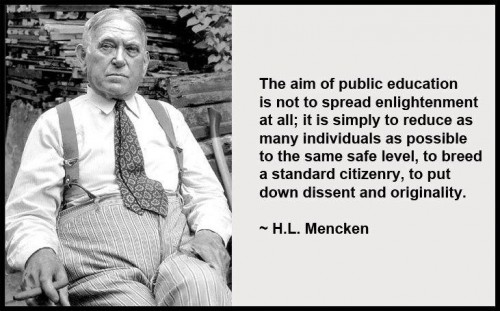
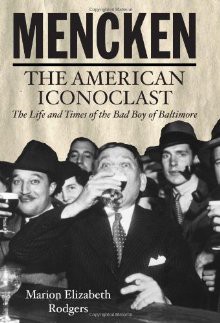 November 1-3, 2013
November 1-3, 2013
Friday, November 1
5:00-7:00 PM - Registration
7:00-10:00 PM - Banquet
Introduction - Richard Spencer
Presidential Address - Paul Gottfried
Life on the Traditionalist Fringe - Tito Perdue
Saturday, November 2nd
9:00-10:15 AM - Panel 1: Decadence and the Family
Moderator: Byron Roth
Dysgenics and Genetic Decline - Henry Harpending
The War on Masculinity and the Traditional Family - Steven Baskerville
10:45 AM – 12:00 PM - Panel 2: Social Decadence
Moderator: Keith Preston
The “Inclusion” Obsession - James Kalb
In Defense of Decadence - Richard Spencer
An Introduction to Decadence - Thomas Bertonneau
 12:30-2:00 PM - Lunch
12:30-2:00 PM - Lunch
The Normalization of Perversity - Special Guest
2:30-4:00 PM - Panel 3: Political Decadence
Moderator: Robert Weissberg
Decadence and Democracy - Michael Hart
The End of Citizenship - Carl Horowitz
Politics and Intelligence - John Derbyshire
7:00-10:00 PM - Banquet: Thrown off the Bus
William Regnery, John Derbyshire, Paul Gottfried, Robert Weissberg
Saturday, November 3rd
9:00-11:00 AM - Breakfast for H.L. Mencken Club Members Only
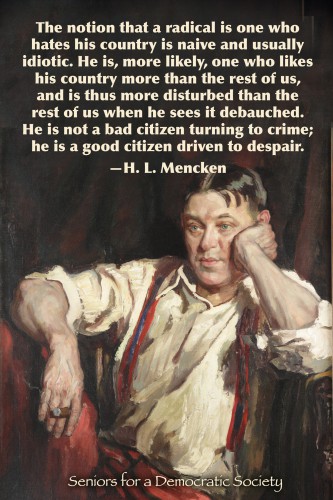

Steven Baskerville
Stephen Baskerville is Associate Professor of Government at Patrick Henry College and Research Fellow at the Howard Center for Family, Religion, and Society, the Independent Institute, and the Inter-American Institute. He holds a PhD from the London School of Economics and has taught political science and international affairs at Howard University, Palacky University in the Czech Republic, and most recently as a visiting Fulbright scholar at the Russian National University for the Humanities. More recently, he has turned his full attention to the politics of the family in global perspective, and his most recenty book is Taken Into Custody: The War against Fathers, Marriage, and the Family (Cumberland House, 2007).
Thomas Bertonneau, visiting Professor of English at the State University of New York College, Oswego, New York. He holds a Ph.D. in Comparative Literature from UCLA. He has contributed to numerous journals and websites including Alternative Right, and is co-author of The Truth Is Out There: Christian Faith and the Classics of TV Science Fiction.

Thomas Bertonneau

John Derbyshire
John Derbyshire is a mathematician and cultural commentator. He is the author of several other books including Prime Obsession: Bernhard Riemann and the Greatest Unsolved Problem in Mathematics (2003). He writes for VDare.com and TakiMag.com.
Paul Gottfried is the President and Co-founder of the H.L. Mencken Club, and the author of nine books including Leo Strauss and the Conservative Movement in America (2012)

Paul Gottfried

Henry Harpending
Henry Harpending is distinguished professor of anthropology and Thomas Chair at the University of Utah, and co-author of the book The 10,000 Year Explosion (2009). Together with Gregory Cochran, he contributes to the blog “West Hunter“.
Michael Hart is the author of three books on history, various scientific papers, and controversial articles on various other subjects. His best known book is The 100: A Ranking of the Most Influential Persons in History. His most recent book is The Newon Awards: A History of Genius in Science and Technology , published this year by Washington Summit Publishers.

Michael Hart

Carl Horowitz
Carl F. Horowitz is affiliated with the National Legal and Policy Center, a nonprofit organization dedicated to promoting ethics and accountability in public life. He holds a Ph.D. in urban planning, and specializes in labor, immigration and housing policy issues. Previously, he had been Washington correspondent with Investor’s Business Daily, housing and urban affairs policy analyst with The Heritage Foundation, and assistant professor of urban and regional planning at Virginia Polytechnic Institute.
Jim Kalb is a lawyer (J.D., Yale Law School) and author, The Tyranny of Liberalism: Understanding and Overcoming Administered Freedom, Inquisatorial Tolerance, and Equality by Command (2008). His latest book is Against Inclusiveness: How the Diversity Regime Is Flattening America and the West and What to Do about It .

James Kalb
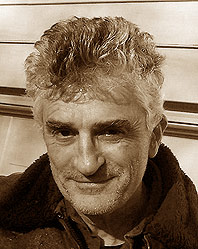
Tito Perdue
Tito Perdue is the author of several works of fiction. He has been dubbed “one of the most important contemporary Southern writers” by the New York Press, and his iconic character Lee Pefley has been called “a reactionary snob” by Publisher’s Weekly.
Keith Preston is the chief editor of AttacktheSystem.com. He was awarded the 2008 Chris R. Tame Memorial Prize by the United Kingdom’s Libertarian Alliance for his essay, “Free Enterprise: The Antidote to Corporate Plutocracy.”
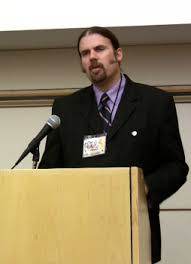
Keith Preston
William Regnery is the founder of the Charles Martel society, publisher of The Occidental Quarterly and a past chairman of the National Policy Institute, which he co-founded with Sam Francis.
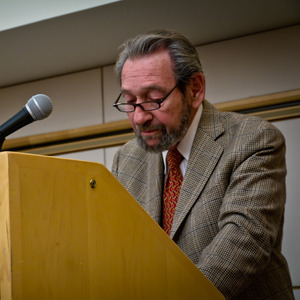
Byron Roth is Professor Emeritus of Psychology, Dowling College and is author, most recently, of The Perils of Diversity: Immigration and Human Nature. His work has appeared in The Journal of Conflict Resolution, The Public Interest, Academic Questions, and Encounter. His books include, Decision Making: Its Logic and Practice, co-authored with John D. Mullen and Prescription for Failure: Race Relations in the Age of Social Science.
Richard Spencer is a former assistant editor at The American Conservative and Executive Editor at Taki’s Magazine (takimag.com); he was the founder and Editor of AlternativeRight.com (2010-2012). Currently, he is President and Director of the National Policy Institute and Washington Summit Publishing and Editor of Radix Journal.
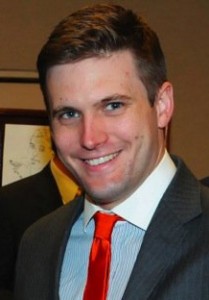
Richard Spencer
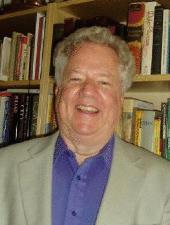
Robert Weissberg
Robert Weissberg is author of Pernicious Tolerance and other books including Bad Students, not Bad Schools (2012). He is a Professor Emeritus of Political Science, University of Illinois
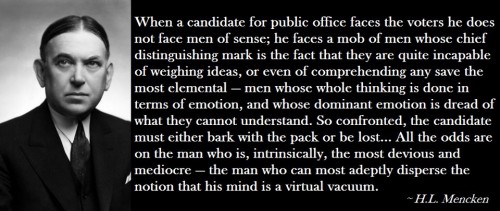
00:05 Publié dans Evénement, Littérature | Lien permanent | Commentaires (0) | Tags : littérature, philosophie, lettres, lettres américaines, littérature américaine, h. l. mencken, événement, états-unis |  |
|  del.icio.us |
del.icio.us |  |
|  Digg |
Digg | ![]() Facebook
Facebook